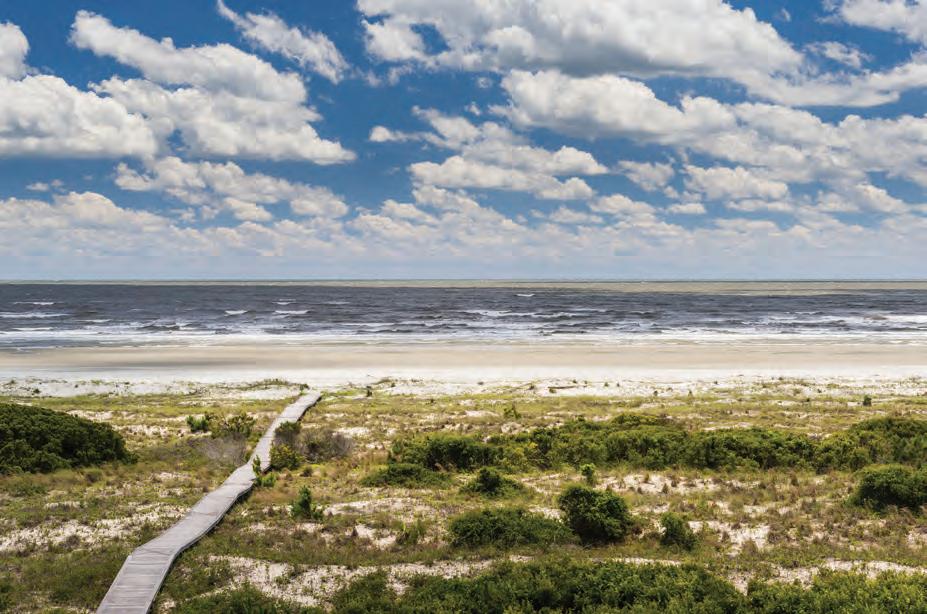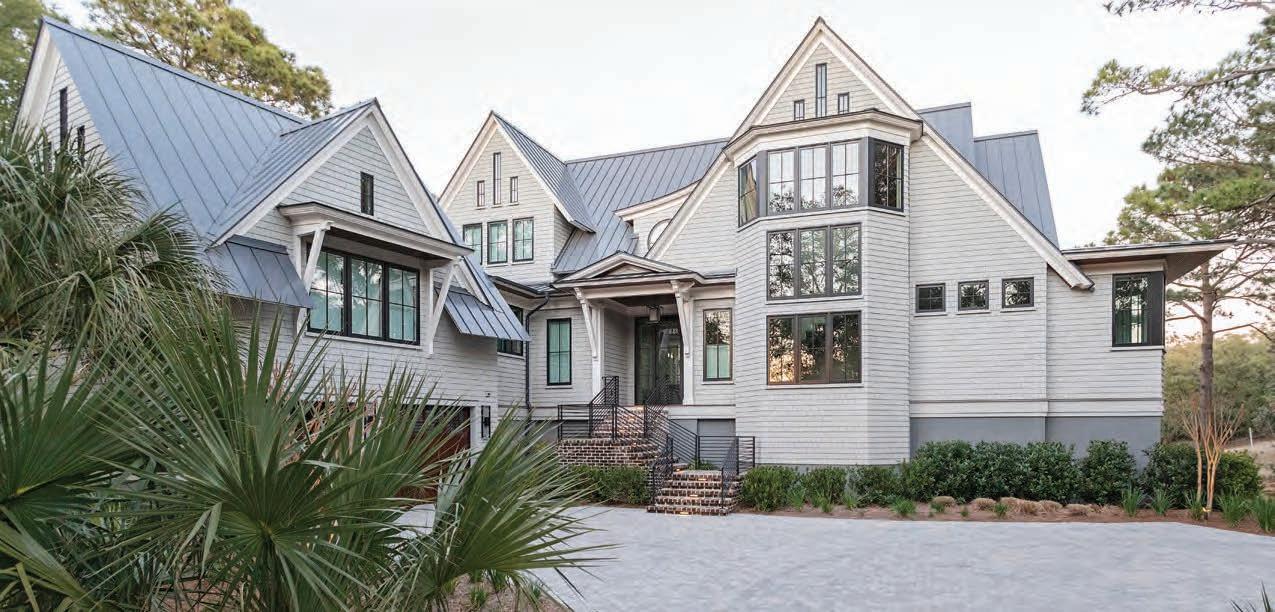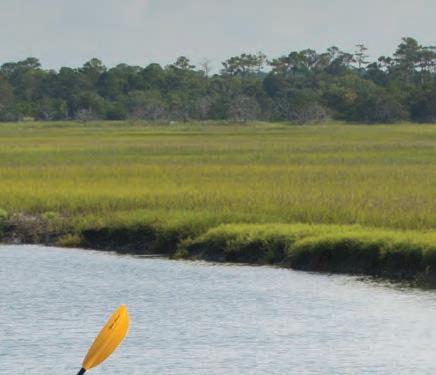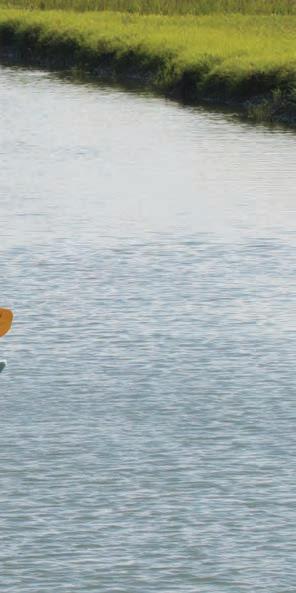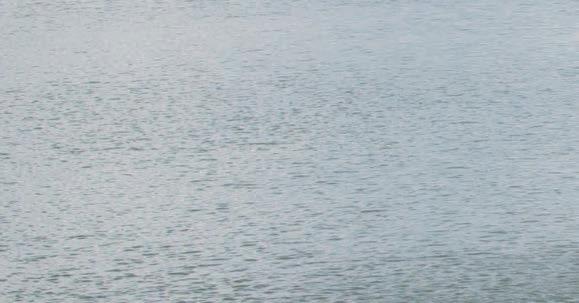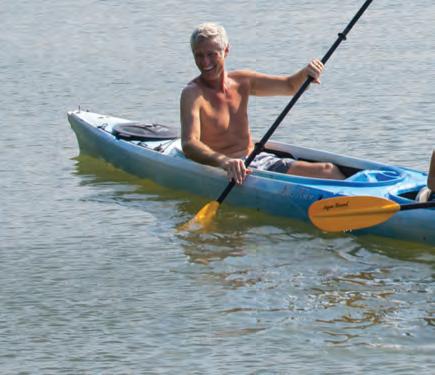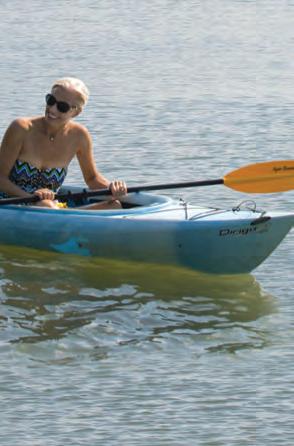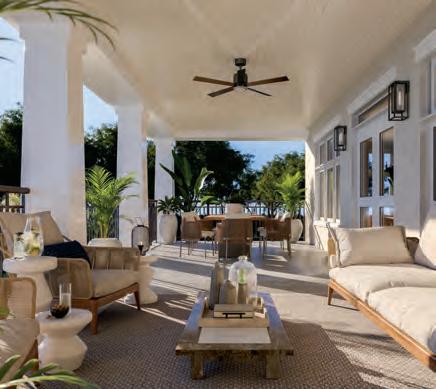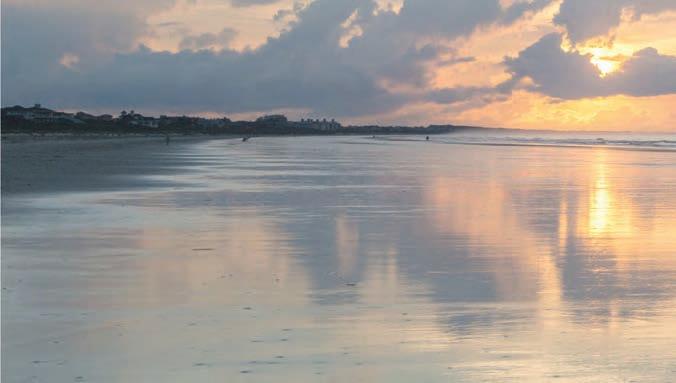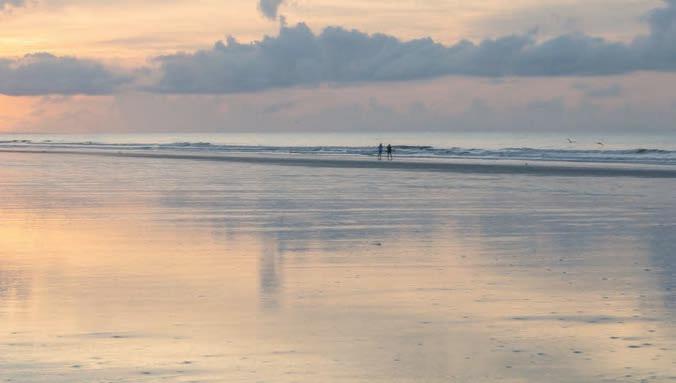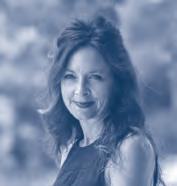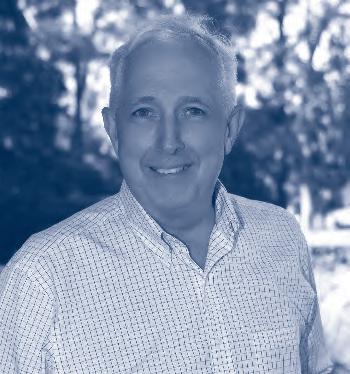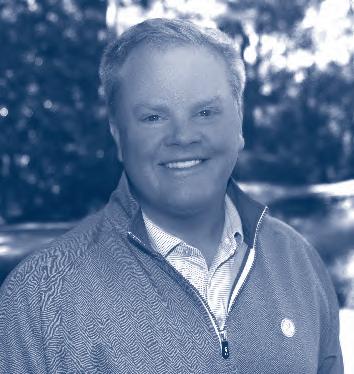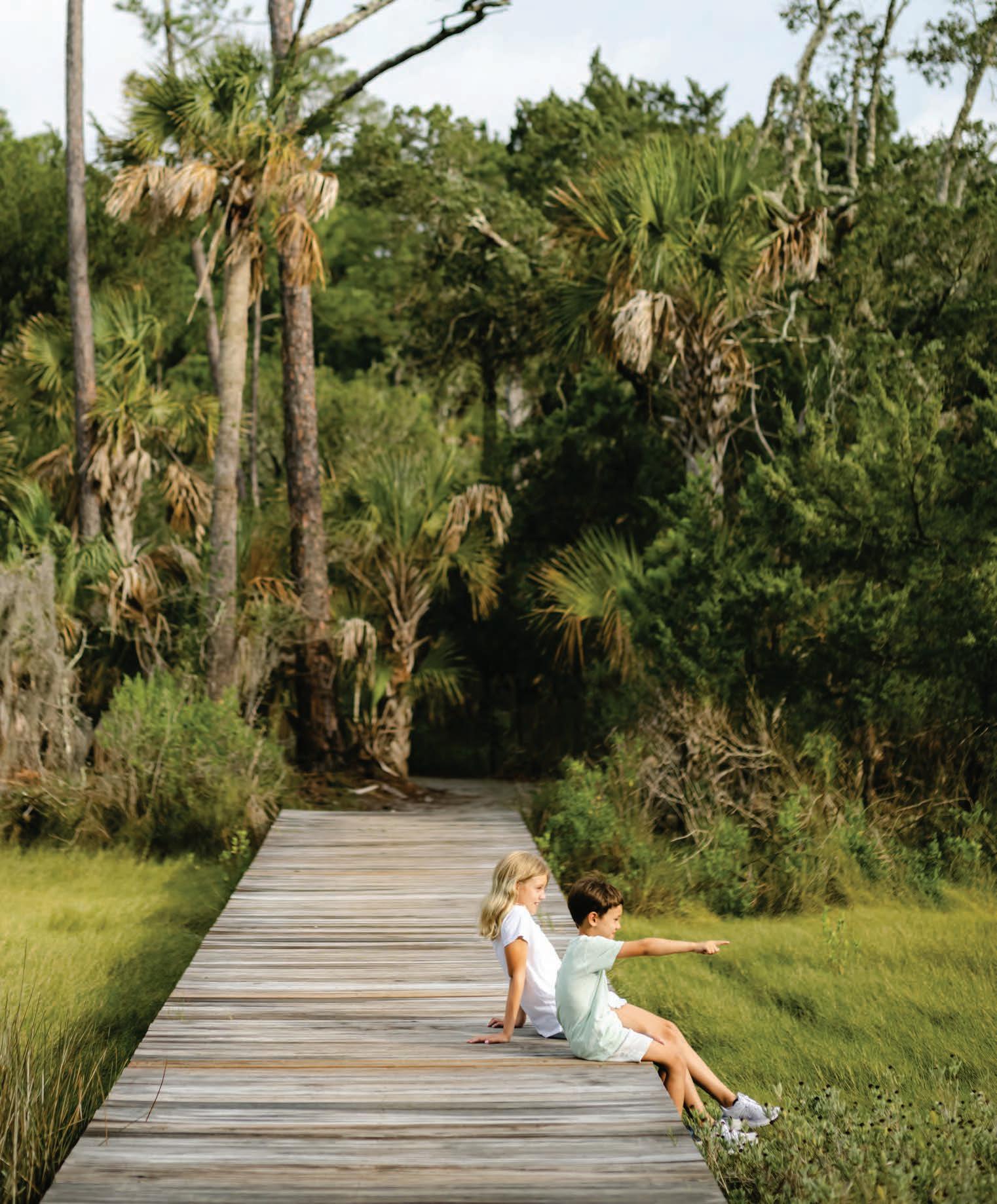
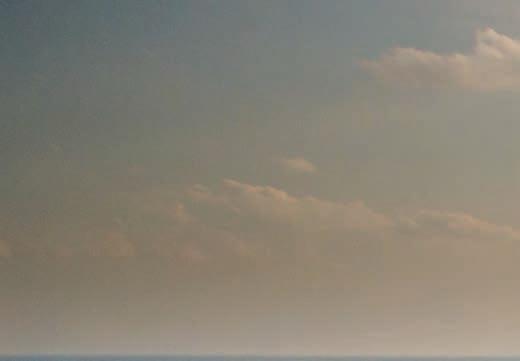
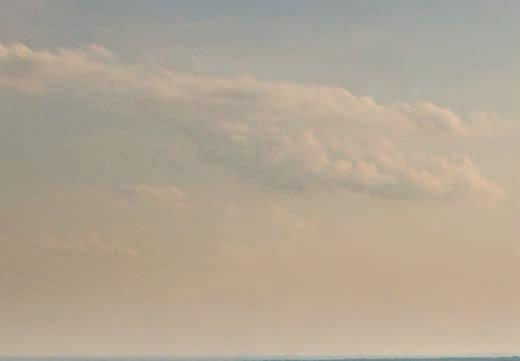
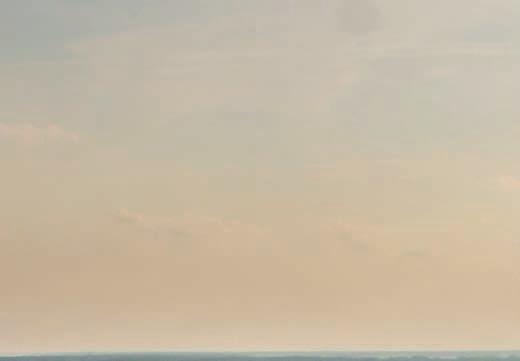


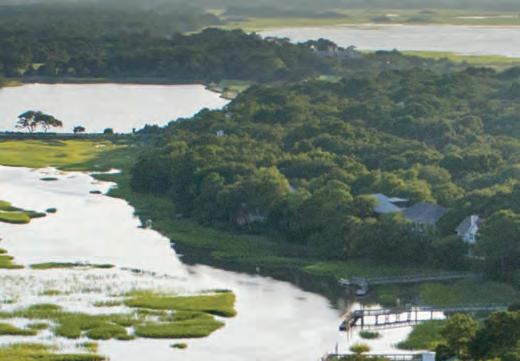
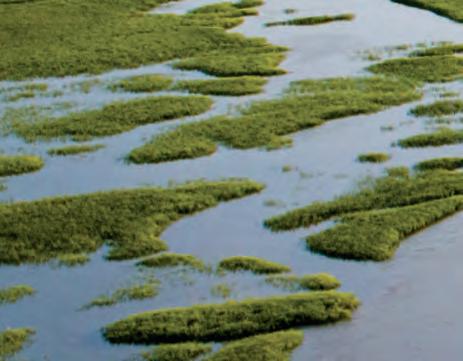
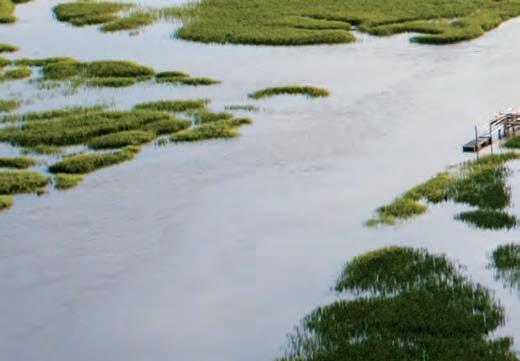
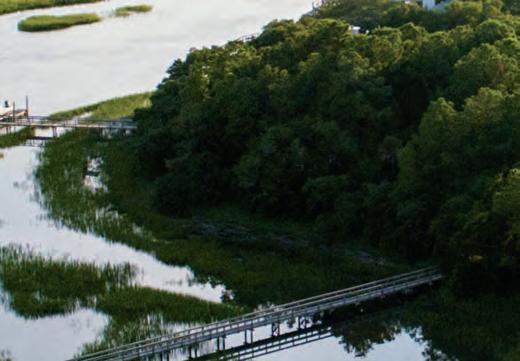
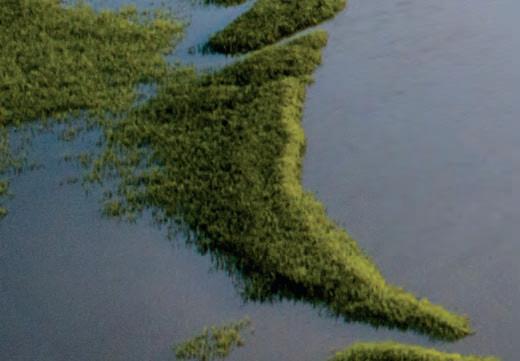
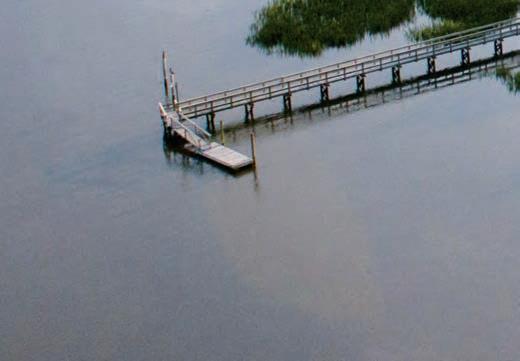











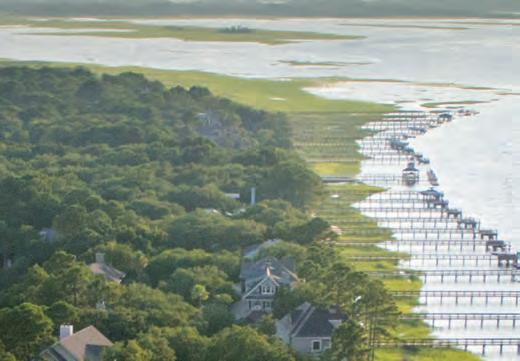
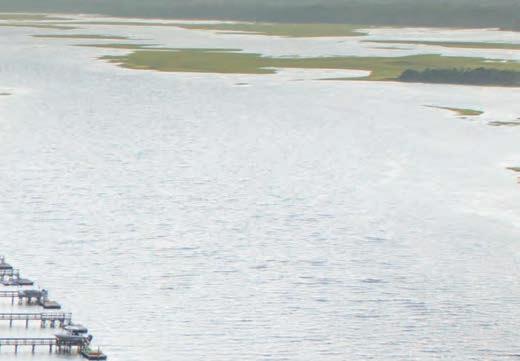
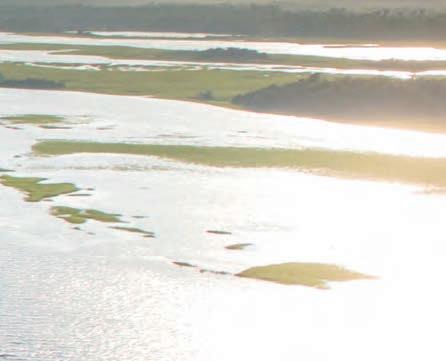





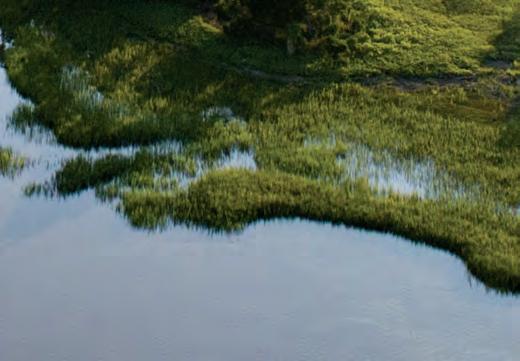
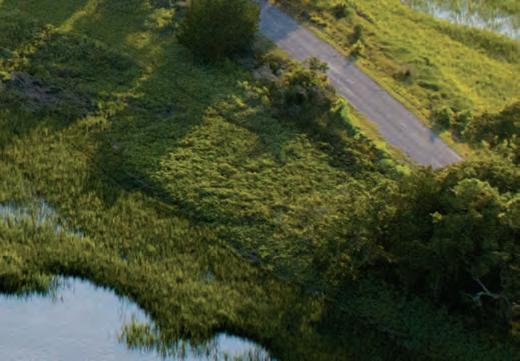





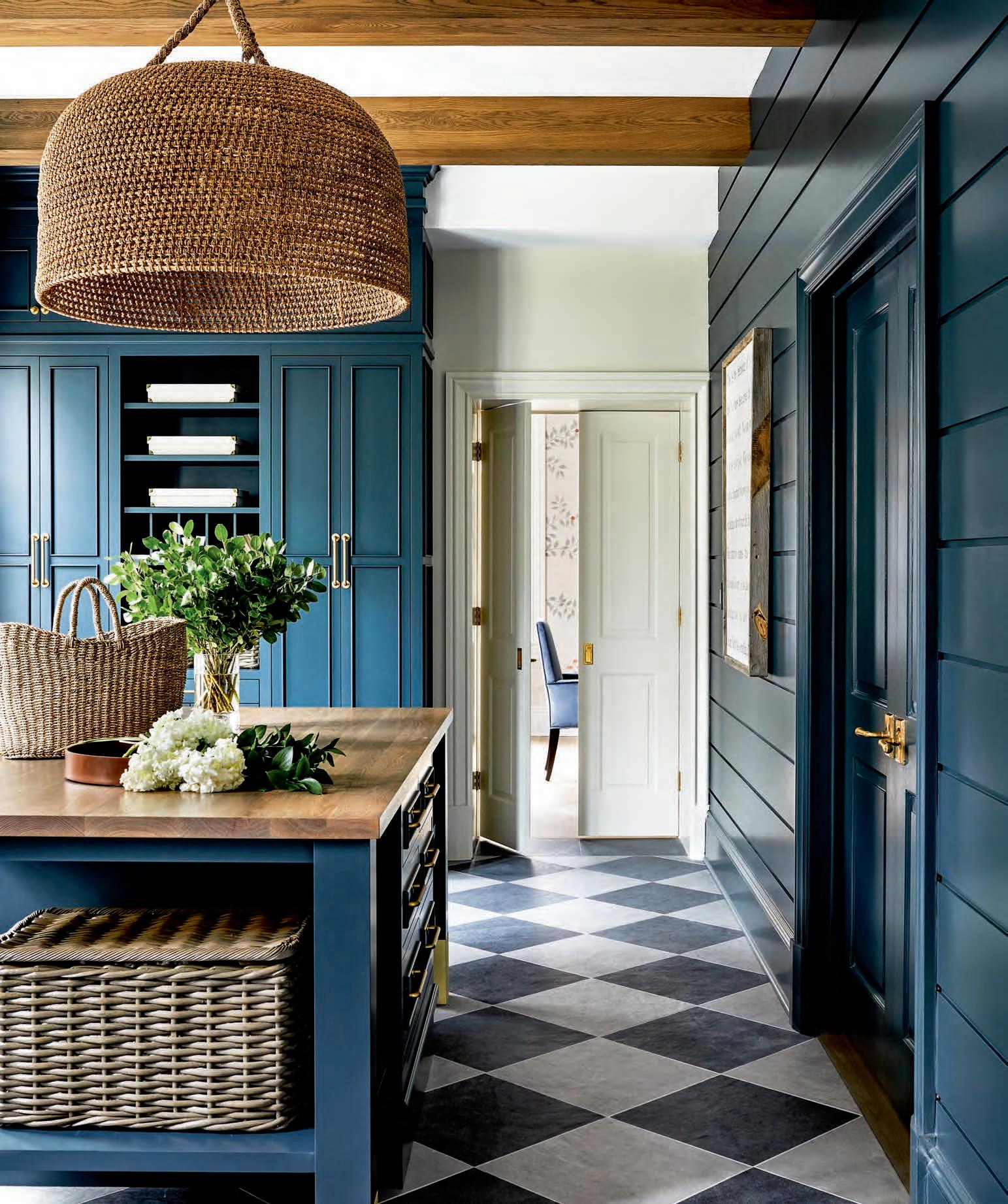
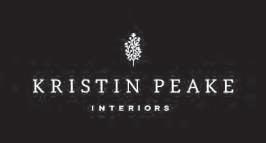




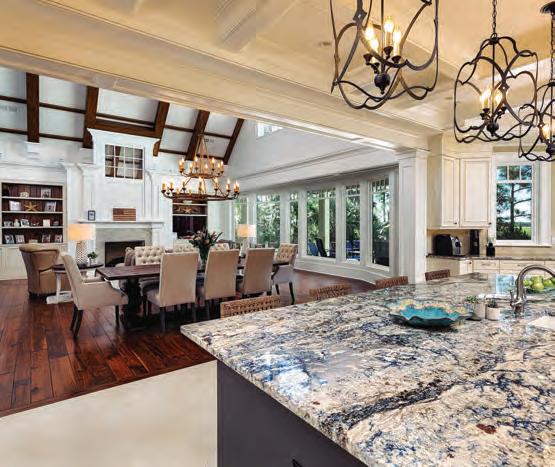
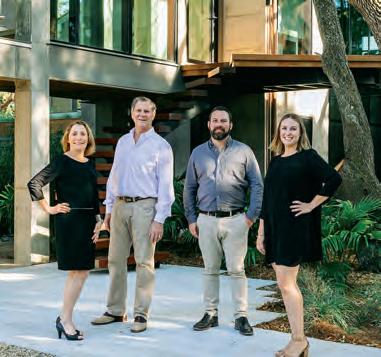















































A FULL-SERVICE CONSTRUCTION MANAGEMENT FIRM DEDICATED TO EXCEEDING EXPECTATIONS.
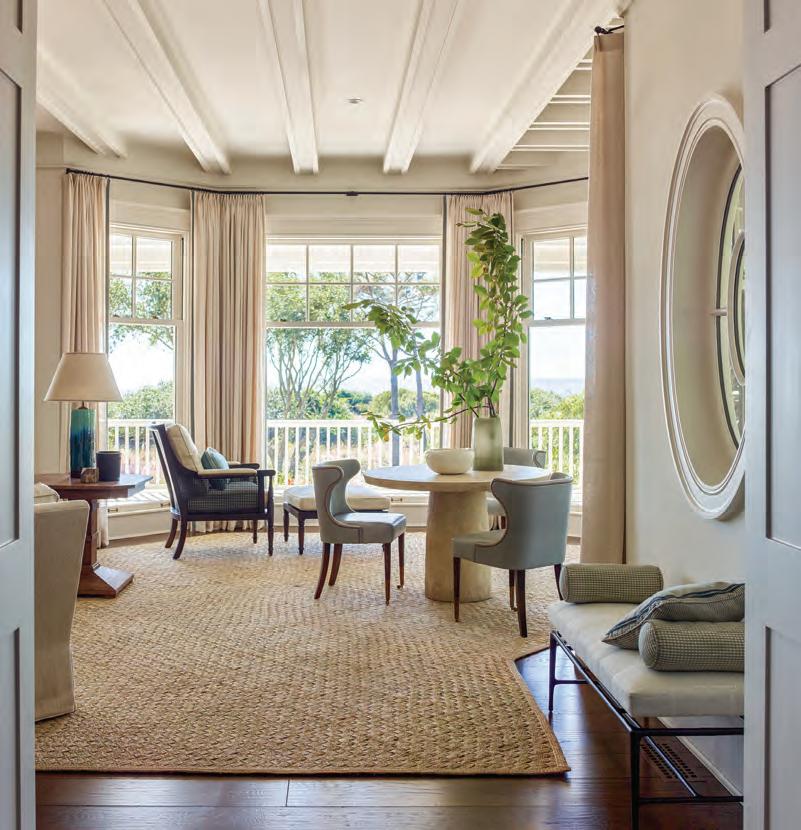






32 Years serving the Lowcountry














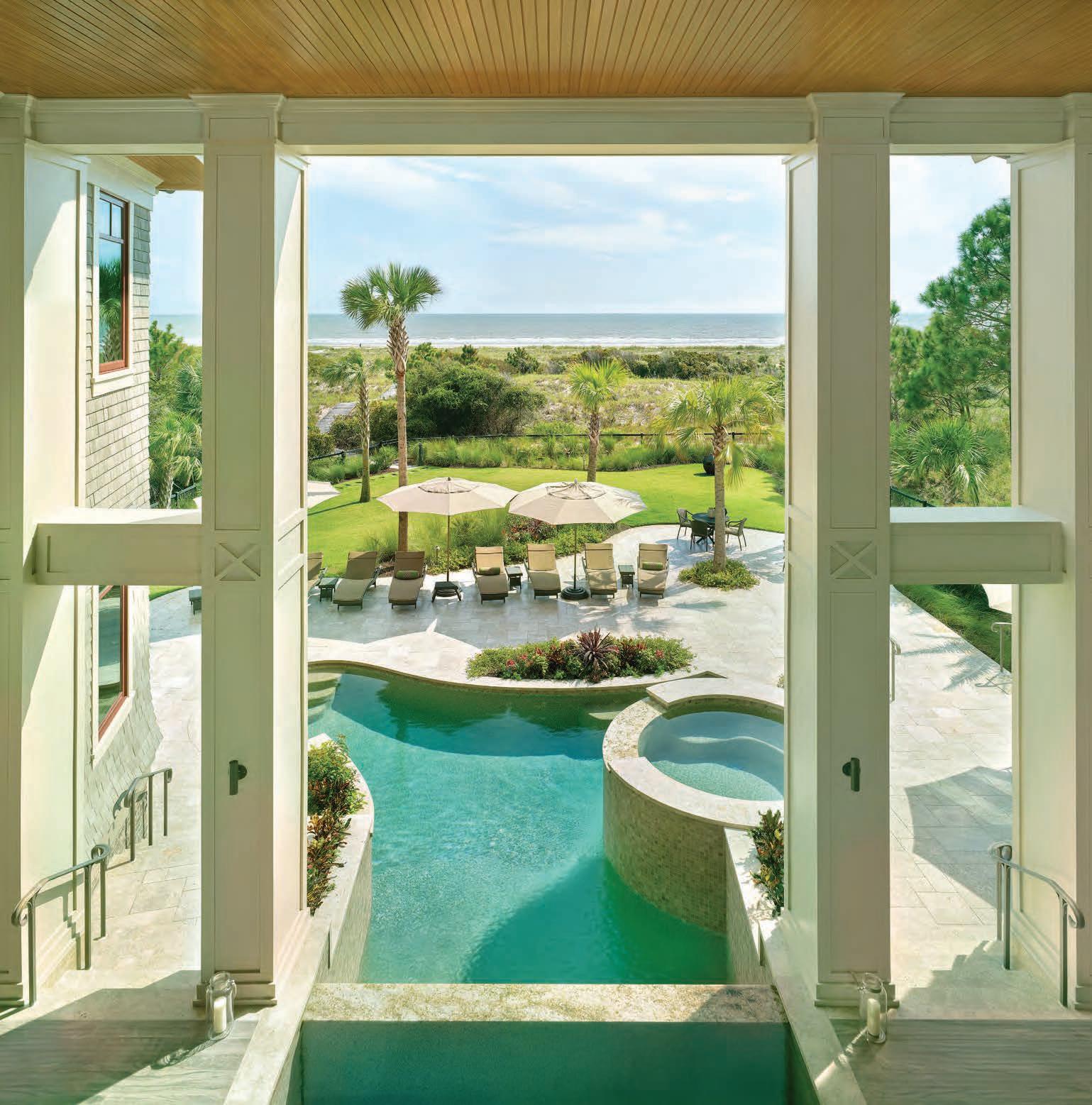





32
NATURE HAVEN
Kiawah Conservancy’s senior ecological health and conservation coordinator, Lee Bundrick, details the flora and fauna of the island’s five protected habitats.
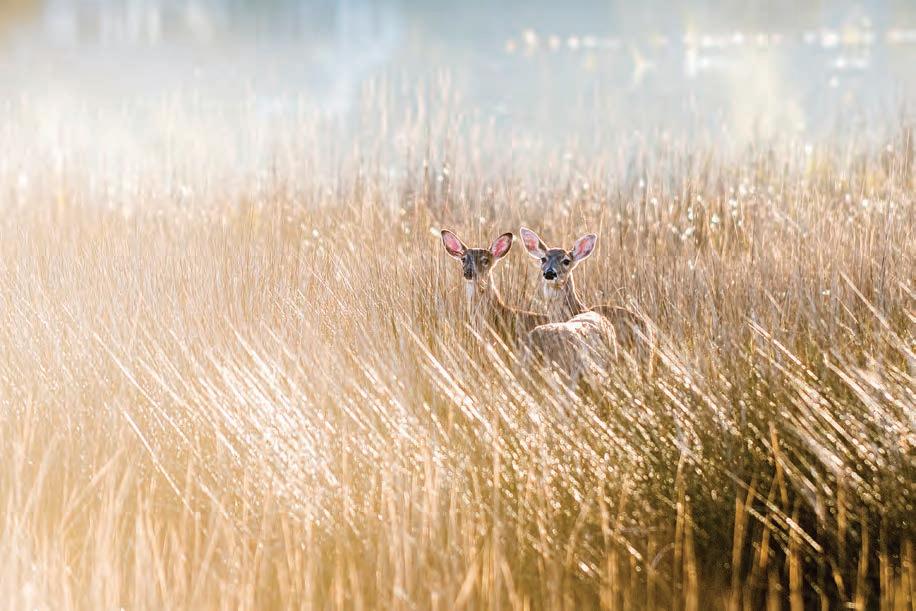
44 CONTRAST CONSENSUS
The evolution of architecture on Kiawah has been punctuated by the emergence of five distinct styles.

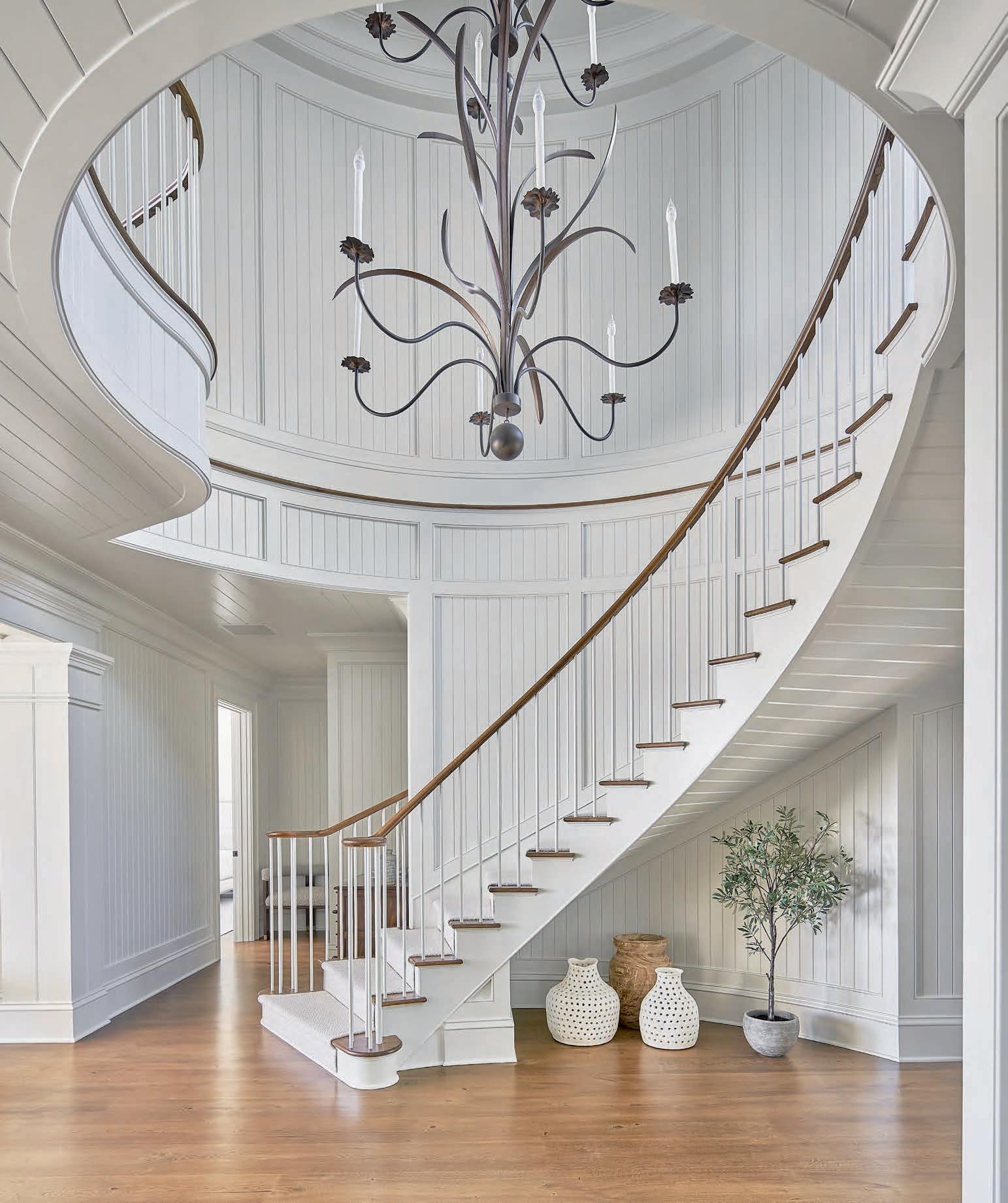
52
A photo essay by Kiawah photographer
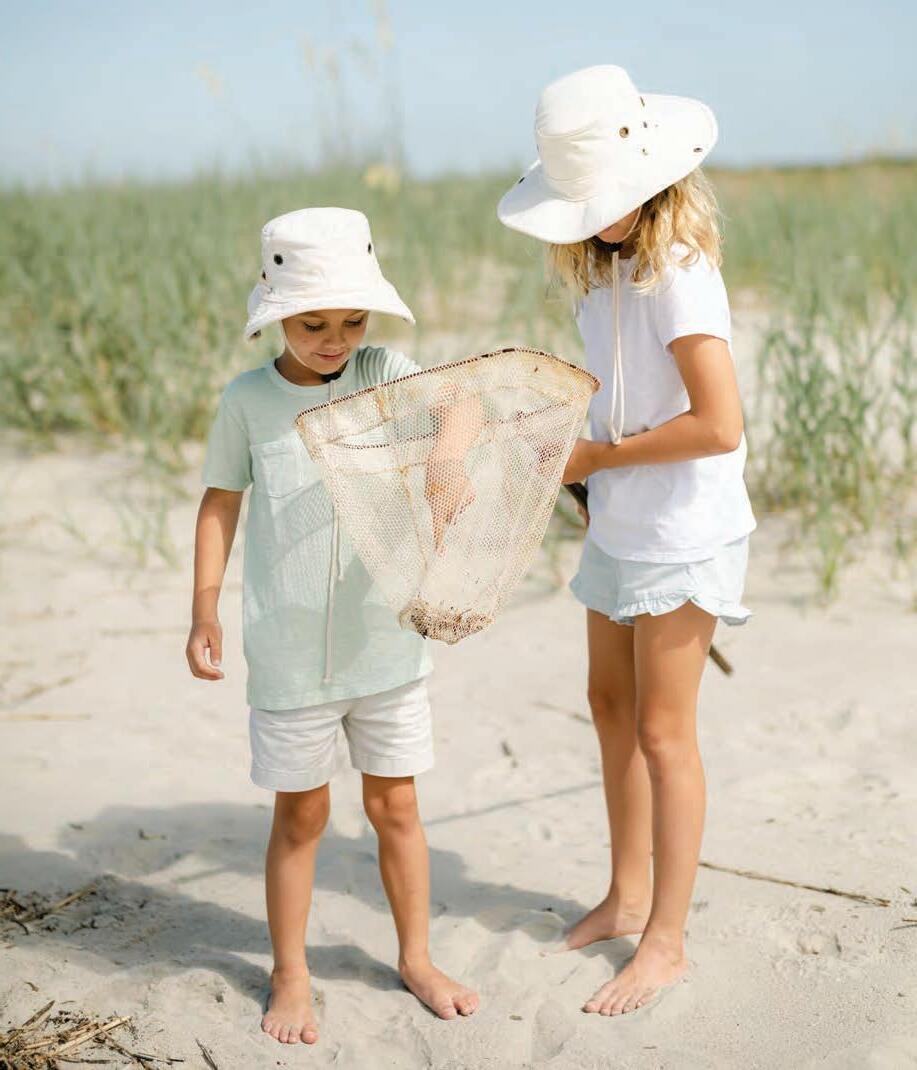
childhood.
70 GULLAH WAY
To understand the history of the Lowcountry and its cuisine, we must look to Gullah Geechee foodways and the influences that shaped them.
78

88 ON THE WING
See the Lowcountry from on high through the eyes of four Kiawah pilots.

98
Philosopher and Yale professor Tamar Gendler explains the ancient secrets of human happiness as part of an ongoing partnership with the Aspen Institute.
108

Kiawah Island has become what it is today thanks to the dedication, passion, and careful thought of these thirteen women.
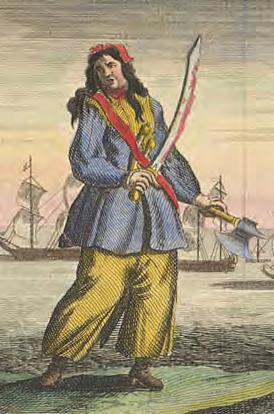
122
HARRY HIGGS PLAYS NICE
Professional golfer Harry Higgs talks about his childhood, his hard-won victories, and his path to the PGA in this intimate interview.
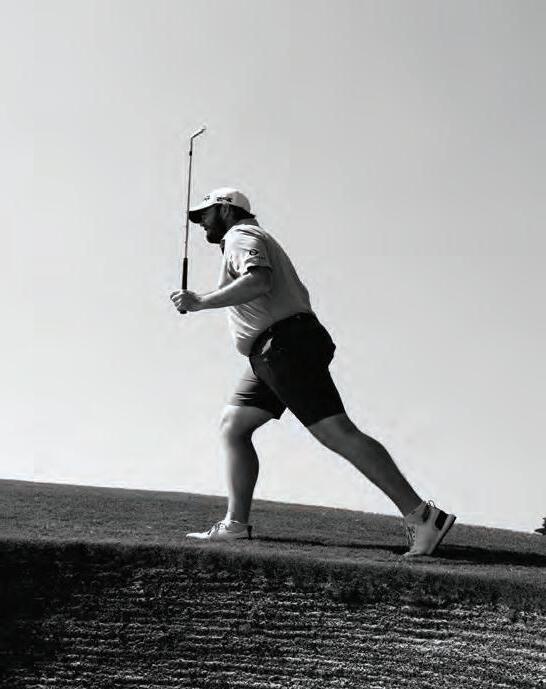
130
CELEBRATING TEN YEARS
South Street Partners looks back at the high points of the last decade of Kiawah Island.
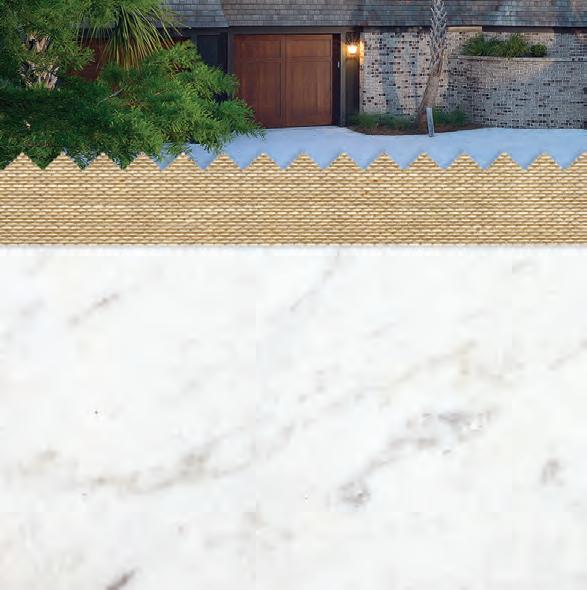
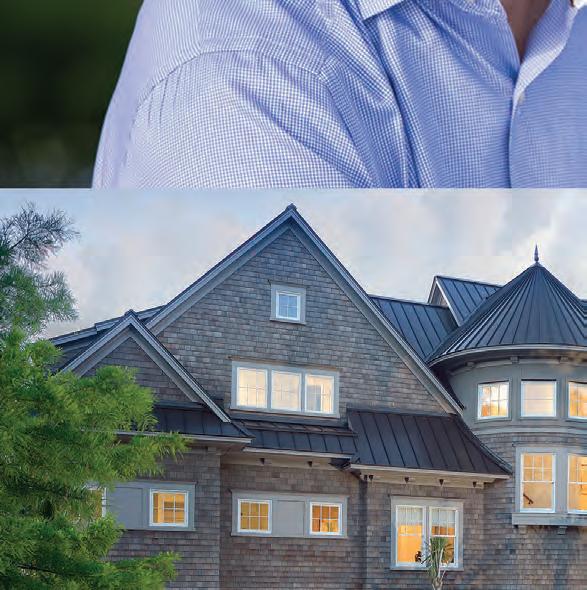
122

To design, build, or renovate a home, the team you surround yourself with is just as important as the materials. Actually, it means everything. Dolphin Architects & Builders starts the process the right way — with listening and conversation. You’ll get to know us, and most importantly, we’ll get to know you. For over 30 years, we’ve created Kiawah homes with only our clients and the highest standards in mind. Because in the end, it’s your home.



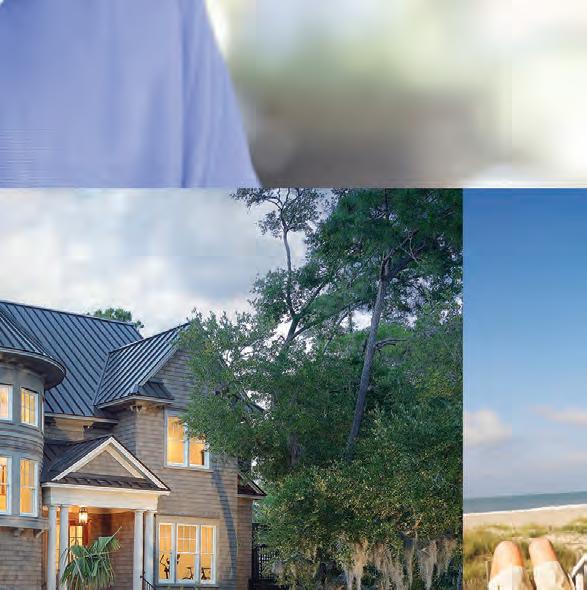

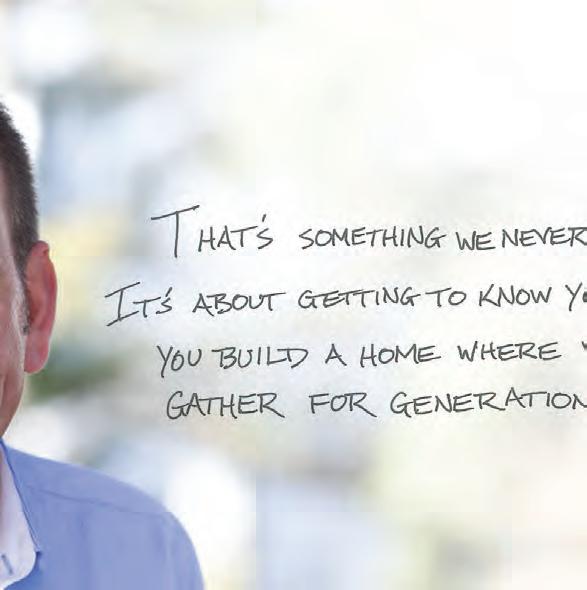

DolphinDesignBuild.com 843.768.2404





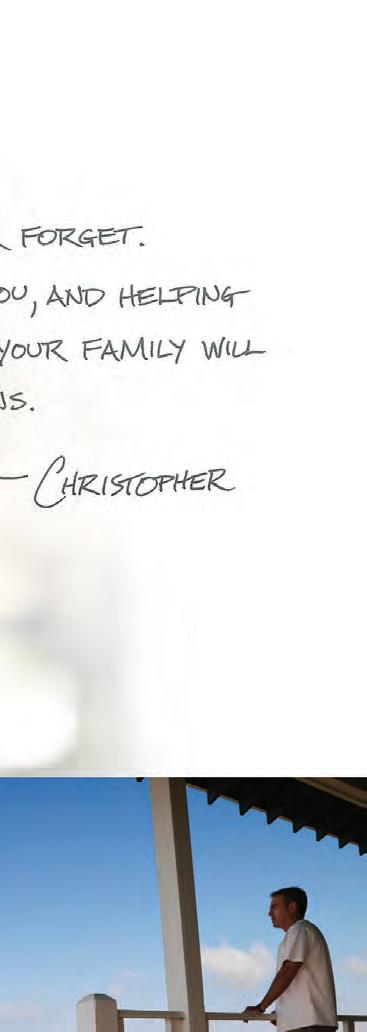
EXECUTIVE EDITOR & DESIGN
Hailey Wist
COPY EDITOR
Sunny Gray
PHOTO EDITOR
Nathan Durfee
PUBLISHER
Kiawah Partners
SPECIAL THANKS
Greg Adams
Jeannine Adams
Paul Aiken
Amy Anderson
Molly Ansbro
Nick Biesecker
Frank Blatcher
Pam Blatcher
Gayle Brooker
Bradley Chambers
Stephanie Clarkson
Robyn Coles
Allison Crouch
Will Culp
Becky Dennis
Lucinda Detrich
Elizabeth Fennell
Joseph Fields
Kelly Franz
Tamar Gendler
Sly Holmes
Liz King
Brenda Lauderback
Ethan Linen
Celeste Marceca
Erin McClure
Steve McClure
Kiawah
Kiawah
kiawahlegends.com
CONTRIBUTORS
Lee Bundrick
Christina Rae Butler
Joel Caldwell
Stephanie Hunt
Bryan Hunter
Leonard Long
Patrick O’Brien
Susan Pittard
Lizzy Rollins
Luana Graves Sellars
Gately Williams
Charlotte Zacharkiw
Patrick Melton
Amanda Mole
Joe Murphy
Dixie Norris
Greg Olsen
Amy Pastre
Diana Permar
Mark Permar
Jordan Phillips
Chris Randolph
Courtney Rowson
Chris Shope
Jack Skolds
Dorota Szubert
Stephanie Tillerson
Shannon White
Donna Windham
Boyd Wright
of articles or advertising copy.
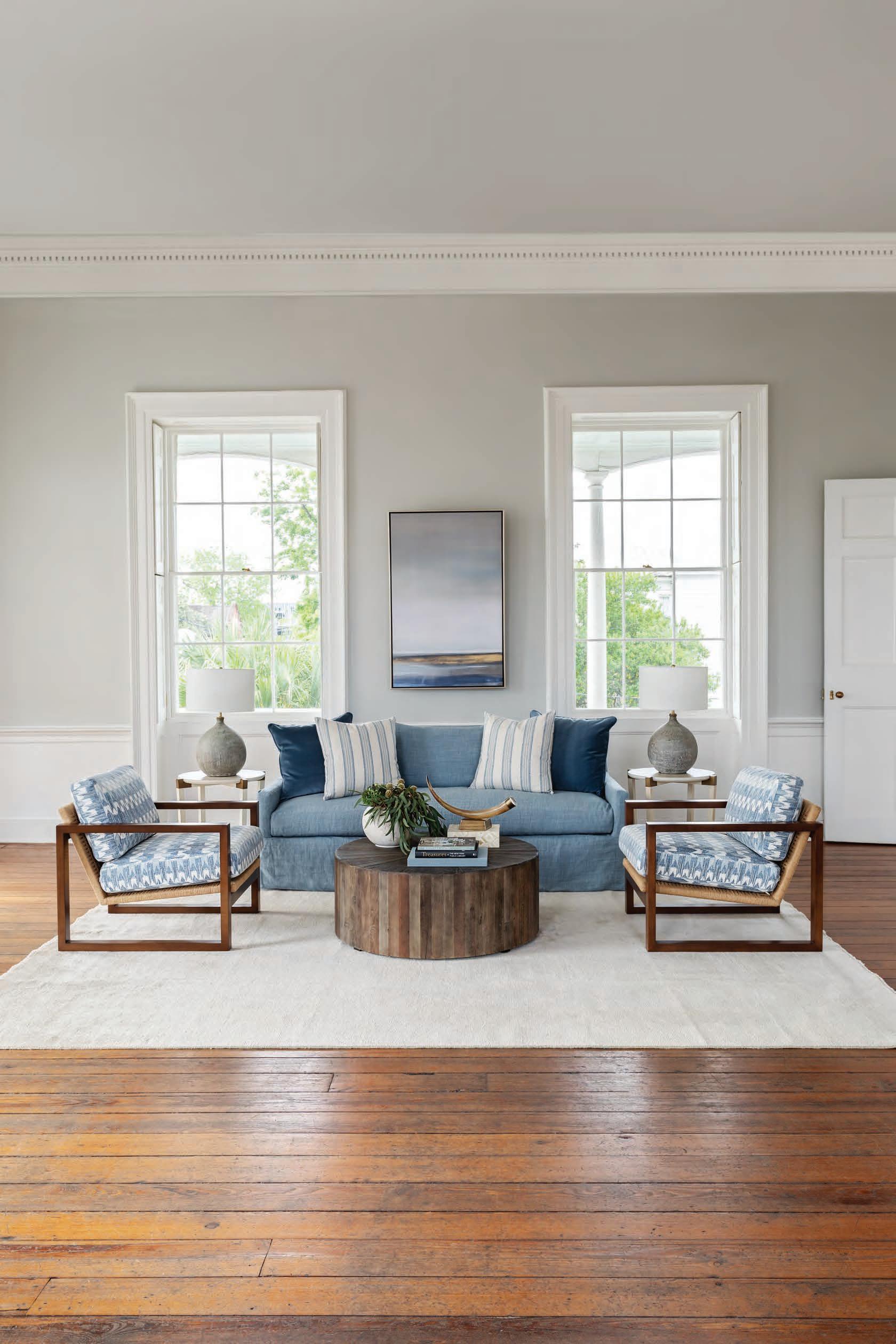

Since she began making photographs in 2009, Lizzy felt drawn to the way photography enables people to get intimately involved in each other’s lives. She developed a passion for studying that closeness and using it to create images that felt inclusive and honest.
A passion for her Gullah Geechee roots led Luana M. Graves Sellars to become a cultural influencer and preservationist. Her writing focuses on Gullah culture, history, and people. Through Sankofa Communications, she has expanded into visual media, where she also writes and produces culturally focused documentaries. She is also founder of the Lowcountry Gullah Foundation.
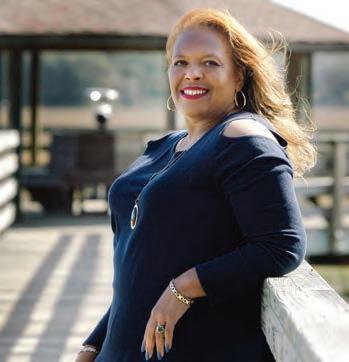
These untold stories inspire people to understand more about who they are and their valuable contributions to American history and foodways.
A longtime Lowcountry resident, Stephanie Hunt writes features, profiles, and essays for numerous publications, including The Washington Post, Veranda, Southern Living, Coastal Living, and Charleston Magazine, where she is editor at large. The author of Veranda—At Home in the South, she’s also mom to three young women and an avid cyclist.

As a girl, I flew to tennis tournaments on a friend’s small private plane long before I ever flew commercial. I had no idea how busy and sophisticated the John’s Island airport is!
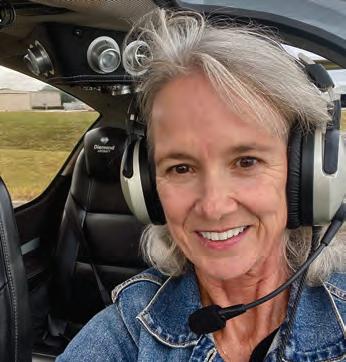
For twenty-five years Patrick O’Brien has created memorable photography for clients across the globe. He learned early in his career that passion, preparation, and discipline are the fundamental traits for sustained creative success. He has been honored to collaborate with art directors, designers, and clients who share his passion for creating images that inspire and surprise.
Exploring Kiawah is a photographer’s dream. The Island’s exceptional natural beauty can take your breath away.
While walking around the farm with Mr. Fields, he would point to a budding vegetable on the vine and ask, “What’s that?” He was so excited! I got the impression that after so many years of growing things on that land, he had not lost the joy of what he does.LUANA GRAVES SELLARS | WRITER STEPHANIE HUNT | WRITER

Christina Butler is a professor of historic preservation and chair of general education at American College of the Building Arts, adjunct faculty at College of Charleston, and owner of Butler Preservation L.C. She is the author of Lowcountry At High Tide; Ansonborough: From Birth to Rebirth for Historic Charleston Foundation; Italians in the Lowcountry; and Charleston Horse Power
Documenting the pirate era gave me the chance to dive into the early days of the colony, when the coastline was a “wild west.”

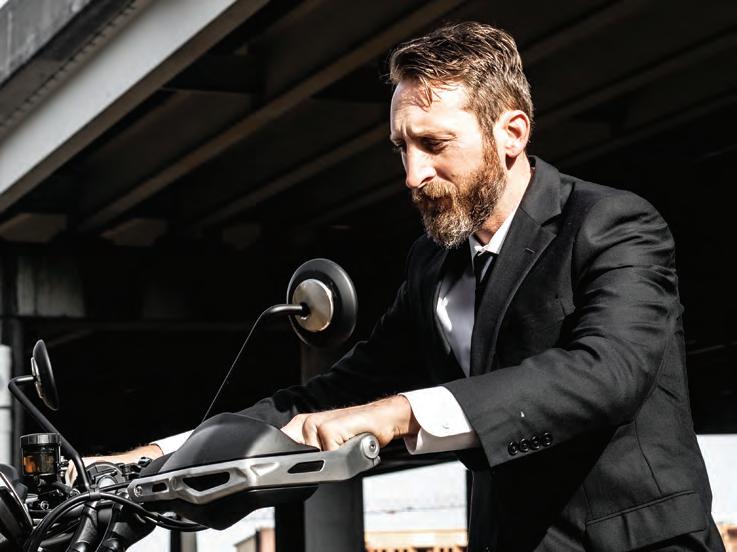
Charlotte Zacharkiw is a photographer and self-proclaimed Adventure Mom based out of Charleston. Her latest project, WEREAWAY, is a website about traveling the world with young children. When she is not working for clients, she is out capturing precious moments with her own family.


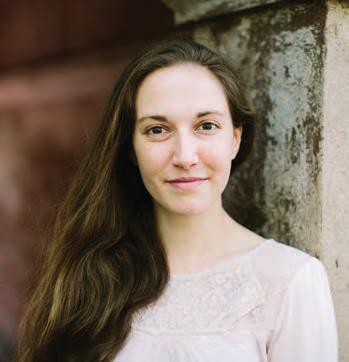
Shooting “Oh! To Be a Child in Summer”, I felt like I was capturing the spirit of Kiawah, brought to life by Grace and Jack McClure.
Susan Pittard is a portrait and lifestyle photographer. She is currently working on a collection of intimate family portraits. She seeks out genuine connections with her subjects and strives to convey their unique beauty in her work. Her work has been published in Esquire, Details, Self, HGTV Magazine, and Real Simple, among other publications.
I enjoyed shooting amongst the palms, getting to meet all of these inspiring women who have contributed to the Island’s evolution.
Originally from the Midwest, photographer Gately Williams has called Charleston, South Carolina, home for fifteen years. He lives there with his wife and daughter. He is working on an ongoing series of large-scale landscape photographs. When he does not have a camera in his hands, he can be found on a bicycle.
Sitting in on the interview with Harry gave me a great understanding of who this thoughtful and happy man is.
CUSTOM WINDOWS AND DOORS MADE IN GERMANY. DESIGN • ENGINEERING • INSTALLATION • SERVICE

INFO@HENSELSTONE.COM
HENSELSTONE.COM
This year, we celebrate ten years on Kiawah Island. It has been our great honor to steward this land and community into the future. Designing with Nature has always been at the center of our development philosophy and we are so proud to take part in the thoughtful evolution of this remarkable island. We appreciate your readership.

 PATRICK, WILL, JORDAN, AND CHRIS SOUTH STREET PARTNERS
PATRICK, WILL, JORDAN, AND CHRIS SOUTH STREET PARTNERS
With every subsequent issue of Legends another facet of the land, community, or evolution is revealed to me. These revelations feel personal. Over the years, I have fallen in love with this special sea island and come to think of this community as my own. And so it is always such a joy to discover new aspects, new things to love. This issue uncovered an incredible network of talented, dedicated, thoughtful women who care deeply about this place and its path into the future. Writing “The Women of Kiawah” (pg. 108), speaking to these women about their work here, I was bowled over by the passion and heartfelt commitment to creating authentic community. And they exhibited such joy to work alongside one another. There is nothing more inspiring to me than seeing women who are excited and fulfilled by their work.
This issue celebrates an island that has been carefully stewarded by thoughtful leaders. To know Kiawah is to know its protected habitats, its happy employees, its extraordinary architecture. How lucky we are. Enjoy!









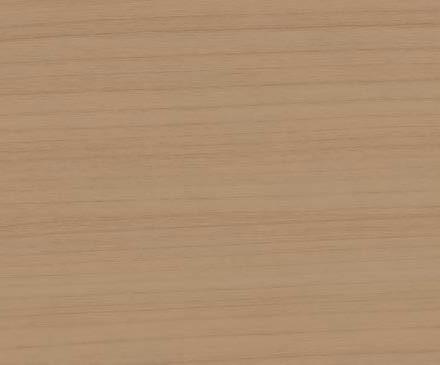
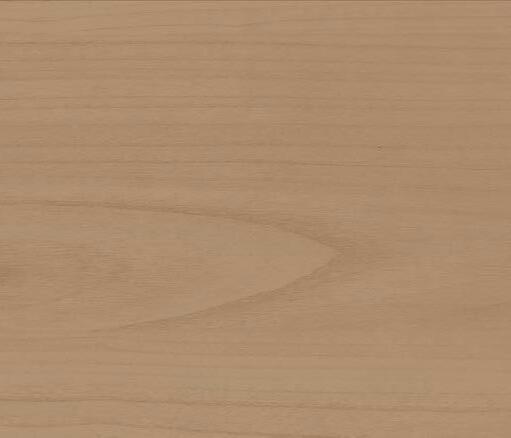




















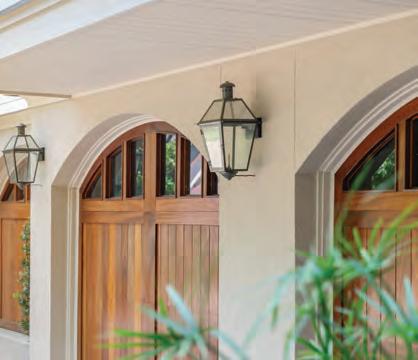

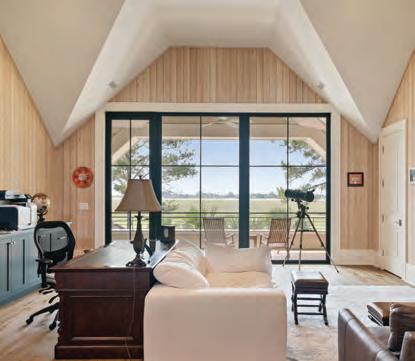
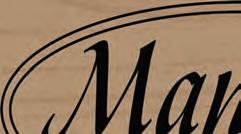
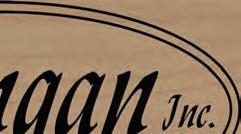
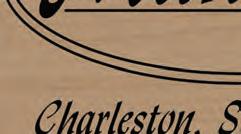
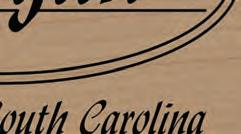
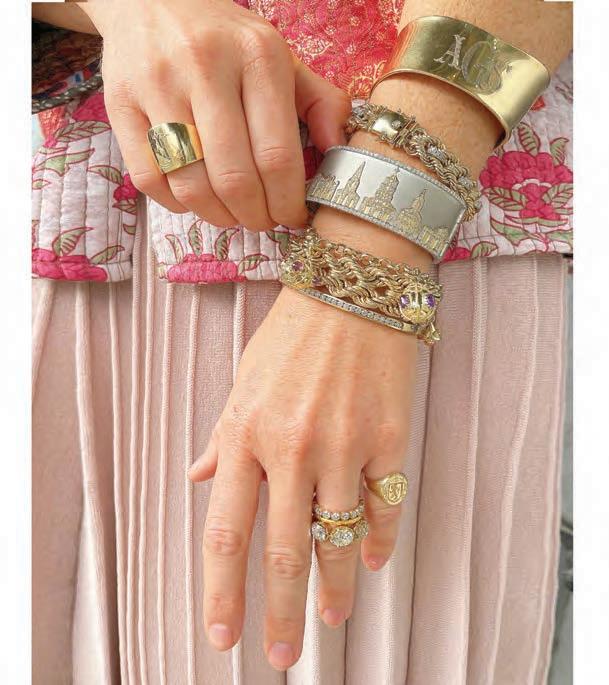


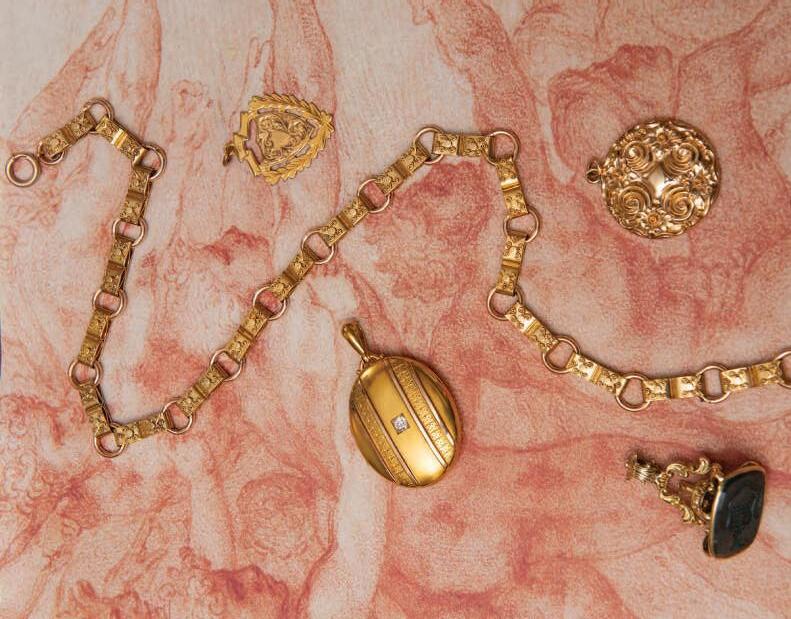
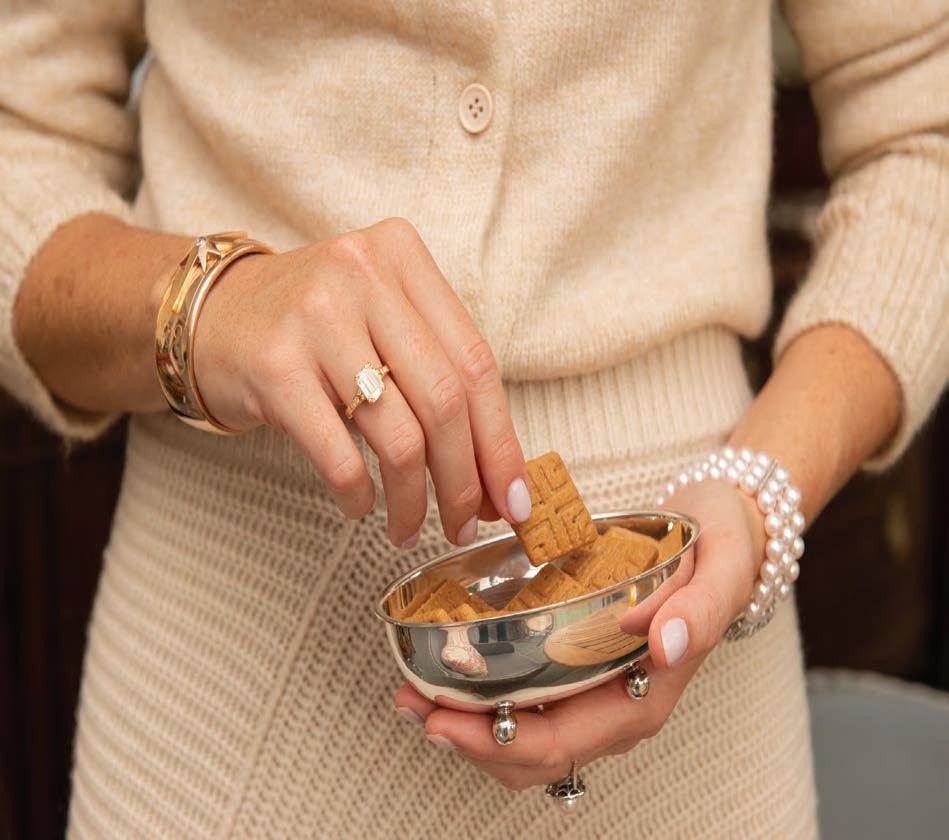

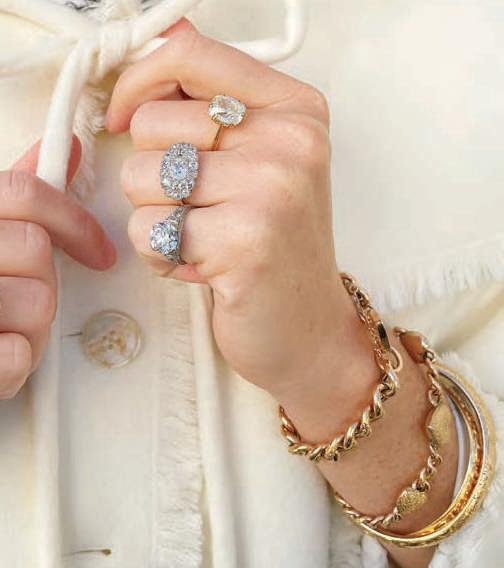





















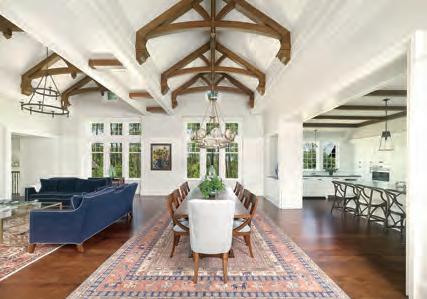
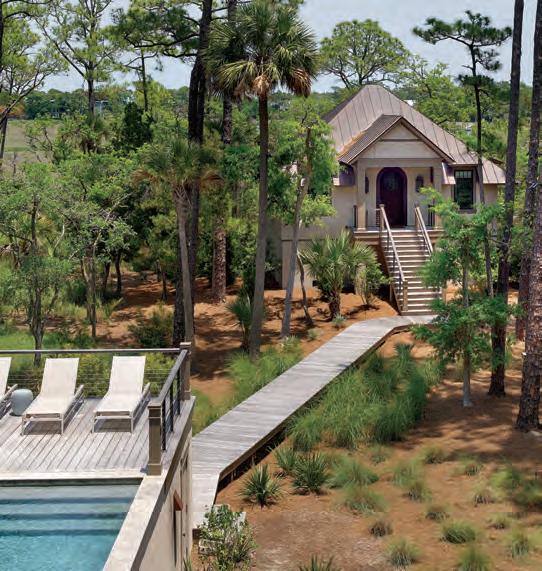

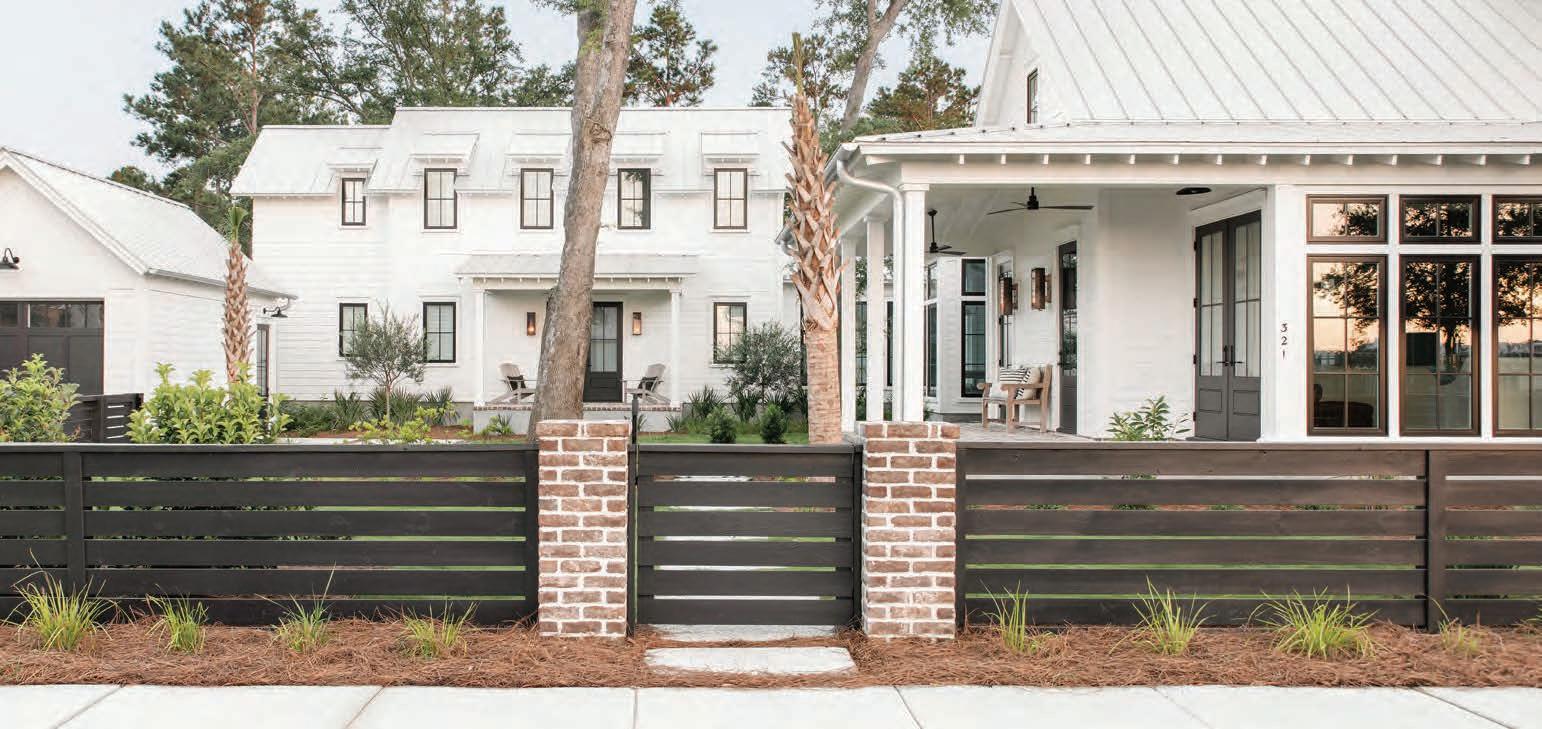
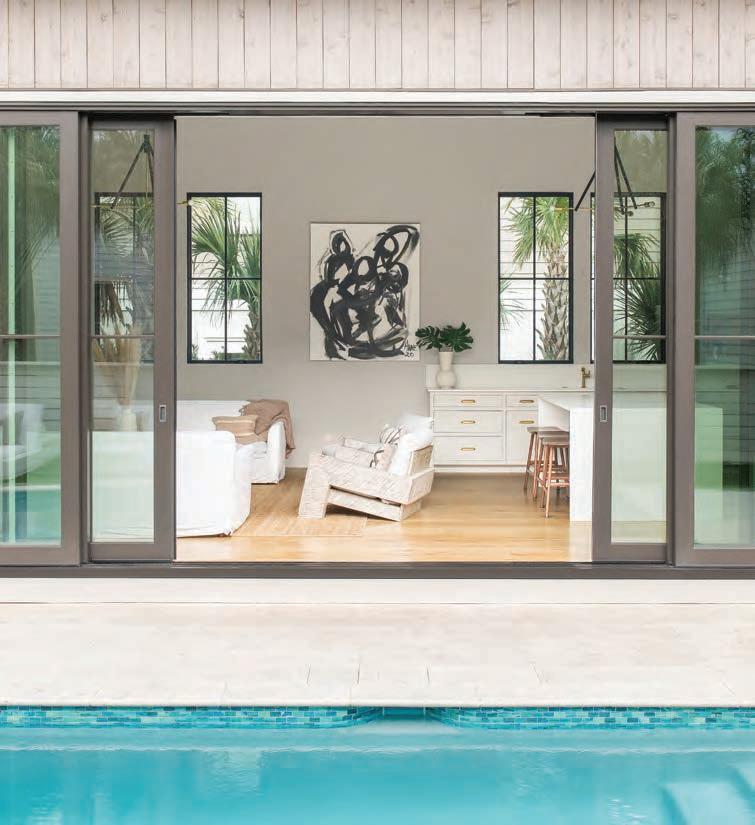



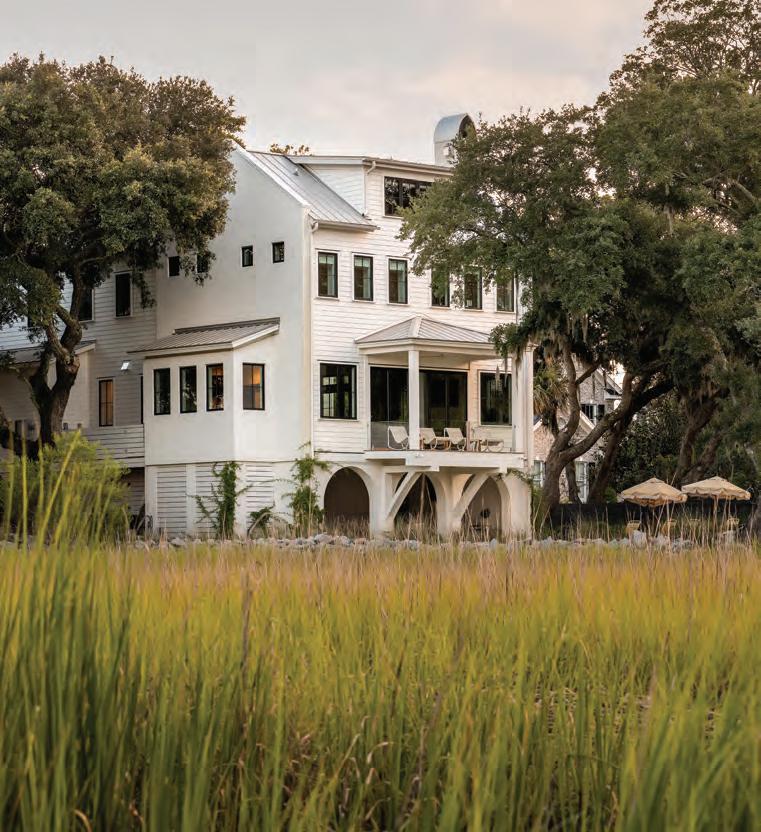
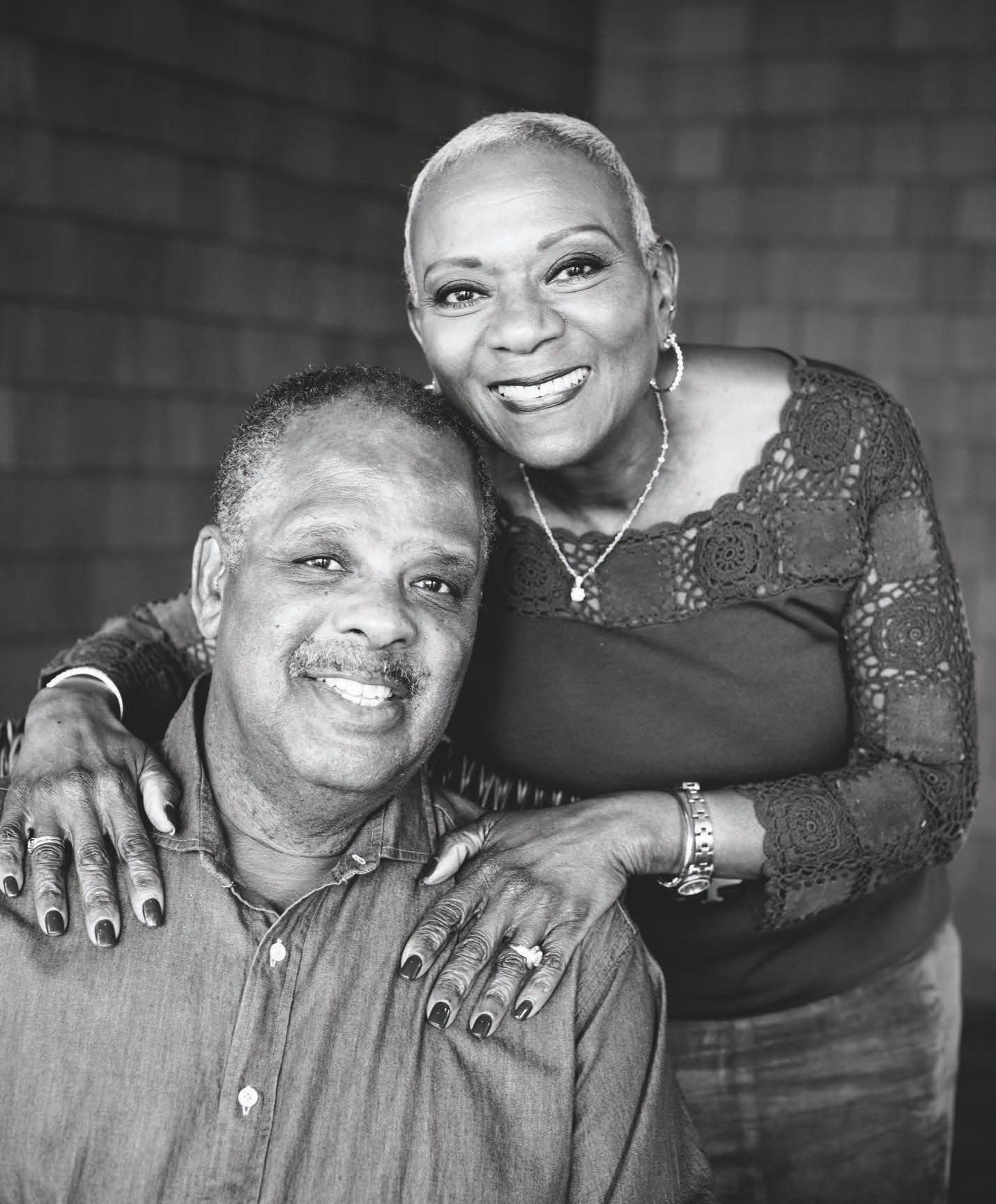 From DALLAS, TEXAS BRENDA LAUDERBACK & BOYD WRIGHT
From DALLAS, TEXAS BRENDA LAUDERBACK & BOYD WRIGHT
Q Let’s start at the beginning. How did you meet?
A Brenda: We met in Minneapolis. I was working for Dayton Hudson, which is now Target Corporation, and Boyd had a dental practice in Saint Paul. Boyd: Brenda’s company was hosting an event. I had a date and she had a date. But her friend who was hosting the party said to Brenda, I just met your husband Brenda: We ran into each other a couple of months later, and the next thing you know, we’ve been married fortytwo years.
Q Where are you originally from?
A Boyd: I was born and raised in Minneapolis, and Brenda is originally from Pittsburgh. We left Minneapolis in 1993 for Brenda’s career and moved to Cincinnati where she was president of a shoe company. She turned that company around in such a short time that they were acquired by Nine West Group. So we moved to Connecticut in 1995, and I started another dental practice. While we were there, we started to look for a second home. At that time our kids were five and eight. We came to Kiawah and loved it. We bought our house in 1998.
Q And you stayed in Connecticut?
A Boyd: In 2000 Brenda’s company was sold, and we moved back to Minneapolis. But when our daughter graduated, we didn’t want to retire and we didn’t want to live in Minneapolis. It was too cold! South Carolina wouldn’t allow me to transfer my license, but Texas would! Brenda: Our son wanted to move to Dallas! It was easier getting to Kiawah because there was a direct flight to Charleston. After Nine West, I was on multiple corporate boards, and I could live anywhere to do that! I am currently chairman of the board of Denny’s and also serve on the boards of Wolverine Worldwide and Sleep Number corporations.
Q Tell me about your kids.
A Brenda: They’re grown! We have a thirty-seven-yearold daughter and a thirty-two-year-old son. Phallon is in Dallas, and Adam is in Irvine, California.
Q How did you initially find Kiawah?
A Brenda: Some people who I had worked with mentioned
we should go see Kiawah. We really wanted to feel like we were out of the country; we wanted to be on an island. When we first visited, it just resonated so much. And Charleston was a big draw for us. We actually have a house there, too.
Q What do you like about living here?
A Boyd: I like to bike and walk the beach. I wasn’t a golfer when we bought the house, but it’s a spectacular place to learn to play. And our kids have never tired of coming here. It is truly our oasis. We love the way they have maintained the integrity of the Island.
Brenda: I like the total harmony with nature. This island is breathtakingly beautiful. No matter how long you’ve lived here, there are still new places to discover.
Q And you are very active in the Charleston community?
A Brenda: I’m on the board of the Gibbes Museum, and Boyd and I have been big supporters of the new African American Museum. I also just worked on the Anson Street African Burial Project with the city. When the Gaillard Center was being renovated, they found the remains of thirty-six enslaved people. With help from several generous donors and corporations, we raised money to build a fitting memorial on the grounds of the Gaillard to represent the countless mass burial sites of enslaved people throughout the city.
Boyd: And I tutored at an elementary school in Charleston and volunteered dental services at Our Lady of Mercy’s clinic on Johns Island. I also want to mention that Brenda just received an award from the White House.
Brenda: It is an award for volunteer service. It’s the Presidential Lifetime Achievement Award. You must have documentation of at least four thousand hours of community service. I received it on May 9, 2022, in Charleston. Congressman Clyburn and Mayor Tecklenburg presented the award, and the Mayor declared May 9th as Brenda Lauderback Day in the city of Charleston! It was a big honor.
Q I’m so impressed by what you give back to the community.
A Brenda: We both believe that to whom much is given, much is expected. And I could never have achieved what I have in my life without the right life partner.
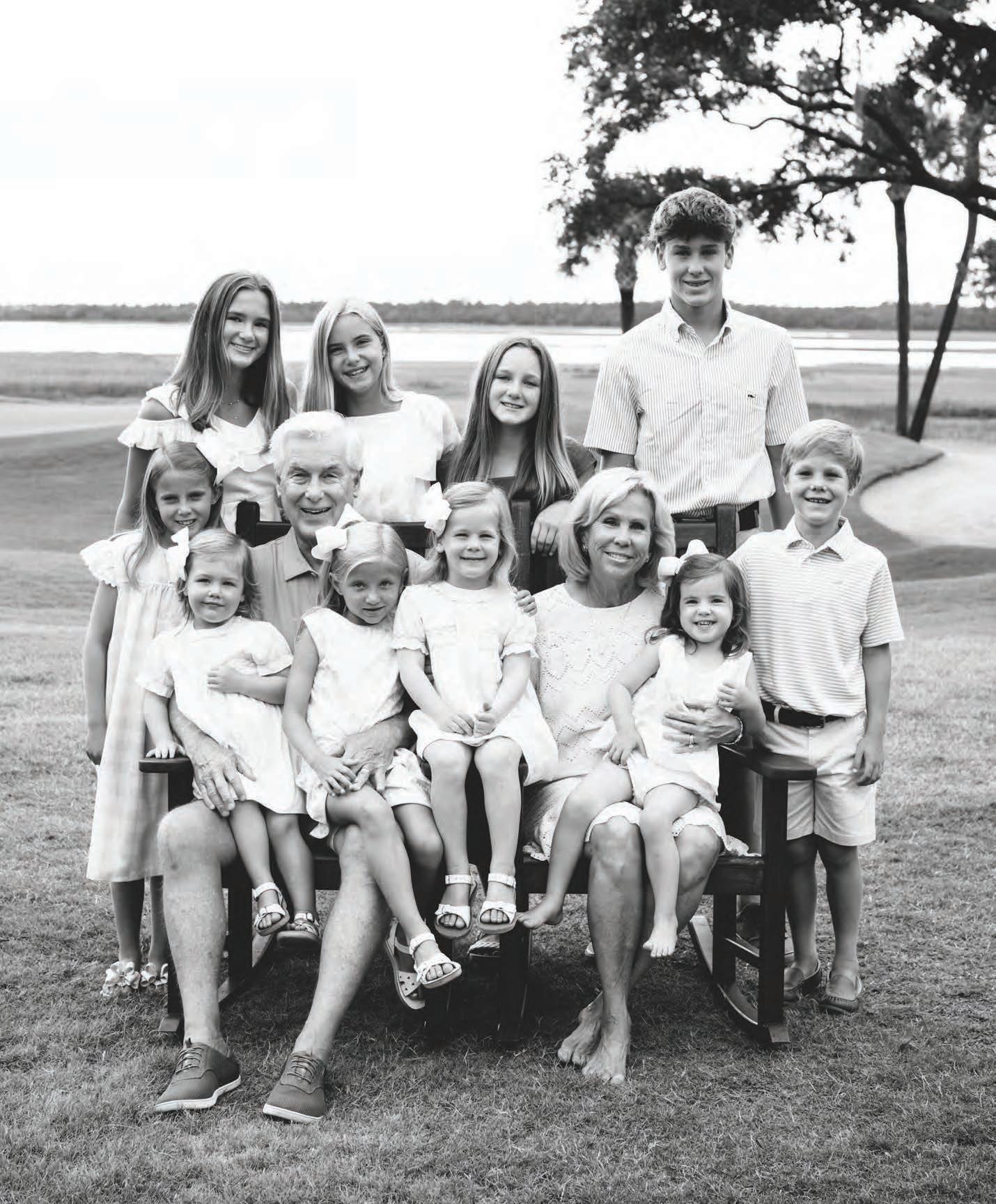 From NASHVILLE, TENNESSEE JEANNINE & GREG ADAMS Kiawah Island Club Members
From NASHVILLE, TENNESSEE JEANNINE & GREG ADAMS Kiawah Island Club Members
Q How did you two meet?
A Jeannine: I’m from Atlanta and went to college in Hollywood, Florida.
Greg: I went to school in New Jersey and played baseball. Sophomore year, her school hosted a spring break [baseball] tournament, and we met on the beach. We then dated long distance for almost three years.
Jeannine: After graduation, we got married. That was forty-six years ago!
Q Tell me about your career.
A Greg: We had a corporate career with IBM for thirtyseven years in multiple cities around the U.S. and also an assignment in Tokyo. One stop, in the mid-eighties, was in Knoxville, Tennessee, and we became lifelong friends with the future governor of the state and his family. In 2010, after Governor Haslam was elected, he called and asked if I would join his team. We were living in Atlanta at the time, so I retired from IBM, moved to Nashville, and became his chief operating officer. Jeannine’s friendship with the first lady allowed her to help in many community activities. It was a special time for us.
Q How did you find Kiawah?
A Jeannine: With our moves, we had spent many years living in the Northeast, and I really missed my Southern roots. Some friends told us about Kiawah, and we did a comparison tour from North Carolina down to Jacksonville and over to the Gulf Coast. I immediately felt at home on Kiawah.
Greg: We wanted to find a place to gather our family— Lord willing—if we had grandkids.
Q How many grandkids do you have now?
A Jeannine: We have three married children: Brian and Emily in Chicago, Matt and Paige in Tulsa, and Katie and Wes in Nashville. We have eleven grandkids, ages newborn to sixteen. The older kids are wonderful with the younger ones, and even though they don’t see each other often, with FaceTime and Zoom, they stay close.
Q How is it to see your grandkids grow up coming here?
Greg: When we heard about the wildlife—the bobcats, the deer, the alligators, the turtles—we just thought, what a wonderful up-close way to learn about God’s creation. And then what clenched it for me was riding bikes on the beach. I turned to Jeannine and said, How special would this be? Riding our bikes out here with our grandkids?
Jeannine: We’ve seen so much wildlife over the years and have been able to teach them the names of many of the animals and birds. We have a chalkboard in the hallway where they list the animals they see while they are here. Kayaking to see the dolphins is a highlight, and all of them love to surf. They’re fascinated with how the moon affects the tides and so enjoy searching for sand dollars and unique shells. These are great memories for them, and for us.
Greg: We have eight granddaughters, so we’ve renamed the observation tower the Princess Tower. Our grandsons love basketball. Night Heron Park is a common request: Papa, just drop us off. We’re gonna play for two hours.
Jeannine: They have loved the GoKids camps, too. They have made many friends there they see every summer.
Q What do you do when you’re here without the grandkids?
A Greg: I golf and enjoy going to the Sports Pavilion, and we play pickleball and tennis.
Jeannine: We can’t take enough bike rides, and we really enjoy eating at all the Club venues.
Greg: We also love to walk. We usually walk from the Beach Club to The Ocean Course and back twice a day.
Q Tell me about the Kiawah community.
A Jeannine: There are some amazing women who work at the Kiawah Island Club. We’ve known them since we joined eighteen years ago. They know every member’s name and every child’s name. I love them dearly.
Greg: We have wonderful neighbors. We look forward to seeing everyone and catching up when we get here.
Jeannine: We are fortunate that we even have friends here who go back to our college days and our IBM moves, as well as so many new friendships. What a treasure Kiawah is for us!

 Story by Lee Bundrick
Photography by Patrick O’Brien
Story by Lee Bundrick
Photography by Patrick O’Brien

The first visit to Kiawah Island is always memorable. The sprawling grand oaks, marsh as far as the eye can see, the serene beaches—each facet emits a mystique that beckons the viewer. I like to think that I have internalized this landscape. In my four years on Kiawah Island, my admiration and intrigue for this environment has not waned. In tradition with other conservationists, I hope to inspire others to see these habitats from a similar perspective and delight in their intrinsic beauty. Together, five crucial habitats contribute to the health of our barrier island ecosystem. Over the past few years, the Kiawah Conservancy has initiated research on the relationship between these habitats and the wildlife that call them home. The culmination of this work is the Ecological Health Initiative, an effort to research and monitor the vegetative cover, water levels, and species abundance of these habitats.

Along the edges of the maritime forests is a transitional zone dominated by dense, shrubby vegetation and ground covers. These habitats, referred to generally as shrub thickets, come in two types: maritime shrub thicket and salt shrub thicket. Maritime shrub thickets form between the dunes and maritime forest. Live oaks, pines, wax myrtles, and red cedars in these areas are wind pruned by salty air coming off the ocean, producing a gently sloping hedge along the beach. Salt shrub thickets form between the salt marsh and the maritime forest, consisting of low-growing trees, shrubs, and a variety of dense ground covers.
The vegetation in these thickets make them a prime location for resident and migratory songbirds, providing
abundant nesting areas, protection from predators, and easy access to fruiting plants. Migratory songbirds traveling the Atlantic Flyway in the fall pass through Kiawah to refuel before continuing onto their southerly destinations. Shrub thickets are also critical habitats for the island’s elusive bobcat population. The dense vegetation provides excellent cover for nighttime travel. During the mating season, it also provides prime habitat for denning bobcats.
In addition to the benefits to wildlife, shrub thickets protect the interior maritime forest from salt spray and decrease the impacts of winds, waves, and storm surge. They also serve to stabilize soils along the edge of the forest.
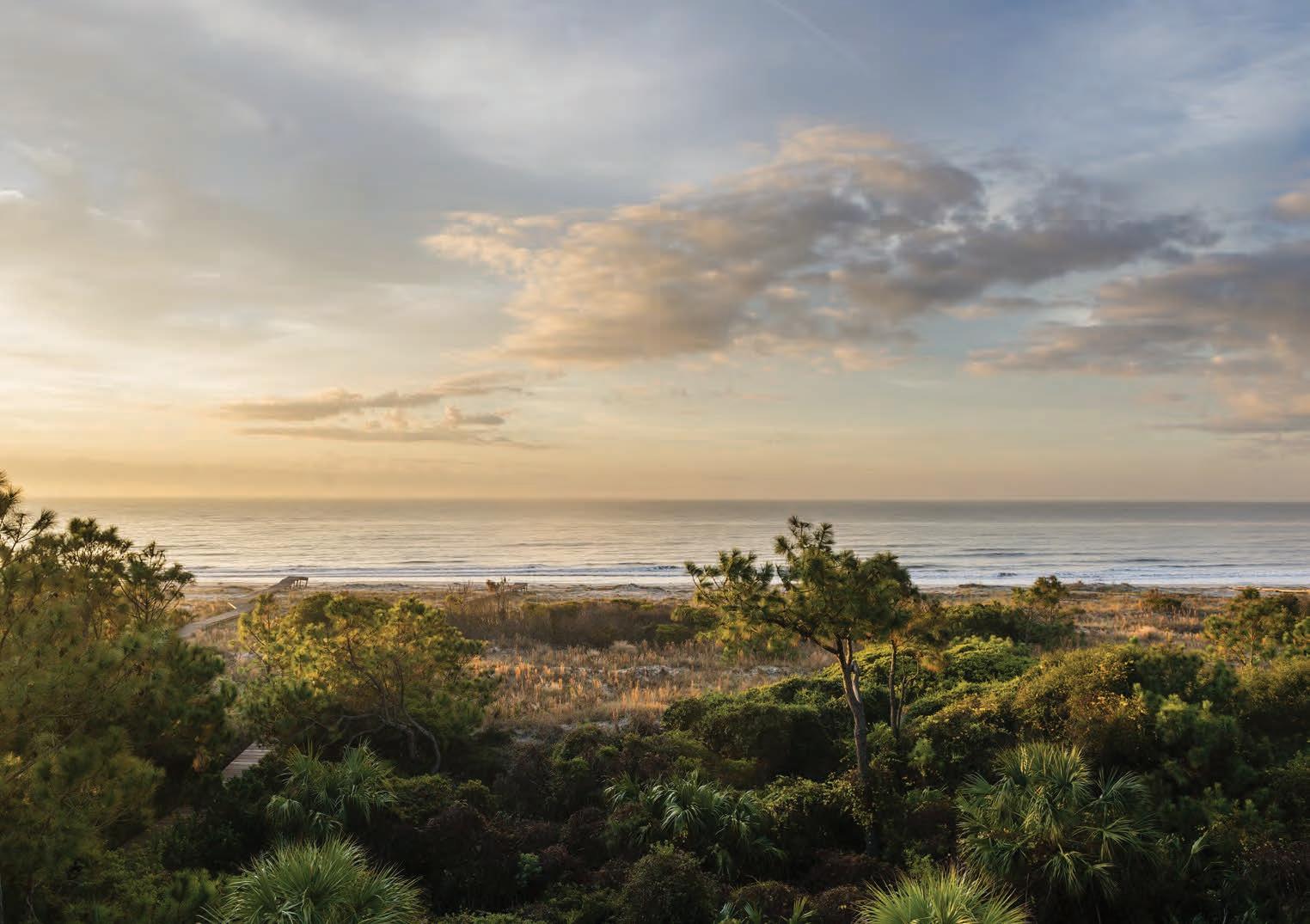
Over the course of millennia, barrier islands gradually accrete land seaward. As the dunes continue to march forward, the land behind begins to stabilize and recruit plant species. This area eventually develops into mature maritime forest habitat with layered canopies, understory trees, shrubs, and ground covers.
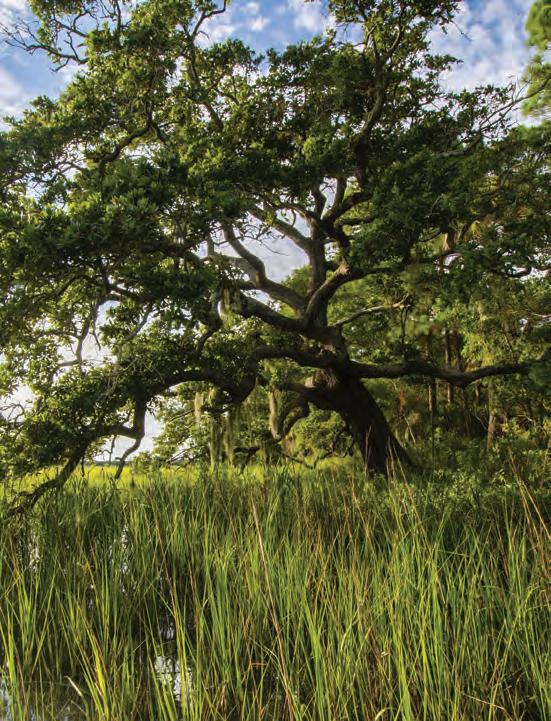
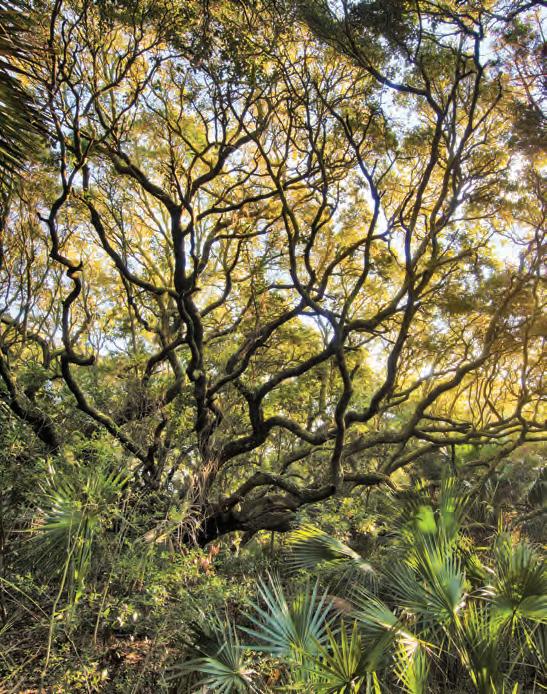
Many species of mammals and reptiles call these forests home. Shrubs and ground covers provide a screen for travel, feeding, nesting, and resting for migratory birds. Dead trees are an important source of habitat. Standing “snags” often provide nesting sites for woodpeckers and small mammals. Once these trees fall, the trunks and overturned root systems provide denning sites for bobcats. Openings in the canopy also encourage new growth, giving new life a chance to appear in the forest.
An intact maritime forest regulates the environment, especially in regard to water. Forests act like sponges, soaking up water and slowly releasing it over time. Forest vegetation slows the fall of rainwater before it finds the forest floor and percolates through the soil. Eventually, rain collects in a shallow groundwater aquifer two to four feet below the soil surface. Groundwater gradually drains through the soil and into nearby water bodies over time. This natural process reduces the amount of stormwater runoff and promotes nutrient cycling, which helps protect water quality in the surrounding waterways.
Forests also provide protection from severe weather. The canopy trees and shrubs reduce wind exposure to buildings, and root systems keep soil from eroding. Tall trees adjacent to the beach also capture aerosol salt spray caused by oceanic winds, which prevents impacts to infrastructure and other forest vegetation further inland.
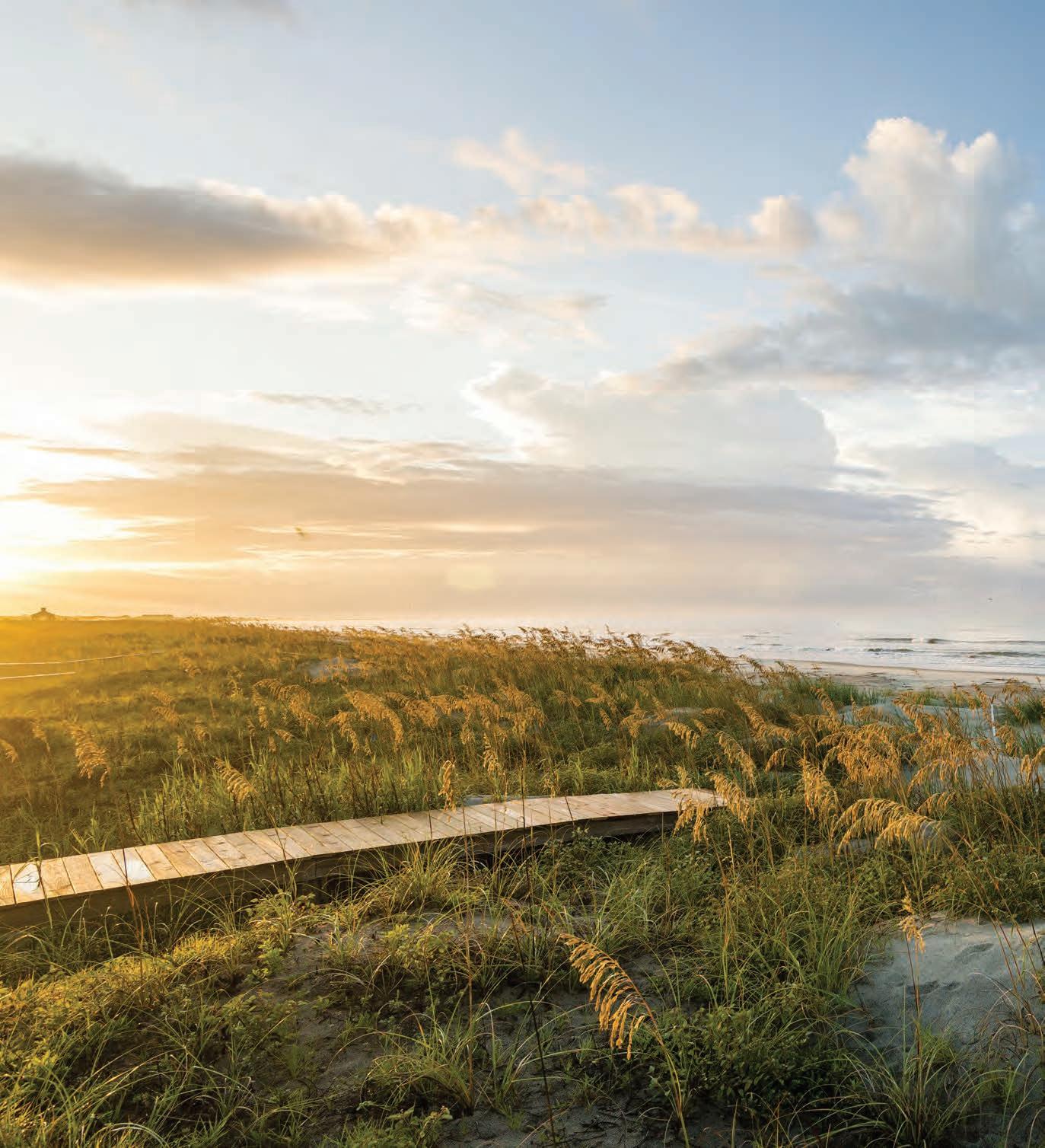
Wide, white sand beaches stretch from the mouths of the Kiawah and Stono Rivers. These beaches are bordered on the landward side by a rolling dune system. Together, the beach and dunes provide an extraordinary habitat for a variety of wildlife throughout the year.
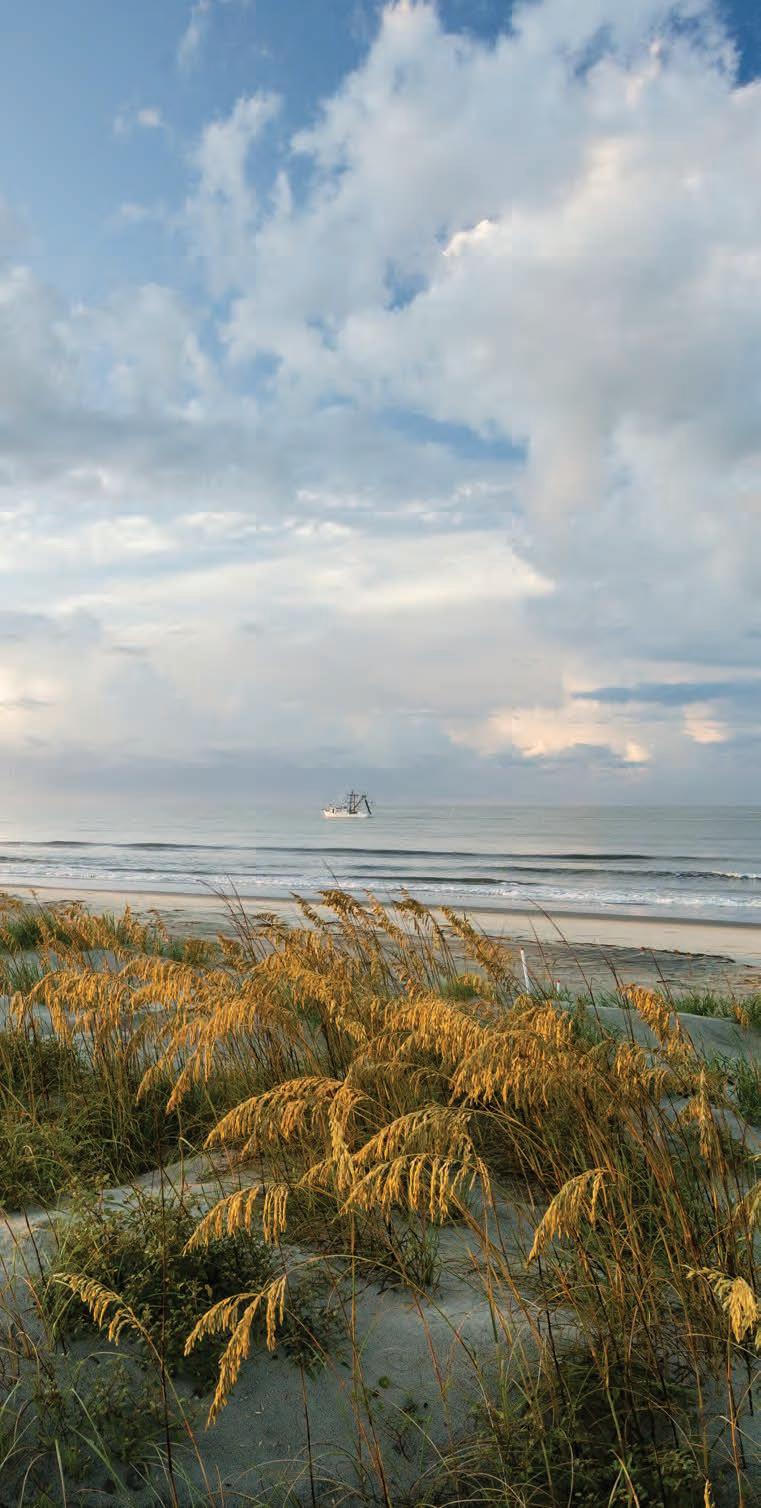
From March to September, seaward dunes serve as nesting sites for sea turtles. Hundreds of nests are laid each season, with an average of one hundred eggs per nest. Monitoring and management of these nests has been a priority for Kiawah Island for decades. Kiawah’s beaches also provide feeding, nesting, and resting areas for resident and migratory shorebirds. Oystercatcher and least tern nests are commonly found on the eastern end of Kiawah, adjacent to The Ocean Course. The intertidal beach, between low and high tide, is considered a highly important region. Shorebirds use these areas to sift for food. Scientists recently highlighted the importance of Kiawah’s intertidal beaches for migratory red knots. Every winter, red knots travel from the Canadian Arctic to breeding grounds as far south as Tierra del Fuego. To fuel this nonstop flight, red knots briefly visit the beaches on Kiawah to feed before continuing their journey south.
Likewise, the beaches and dunes contain a wide variety of plants and invertebrates, which provide fuel for the ecosystem. Pioneer plants in this habitat brave hot, salty, and windy conditions to become established and stabilize the sand against erosion. Kiawah Island’s dune system is one of the most geologically stable along the South Carolina coast. These habitats protect Kiawah Island from the impacts of extreme tides and storm surges throughout the year.

Nothing is more symbolic of the South Carolina Lowcountry than our great expanse of tidal salt marsh. While beautiful and strangely mysterious, it is also widely considered one of the most biologically productive and diverse ecosystems in the world. The salt marsh is fueled by a thriving plant community that supports fish and wildlife.
Smooth cordgrass dominates lower elevations of the marsh. These areas are perpetually influenced by twice daily tidal inundation. Plants become more diverse in slightly higher elevations of the marsh, providing optimal areas for the growth of saltwort, glasswort, and Carolina sea lavender, among others. As these plants die back over the winter, they break down to produce organic matter, or detritus. This process provides fuel for invertebrates and filter feeders that are preyed upon by estuarine fish and wildlife.
Wading birds can be found throughout the year in the marsh, scouring the creek banks for food and nesting in nearby trees. The bright white plumages of egrets and herons provide a stark contrast to lush vegetation. Diamondback terrapins also call marshes home, often nesting along the marsh edge and feeding on aquatic invertebrates. They are one of the main predators of periwinkle snails and are responsible for keeping their populations in check. A variety of mammals can be found here as well. Deer, opossums, raccoons, and bobcats use these areas to travel across the landscape to marsh hummocks. Marshes are also critical habitats for mink, which use wrack as floating platforms to travel the creeks and rivers.
Marshes also provide protection to upland areas by reducing wave action and buffering storm surges. They also support intertidal oysters, which are an essential component within the marsh. Oysters provide food for wildlife and nursery areas for fish populations, and their function as a filter feeder also improves water quality.


A series of interconnected ponds can be found throughout the island upland. These ponds are a crucial drainage system for the island, managing stormwater runoff. An influx of tidal saltwater mixes with fresh stormwater and groundwater to create brackish water. The salinity varies from pond to pond, but it provides unique opportunities for a variety of fish and wildlife species. As the surface water moves through the system, the biodiverse species in the pond help to improve water quality before being released into the marsh. They also provide a sneak peek into another source of water beneath our feet: the freshwater aquifer found just below the surface. Pond levels generally reflect the groundwater level, often lying two to three feet below the soil surface in most areas.
Reptiles and amphibians are abundant throughout the pond system. A common presence is the American alligator, often seen floating near the surface or sunbathing on the banks alongside yellow-bellied sliders and the bravest of wading birds. Frogs and toads become reinvigorated after rain events, making their presence known through croaking songs. The calm pond waters are also a welcome invitation to the resident wading birds and migratory waterfowl throughout the year. Reedy edges are wonderful areas for wading birds to sift for food and to nest in the overhanging vegetation. Watch for the migratory hooded merganser, easily spotted in the distance by the contrasting colors of their white-and-black crest and piercing yellow eyes.

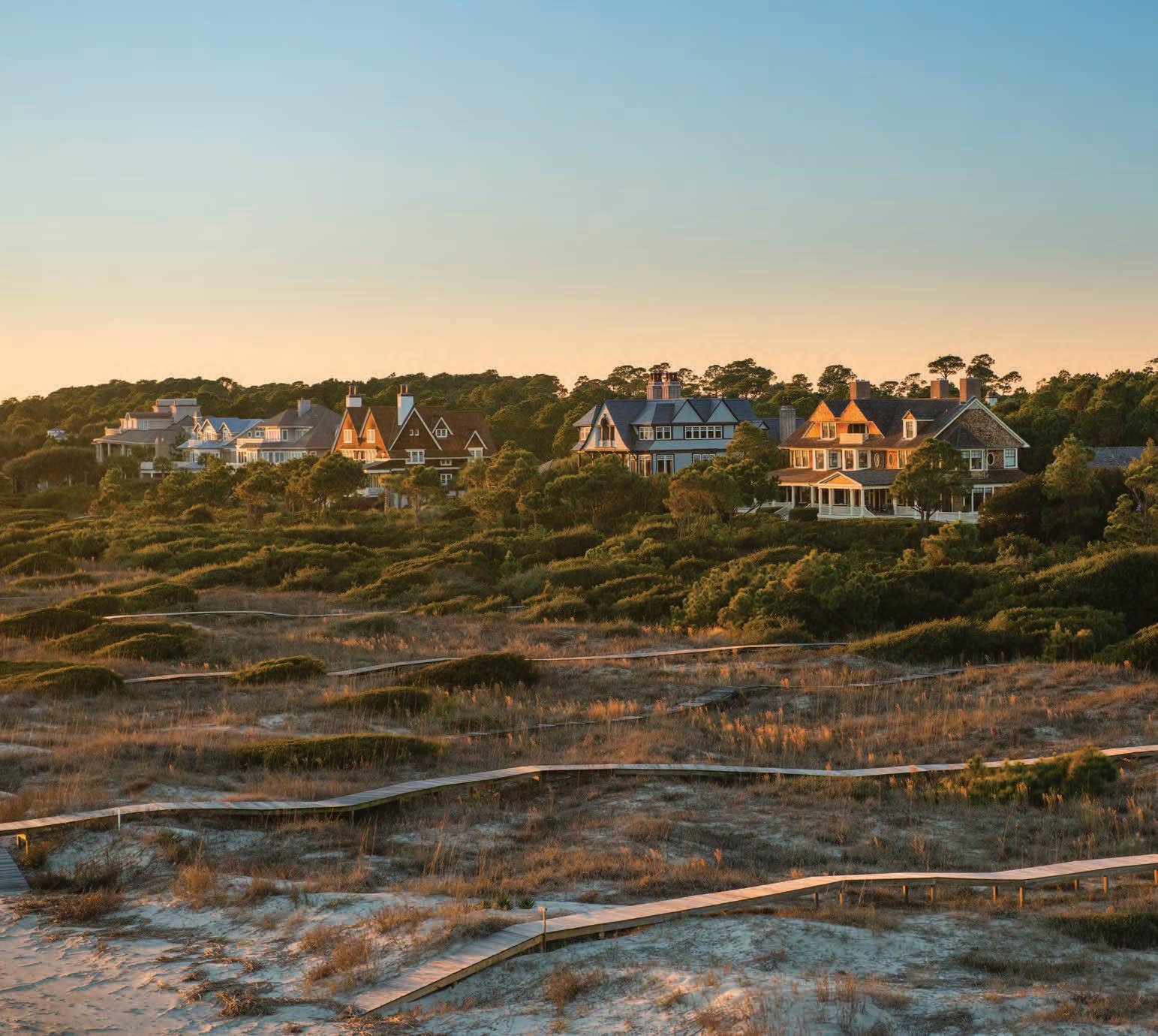
The Kiawah architectural vernacular has been a careful evolution. So many communities are built all at once, the threeor four-year building period a chaos of construction. And those communities, like it or not, have innate cohesion, continuity. But that was never going to be the case for Kiawah. And so we find harmony in the continuum: a Lowcountry cottage can sit neatly next to a modern home if the core values are intact, if the materials and palette are congruous.

It is, and always has been, about nature here, says Amanda Mole, Chief of Architecture and Design for Kiawah Partners. Designing with nature was the central mandate of the original master plan. How to develop gently, carefully within the natural environment, as part of nature. With the creation of the Architectural Review Board (ARB), the goal was to steward this original vision. Of course, individual expressions of architecture are vital to an authentic community. But the ARB has shepherded the architectural identity of Kiawah Island with an essential question—is the building sited in response to the natural environment, the canopy structure, the maritime breezes?
STORY by HAILEY WIST PHOTOGRAPHS by PATRICK O’BRIENLong before we consider style during the design process, we analyze the unique characteristics of a site. Tree canopy and topography guide massing, while sun patterns and breezes inform programming. We want a home to be grounded in the natural environment from the start, like it has always been there. - Amanda Mole
The depictions here are grossly imperfect. Even within tight genres there is always evolution. Is it Arts and Crafts? The better question might be: Is it Arts and Crafts during the Art Nouveau period? Of course you can’t draw distinct lines around any of this. Style and trend will always be moving targets. But it is a satisfying exercise to make loose associations, to track the subtle evolution of taste over time. And it is subtle. As Mark Permar, longtime land planner and resident of Kiawah, explains, the best expressions of architecture adhere to a set of core qualities. From Lowcountry Cottage to Coastal Modern and everything in between, the best buildings on Kiawah Island are disparate iterations of the same fundamental values.
In the beginning, architecture on the Island was secondary, a backdrop to the natural environment. The early cottages around West Beach were modest, and they used natural materials that blended with the environment. It was, Permar tells me, modeled after Sea Pines on Hilton Head Island. Indeed, the initial development team at Kiawah pulled talent from the Sea Pines project, and there was much overlap in those early days. And to understand the origins of that style, Permar looks further back to the original spirit of Sea Ranch. The famed community just north of San Francisco took a kind of pared-down approach to the traditional Nantucket shinglestyle home. It brought a West Coast sensibility to the timeless, Northeastern style by modernizing the massing, simplifying rooflines, and eliminating embellishments. Communities like Sea Pines and Amelia Island borrowed from this subtle-butsophisticated style. By the mid-seventies, the Lowcountry Cottage was very much en vogue along our southeastern coast.
The old Inn was built in these early days, a modestly scaled resort, rambling and sandy colored. Kiawah was still relatively unknown, and owners were building quaint beach cottages as opposed to the grand and elegant homes we see on the Island today. It was a different time. Wild horses still roamed, and the Inn offered jeep rides down sandy roads to the end of the island, then a dense jungle of maritime forest. The architecture is identified by simple detailing, shingle siding or horizontal shiplap in muted, natural colors—browns, tans, and dark greens. Homes built in this style are modest in scale and built to blend with the environment, with low massing, larger window openings, and quaint rooflines. The modest cottages around Sparrow Pond and Night Heron Park represent this early era of architectural history on Kiawah.


As Kiawah grew, so too did its houses. The late eighties saw an influx of architectural influences like Italianate columns and Georgian rooflines. Kiawah Partners wanted to guide this growth, to be intentional about the evolution. The Club was beginning to take shape, and amenities were in the works. They brought heavyweights like Tom Fazio and Tom Watson into the mix to build golf courses. And as Kiawah began to attract more talent, its reputation grew. It was a time of great opportunity. In 1994, the partners engaged Robert A.M. Stern Architects, a prominent New York firm known at the time for its classic Northeastern style. Stern and his team executed New England Shingle Style really well, and the application on Kiawah would set the tone for years to come. The Beach Club, so elegant and timeless, did indeed send a positive message of the role of design through the community with an intention of leading by example. The weathered shingles, the classic roofline, the siting that so attractively married to the dunescape and the Atlantic beyond—it set the standard for the kind of place Kiawah could become.
Soon, shingle-style homes were under construction all over the Island. They used natural shingles, ipe decking, gambrel roofs, and wide verandas. This shift, or rather coalescence of style, took place just as Kiawah was hitting the world stage. The Ocean Course hosted the Ryder Cup in 1991, and for that dramatic week of golf, all eyes were on Kiawah Island. And so as prospective buyers came calling soon after, the Island had an established standard for quality and style. Of course, one can never pinpoint linear cause and effect in situations like these, but it does seem that the Beach Club and several shingle-style homes created this fortuitous ripple effect.
Ideally, you want architects to pick up on the spirit of the original vision. But one style doesn’t prevail over another. Kiawah allows for everything to coexist. And if this is a healthy community, it will continue to evolve. - Mark Permar
The national exposure in the early nineties created a shift in the culture and identity of Kiawah Island. Owners began building homes larger than their primary residences, creating gathering places for family and friends. And as the footprint of homes grew, the graceful Southern mansion became a more reasonable proposition. It is, of course, impossible to separate Kiawah from the influences of Charleston and the South writ large. Notes of colonial, classical revival, Federal, and the like began to appear. Columns, shutters, and painted clapboard paid homage to Southern history, to the classic Southern ideal. The Village at Turtle Beach exemplifies this kind of “white picket fence” archetype.
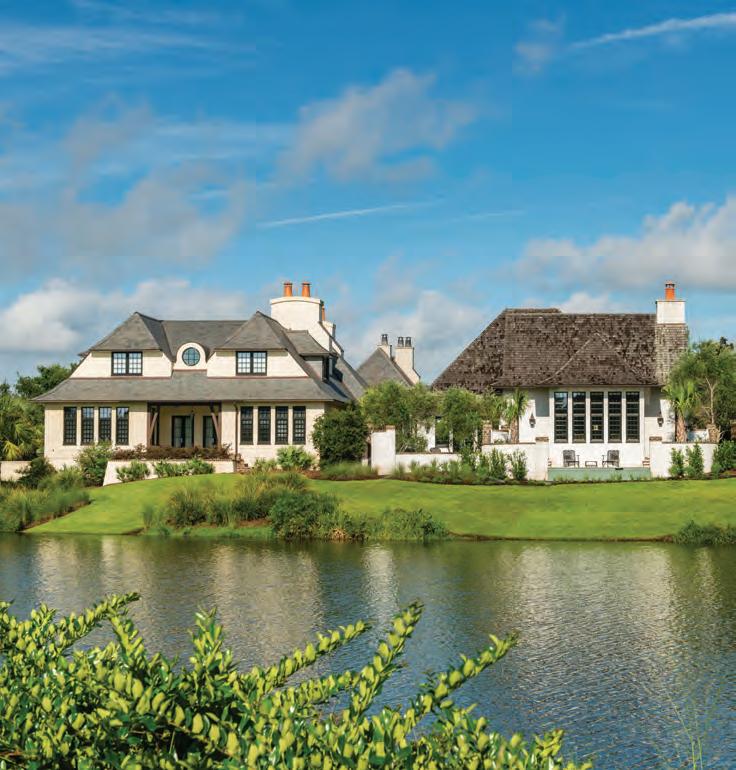
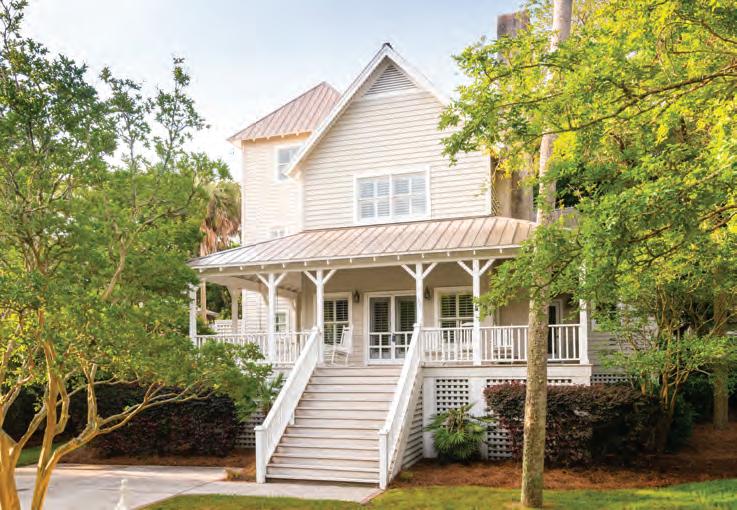
Originating in Britain in the late 1800s, the Art and Crafts movement has been a dominant influence on architectural expressions throughout the nation, indeed the world. A precursor to modern architecture, Arts and Crafts buildings emphasize simplicity, quality of material, and the importance of setting and the natural world. These values can be seen across the Island and expressed in a variety of styles, but the creation of Cassique and its quaint garden cottages defines the Kiawah Arts and Crafts style more specifically.
The Cassique Clubhouse, with its dramatic facade and sloping buttresses, is modeled after the original Arts and Crafts-style manor houses of late nineteenth-century England. Throughout Cassique, plaster and tabby homes echo the clean lines, proportional massing, dominant roof forms, and mulled windows framed by ample wall planes. The neighborhood nods to the British country estate that, despite its grace and simple grandeur, is identified by its lack of embellishment and its emphasis on craftsmanship. Throughout the island, the more modern, American expressions of the Arts and Crafts aesthetic are simple, with tapered columns, clean lines, and natural shingles.
And time marches on as it is wont to do. Genres unfold and expand. According to Permar, the emergence of progressive architecture on the Island introduced a more pronounced relationship between inside and outside. “These homes are inside-out buildings,” he explains. “It’s more about the experience of being inside the building than seeing a building from the outside.” And conversely, it’s about bringing the outside in. Thus the window openings are much larger, the structures unadorned and simple. The massing is different too. These modern expressions of architecture often have impressive height to take in sea or marsh views. There are detached guest houses, studios, and bedrooms healed into the landscape. Again, the emphasis on environment—to live in these homes is to be in constant communion with the trees, the light.
In a way, the modern home is a new take on the first cottages at Kiawah with its emphasis on environment. The architecture is meant to be a backdrop to nature, to frame it in subtle splendor. There are several hallmark iterations of the Coastal Modern style scattered across the Island but perhaps most concentrated in Ocean Park. Flat roofs and large single panes of glass peek out from the shady canopy of live oaks. And strangely, these modern homes don’t seem to clash with their more traditional neighbors. They are just different expressions of a fundamental code of color, material, scale, and siting. It is inspiring, somehow, to see these contrasting aesthetics standing side by side, at once the same but different through shared values.
These more progressive expressions show that there can be multiple solutions to achieve the same objective. They don’t exhibit normal structuring but instead break down scale and mass, and blur the lines between outside and inside. It’s more about the experience of being inside the building than seeing a building from the outside. And it’s all about the natural environment. The materials are natural and the colors blend into the tree setting. It’s warm, inviting, and peaceful. - Mark Permar

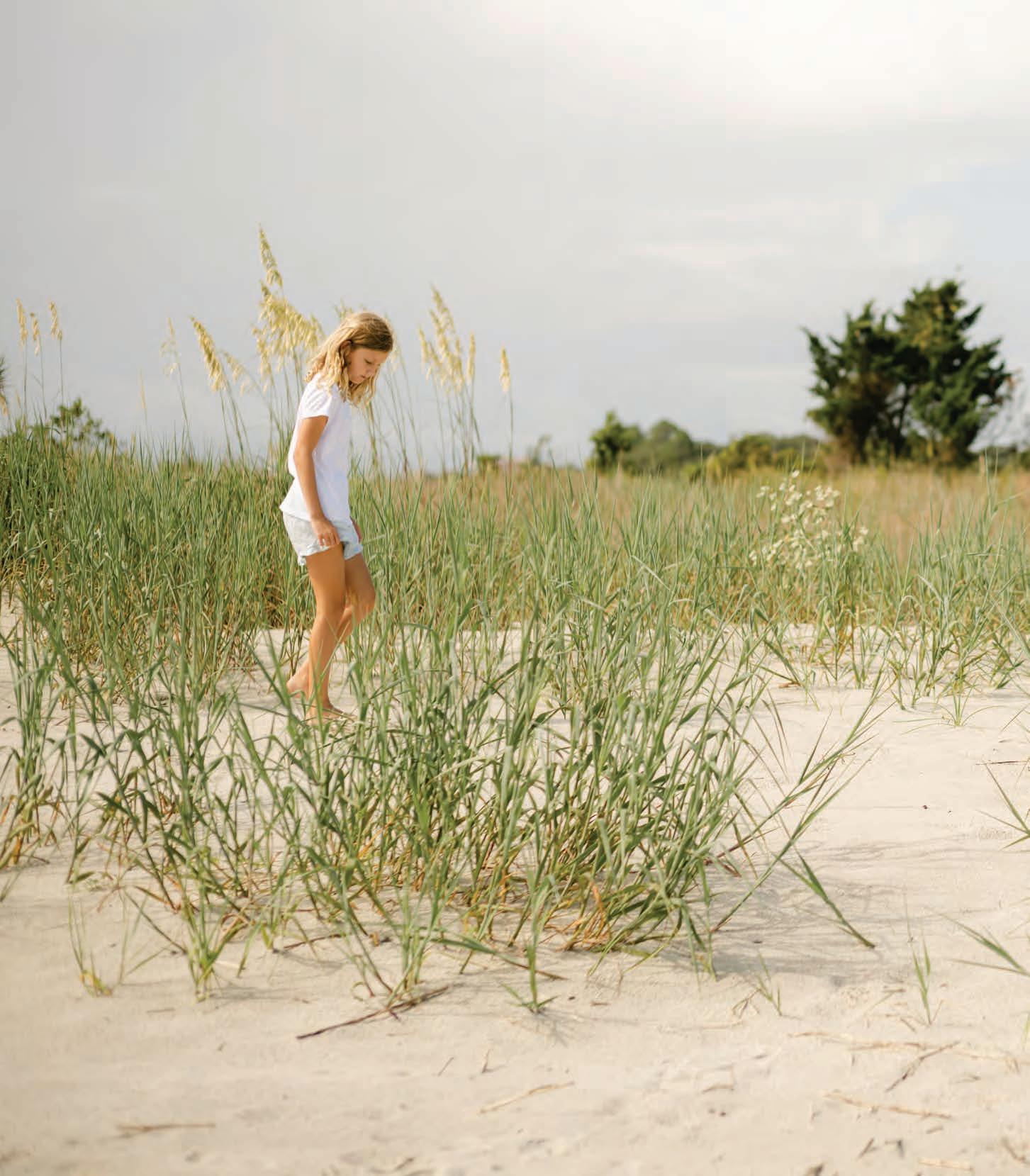
 PHOTOGRAPHY by CHARLOTTE ZACHARKIW
PHOTOGRAPHY by CHARLOTTE ZACHARKIW
Emily Dickinson
A something in a summer’s Day
As slow her flambeaux burn away Which solemnizes me.
A something in a summer’s noon— A depth—an Azure—a perfume— Transcending ecstasy.

And still within a summer’s night
A something so transporting bright I clap my hands to see—
Then veil my too inspecting face Lets such a subtle—shimmering grace Flutter too far for me—

The wizard fingers never rest— The purple brook within the breast Still chafes it narrow bed—
Still rears the East her amber Flag— Guides still the sun along the Crag His Caravan of Red—
So looking on—the night—the morn Conclude the wonder gay— And I meet, coming thro’ the dews Another summer’s Day!

 William Blake
William Blake
O Thou who passest thro’ our valleys in Thy strength, curb thy fierce steeds, allay the heat That flames from their large nostrils! thou, O Summer, Oft pitched’st here thy goldent tent, and oft Beneath our oaks hast slept, while we beheld With joy thy ruddy limbs and flourishing hair.
Beneath our thickest shades we oft have heard Thy voice, when noon upon his fervid car Rode o’er the deep of heaven; beside our springs Sit down, and in our mossy valleys, on Some bank beside a river clear, throw thy Silk draperies off, and rush into the stream: Our valleys love the Summer in his pride.
Our bards are fam’d who strike the silver wire: Our youth are bolder than the southern swains: Our maidens fairer in the sprightly dance: We lack not songs, nor instruments of joy, Nor echoes sweet, nor waters clear as heaven, Nor laurel wreaths against the sultry heat.

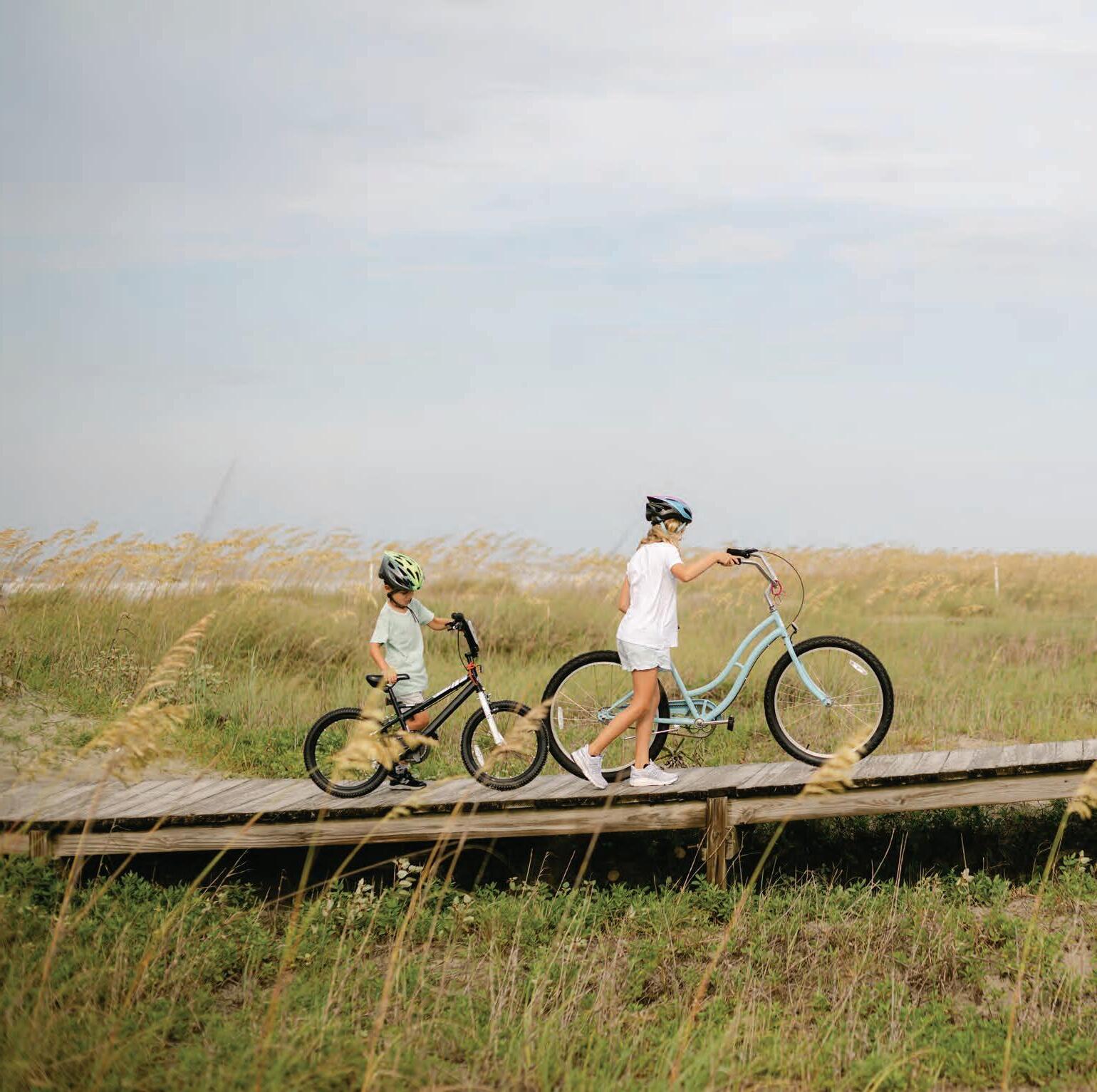
There may be lands more fair than mine, With skies of cloudless blue, Where morning’s dewdrops brighter shine On flowers of deeper hue, Which I might see were I to roam Afar from thee, my childhood’s home.
But while beneath this cloud-fleck’d sky The rose and violet bloom. And load each breeze that wanders by With freights of rich perfume, Tve joys I prize too much to roam Afar from thee, my childhood’s home.
There may be lands beyond the main Where lofty mountains rise. While over forest, lake, aud plain, The soaring eagle flies. Which I might see were I to roam Afar from thee, my childhood’s home.
But while the hills around me raise Their wooded slopes on high. Where wild birds strive, in joyous lays, Each other to outvie, I’ve joys I prize too much to roam Afar from thee, my childhood’s home.
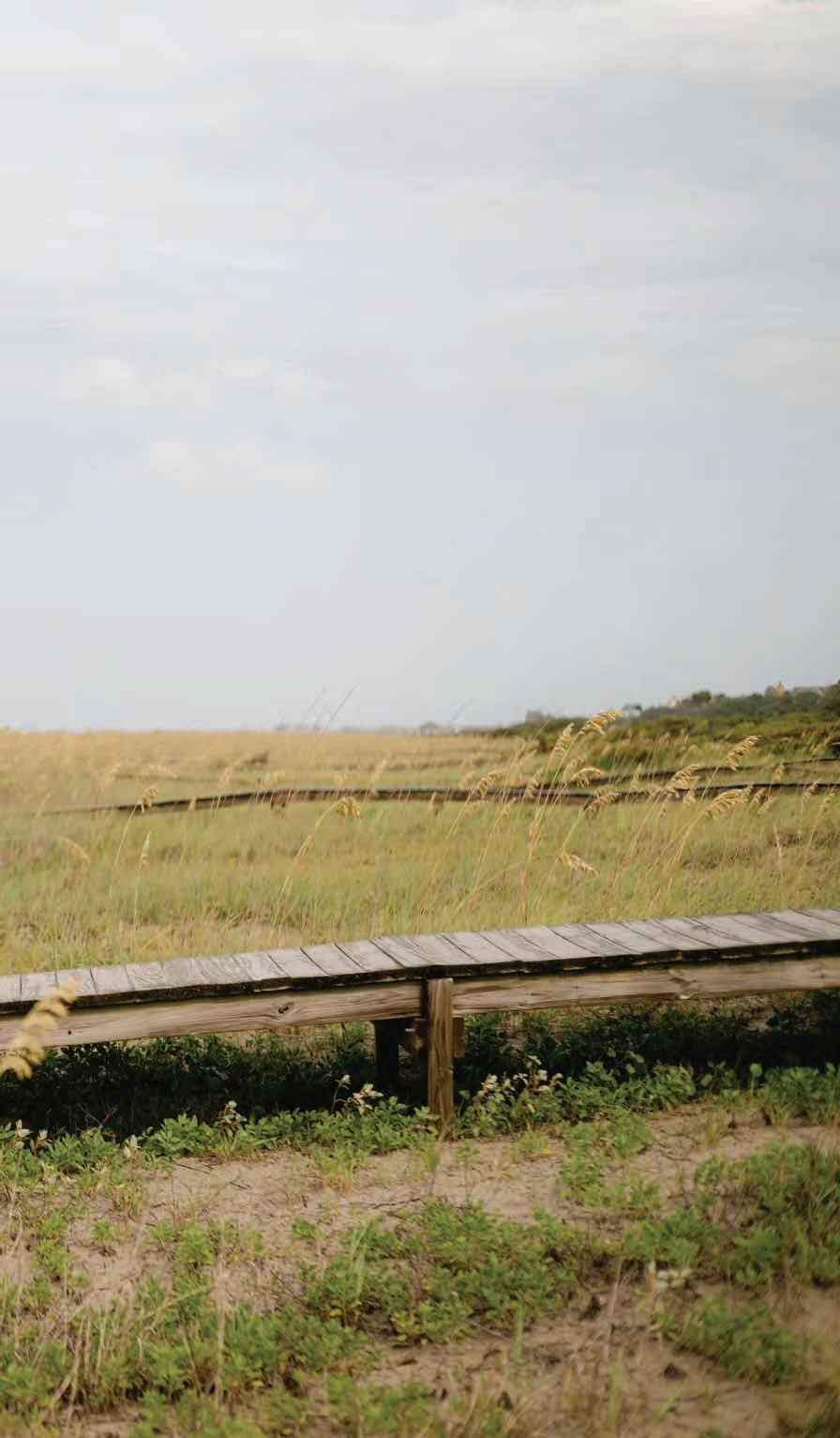
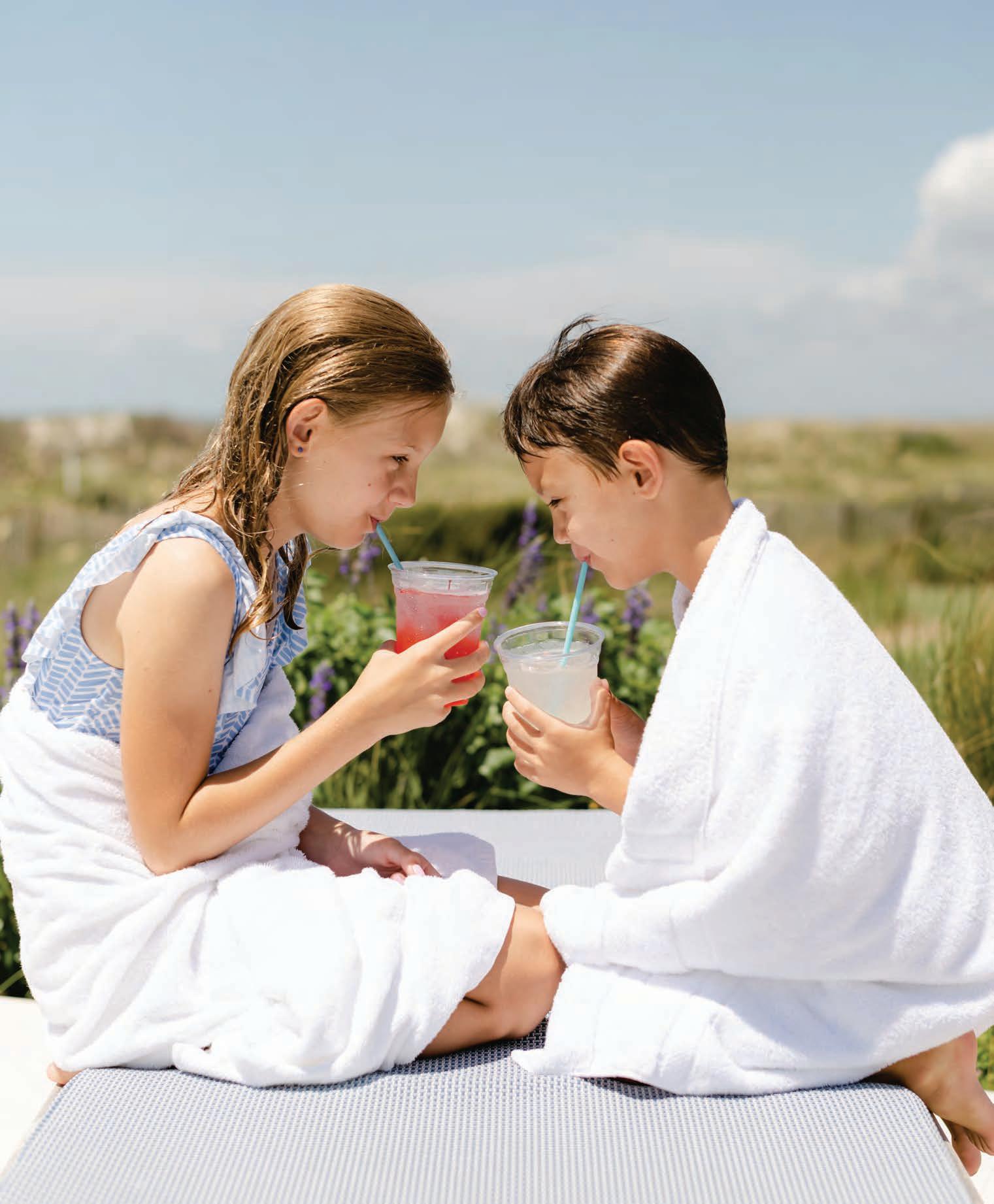
Warm summer sun, Shine kindly here, Warm southern wind, Blow softly here. Green sod above, Lie light, lie light. Good night, dear heart, Good night, good night.

When summer time has come, and all The world is in the magic thrall Of perfumed airs that lull each sense

To fits of drowsy indolence; When skies are deepest blue above, And flow’rs aflush,—then most I love
To start, while early dews are damp, And wend my way in woodland tramp
Where forests rustle, tree on tree, And sing their silent songs to me; Where pathways meet and pathways part,—

To walk with Nature heart by heart, Till wearied out at last I lie
Where some sweet stream steals singing by A mossy bank; where violets vie
In color with the summer sky,—
Or take my rod and line and hook, And wander to some darkling brook, Where all day long the willows dream, And idly droop to kiss the stream.
[poem excerpt]
Photos of Jack and Grace McClure



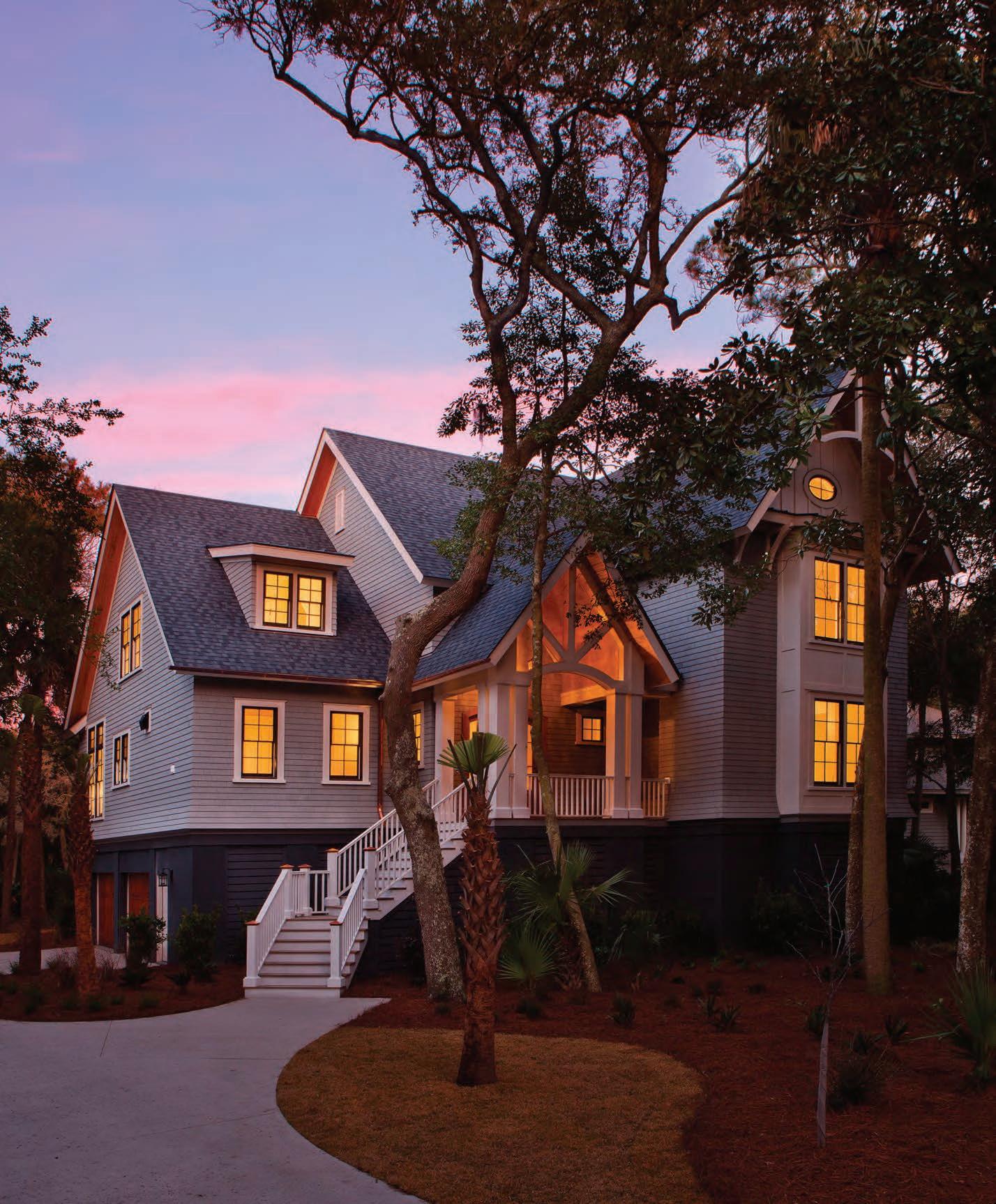
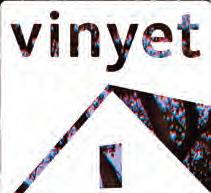


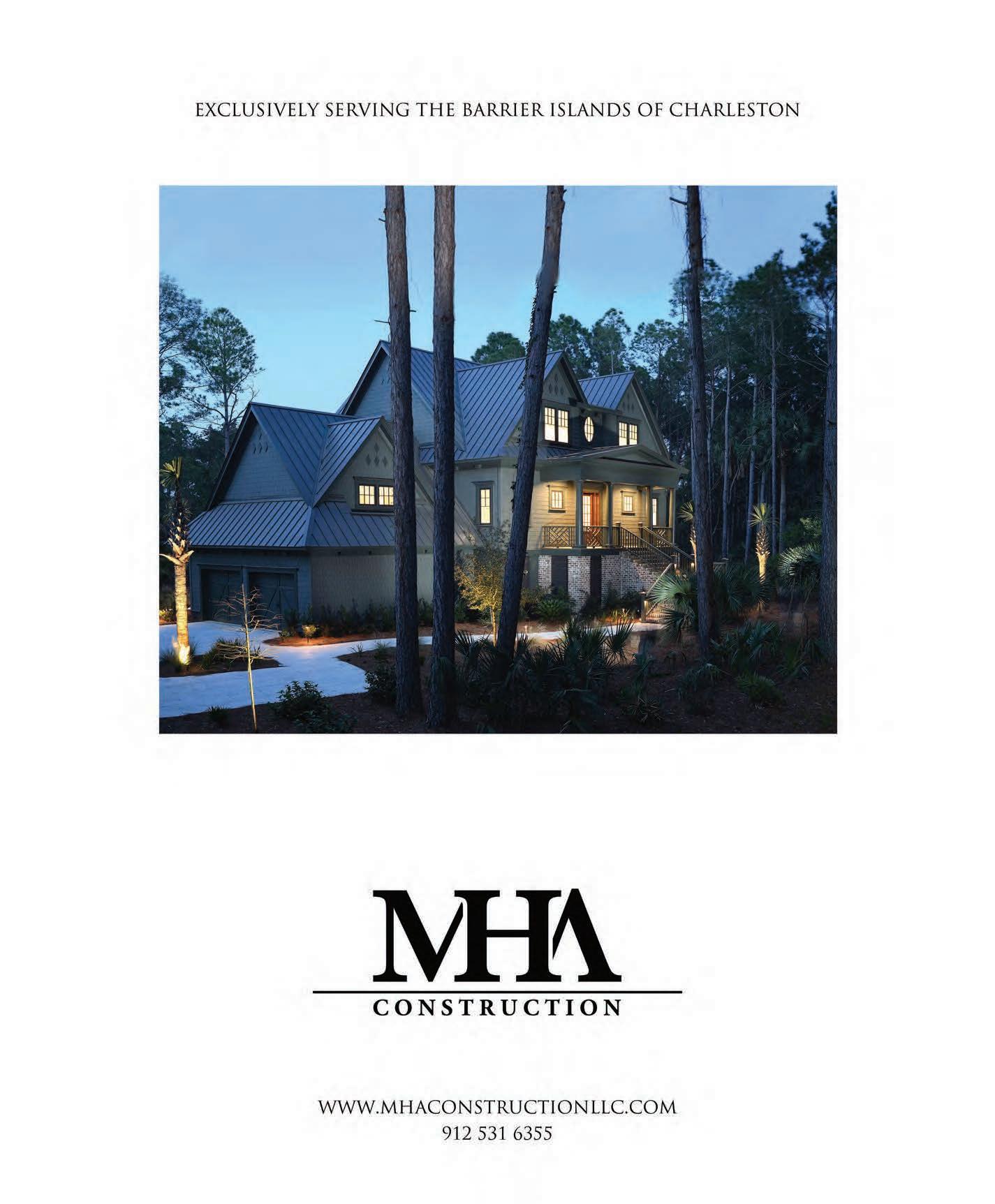
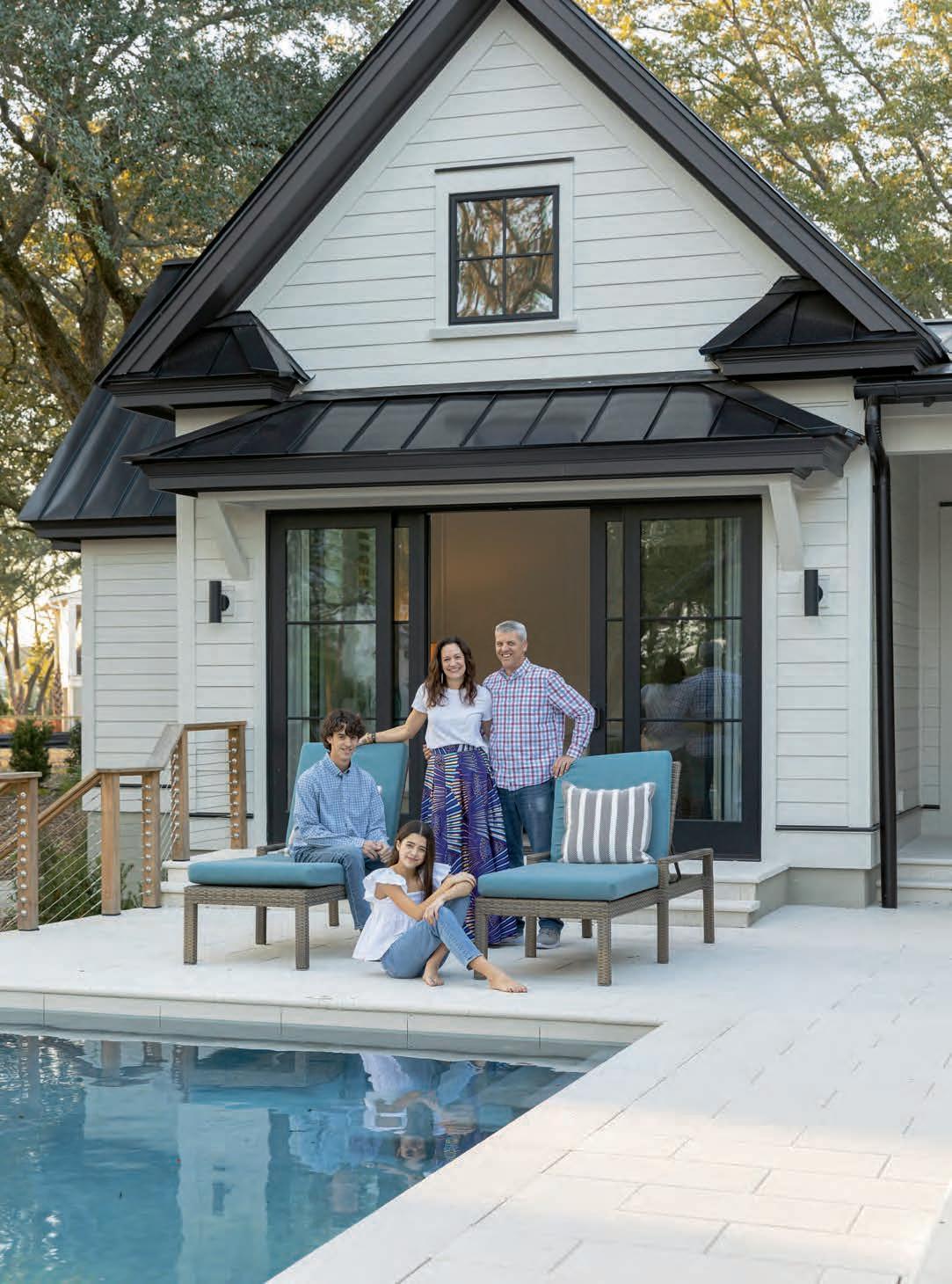


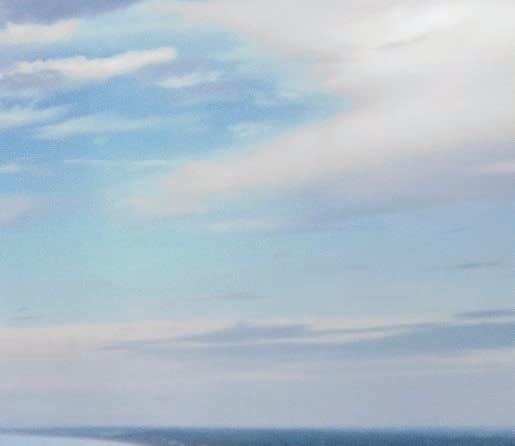





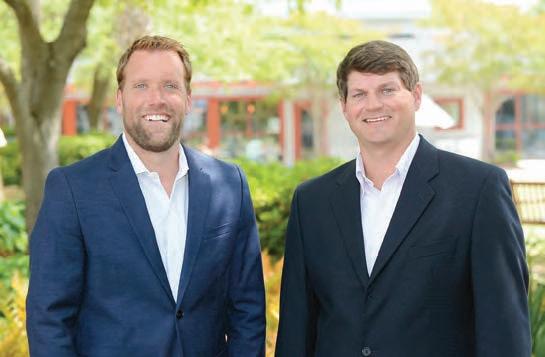

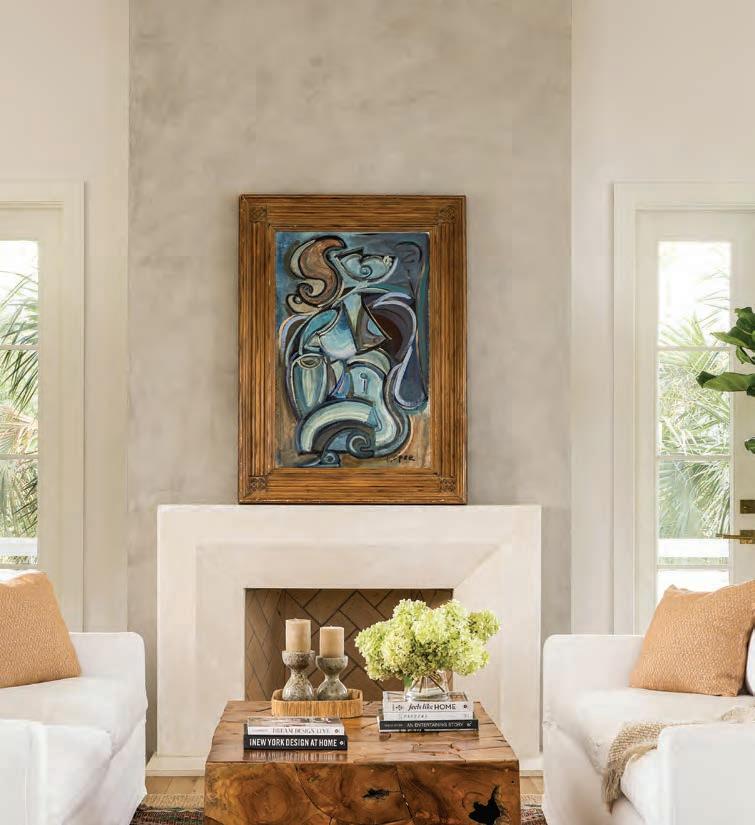






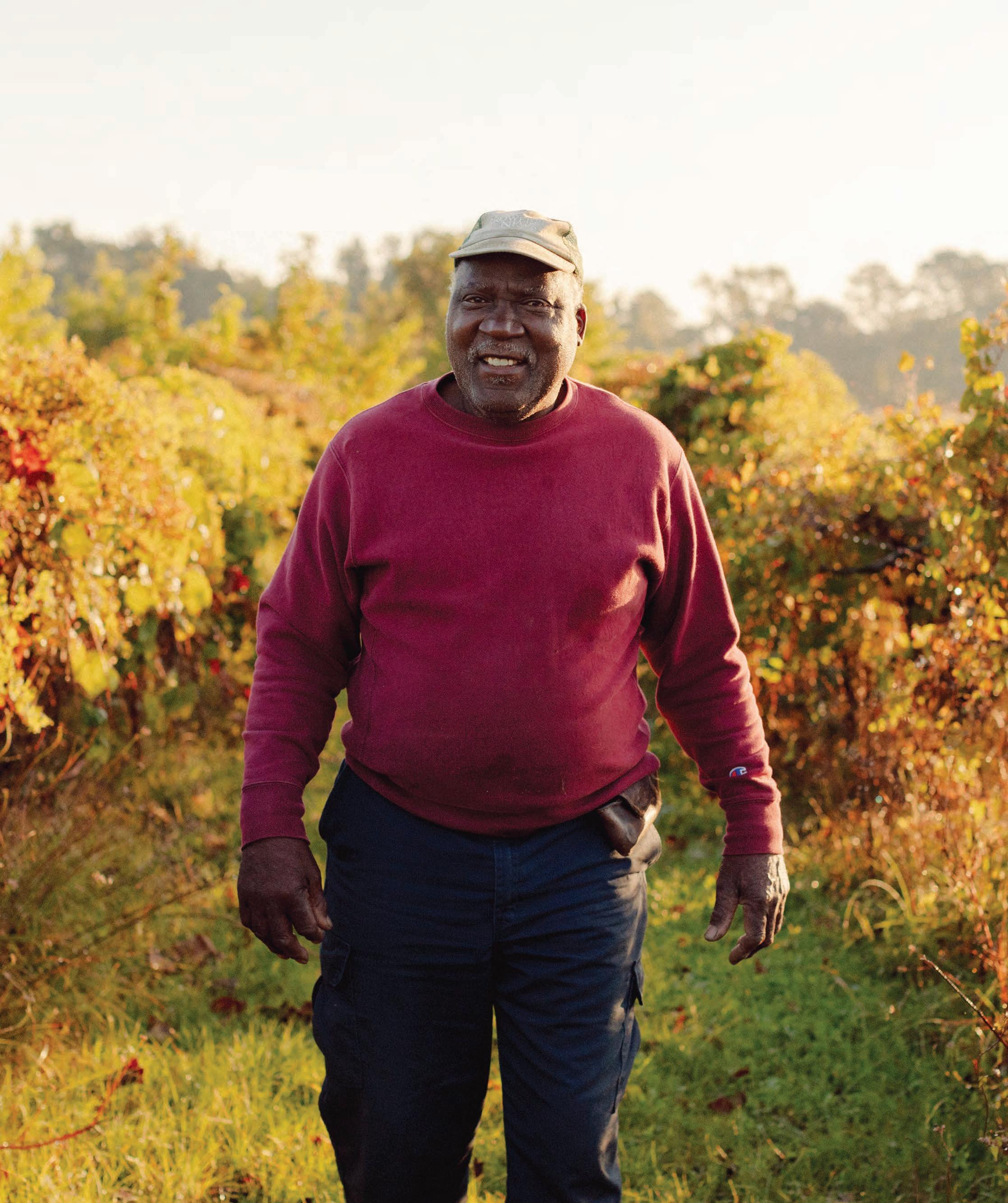
 STORY by LUANA GRAVES SELLARS
PHOTOGRAPHY by LIZZY ROLLINS
STORY by LUANA GRAVES SELLARS
PHOTOGRAPHY by LIZZY ROLLINS
It is impossible to experience Gullah cuisine without understanding the story of the Gullah Geechee people, the direct descendants of enslaved West Africans specifically imported to the Lowcountry for their expertise in growing rice. And the origin of Gullah food dates back thousands of years. This cuisine beget by slavery is deeply rooted in West African culture and is a testament of the adaptability and creativity of the enslaved people.
The story of rice, as a valuable commodity and a primary staple, echoes a way of life prior to enslavement. Traditionally, West African women were the caretakers of seeds, and upon capture, enslaved women braided rice grains into their hair and carried the seeds with them on the arduous journey across the ocean. The environments of the Lowcountry and the African West Coast are very similar, which made the continuation of cooking practices seamless as the slave trade grew. For instance, jollof rice in West Africa translated to red rice, now a Gullah staple.
Gullah traditions, significantly foodways, were passed down orally from generation to generation. Recipes and cooking methods were not written down—they couldn’t be. Seasonal crops and availability dictated cooking practices. Preparation styles, heavily influenced by African traditions, evolved within a history of poverty and of learning to “makedo.” They used all parts of the rice plant. For example, the stalk of the plant became padding to sleep on, and grains broken during processing turned up on the table as grits.
Cooking for themselves, enslaved people often only had access to a single pot, a cast-iron pan if they were lucky. This resulted in many enduring Gullah one-pot meals still enjoyed today, like Hoppin’ John. And limited tools called for creativity. Yams were cooked under the pot in the ashes, and if meat was available, it was roasted above the pot. Most often, enslaved people only received the cast-off parts from cows and pigs, and they transformed these scraps into delicious dishes. Cooking over a fire meant simmering the food on low heat, with preparation completed in the early morning, which gave the meal time to slowly cook all day. The lack of measuring cups meant seasoning by a “pinch” or “dash.”
YAMS WERE COOKED UNDER THE POT IN THE ASHES, AND IF MEAT WAS AVAILABLE, IT WAS ROASTED ABOVE THE POT. MOST OFTEN, ENSLAVED PEOPLE RECEIVED THE CAST-OFF PARTS FROM COWS AND PIGS, AND THEY TRANSFORMED THESE SCRAPS INTO DELICIOUS DISHES.
ABOVE: Kiawah Island Club Chef Sly Holmes at Fields Farm LEFT: Farmer Joseph Fields | Fields
Farm is a fifty-acre, certified organic fruit and vegetable farm on Johns Island. Fields is a thirdgeneration Gullah-Geechee farmer and steward of traditional food and farming practices.
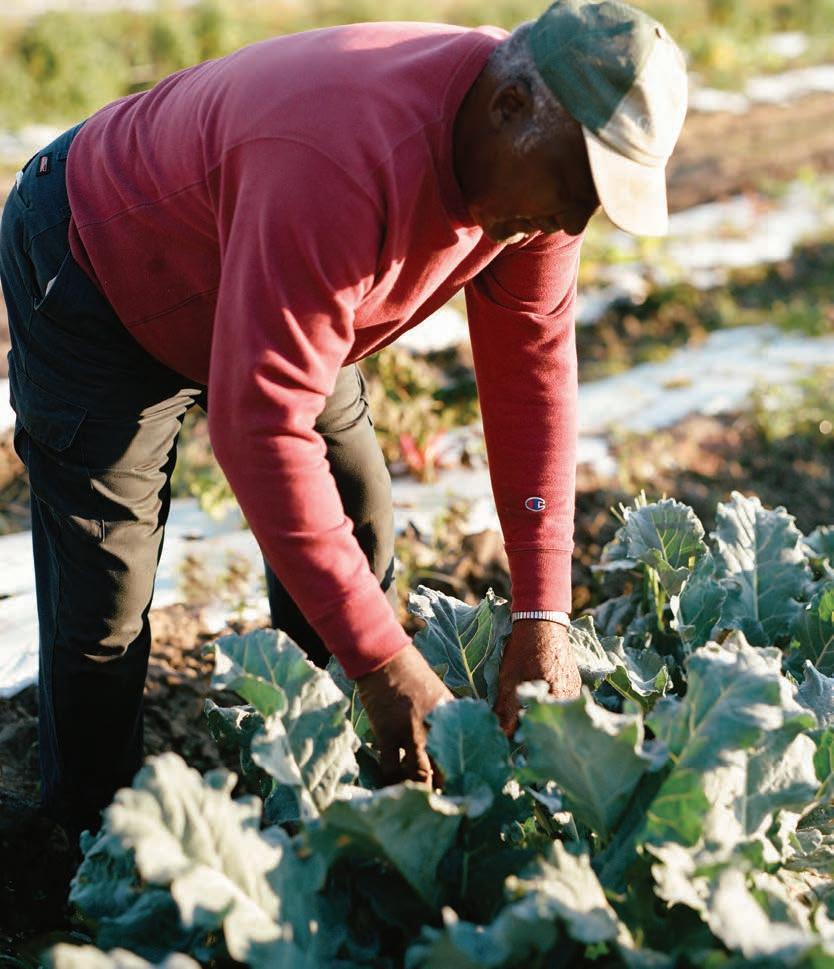



After emancipation, the eventual diaspora, or “scatter,” spread these traditional styles of cooking beyond the Sea Islands. Gullah Geechee foodways are one of the oldest traditions still widely practiced in America today. And it remains central to current Gullah culture to gather for Sunday dinner. Roasting a pig for the holidays or a celebration that feeds an entire community is still common.
Today, Gullah cooks pride themselves on their ability to season and measure by memory, sight, and taste. Gullah Chef Sly Holmes shares his traditional cooking style at the River Course on Kiawah. “Most of my recipes are stored in my head,” he says. “I don’t need it on paper. I do it by experience, taste, and smell…and if I don’t like it, I won’t feed it to anyone.”
GULLAH COOKS PRIDE THEMSELVES ON THEIR ABILITY TO SEASON AND MEASURE BY MEMORY, SIGHT, AND TASTE. GULLAH CHEF SLY HOLMES SHARES HIS TRADITIONAL COOKING STYLE AT THE RIVER COURSE ON KIAWAH.
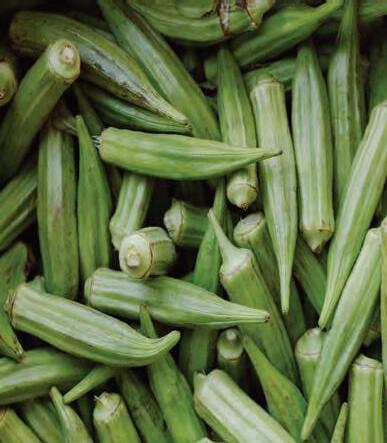

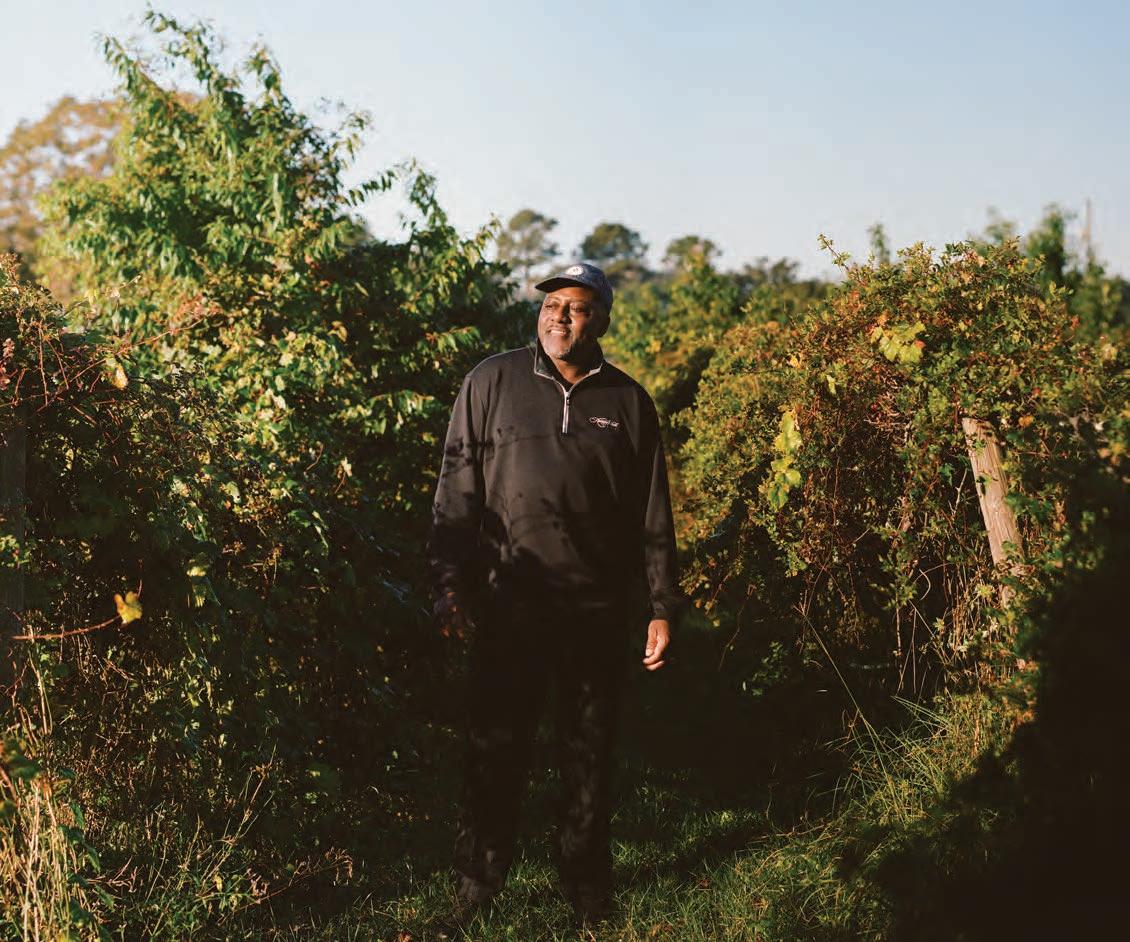
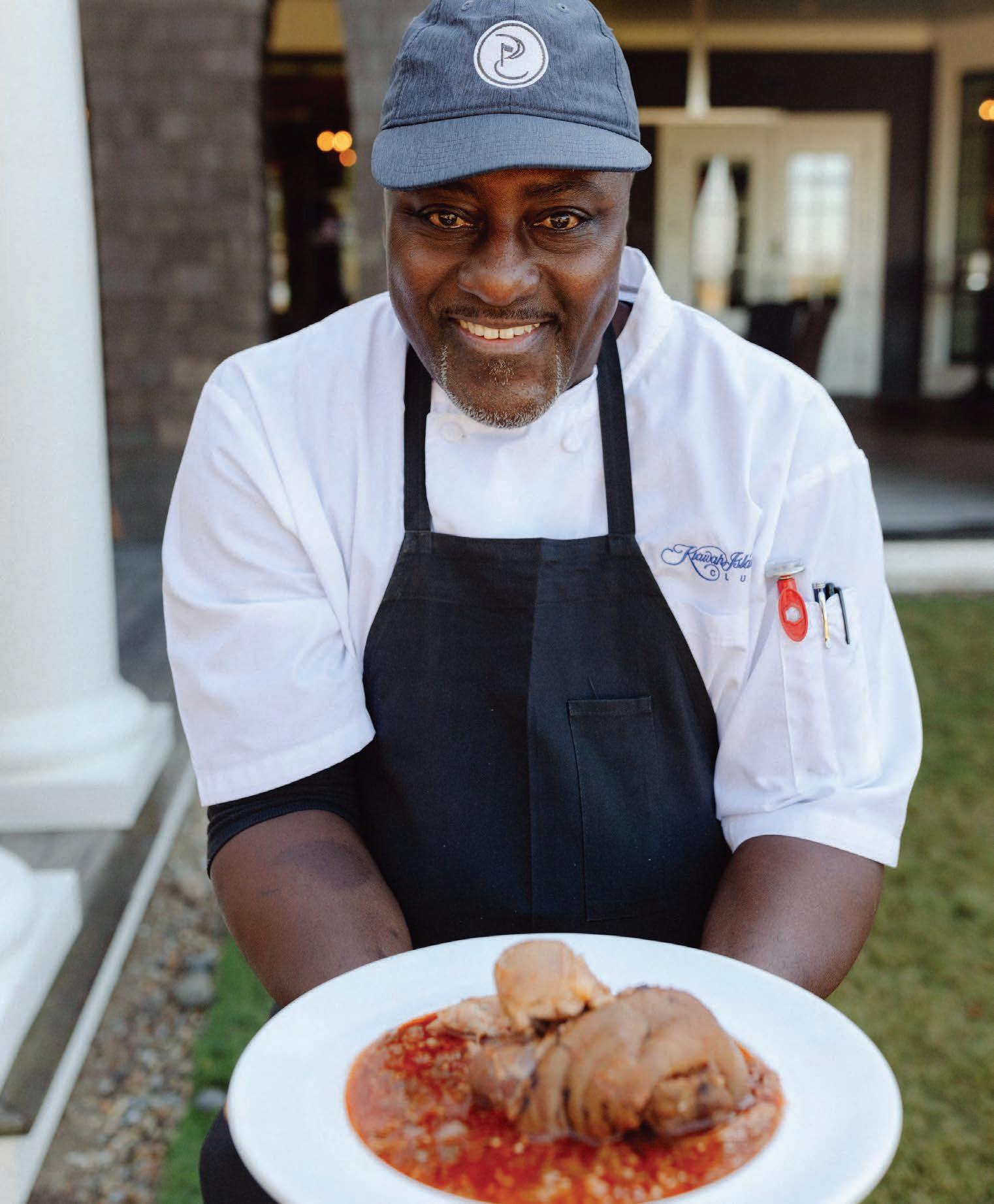
Rice is almost always central to Gullah dishes. Purloo is made with oysters or crab, turkey, chicken or pork, garlic, and red rice with sausage. Adding flavor and seasoning is crucial, and hot peppers are a primary ingredient. Meals have always been tied to the seasons, to what could be grown and caught. For example, the fall harvest brought ripening pecans, walnuts, and wild chinquapins (dwarf chestnuts), which were abundant and used to make pies. Homemade wines were made from fruits like blackberries, mulberries, and plums.
Many Gullah chefs would say soul food or Southern cooking is often interpreted as an offshoot of Gullah cooking. There is certainly an overlap with dishes like okra soup, red rice, and fried fish. A sweet potato pone, which is similar to cornbread, has been a staple on the Sea Islands for ages. And using peanut butter or nuts in recipes is another direct connection to West African cooking practices. But, in truth, Southern cooking is a mishmash of influences and ingredients and people. For example, purloo is the Lowcountry version of a pilaf and is very similar to a Louisiana jambalaya.
Today, the Lowcountry boil is a Southern staple, made from traditional ingredients like shrimp, corn, sausage, and potatoes. It’s another one-pot meal with origins tracing back to the Gullah people of the Southeastern coastline. Steeped in history and culture, the Gullah foodways offer an opportunity to connect with the past. The next time you eat Gullah food, take a moment to appreciate its incredible origins. — L.G.S.
Okra and Stewed Tomatoes
2 ham hocks
2 pig tails
1 yellow onion, peeled and chopped
2 carrots, peeled and chopped
1 bunch celery, washed and chopped
1 gallon water
Bring all ingredients to a boil and reduce to a simmer. Simmer for 45 minutes to 1 hour. Strain out meat and vegetables. This makes 2 quarts of ham stock.
6 pieces bacon, sliced thin
1 yellow onion, diced small
4 garlic cloves, minced
2 Tbsp unsalted butter
1.5 lbs fresh okra, sliced (do not use frozen okra!)
1 large beefsteak tomato, diced
1 quart ham stock
1 15-ounce can diced tomatoes
1 15-ounce can tomato sauce
1 6-ounce can tomato paste
Pinch sugar, with more to taste
Kosher salt and freshly ground black pepper to taste
Render bacon in sauce pot until browned. Add butter, onion, and garlic and simmer on low until onions are translucent. Add okra, canned and diced fresh tomatoes, 1 quart ham stock, and tomato sauce. Simmer for 20–25 minutes. Add tomato paste, sugar, kosher salt, and freshly ground pepper to taste. Simmer for 10 minutes, adjust seasoning to taste. Serve with Carolina Gold rice.
THE LOWCOUNTRY BOIL IS A SOUTHERN STAPLE, MADE FROM TRADITIONAL INGREDIENTS LIKE SHRIMP, CORN, SAUSAGE, AND POTATOES. IT’S ANOTHER ONE-POT MEAL WITH ORIGINS TRACING BACK TO THE GULLAH PEOPLE OF THE SOUTHEASTERN COASTLINE.


The years 1670 to 1720 marked South Carolina’s Golden Age of Piracy. The coastline teemed with danger as pirates attacked foreign and friendly ships alike. Not to be confused with privateering, the legal practice where a private ship takes prizes on behalf of one’s own country, pirates robbed at sea indiscriminately. A wealthy fledgling colony with an important port, Charleston became a target for infamous pirates like Stede Bonnet and Blackbeard. Pirates were tacitly accepted in these early days because they brought goods for trade and wealth to spend.
WRITTEN by CHRISTINA RAE BUTLERGeorge Raynor sailed in the early days of the colony when there was limited British Royal Navy presence. Raynor and his ship Loyal Jamaica arrived in the Charleston harbor in 1692 with a crew of forty men and “large quantities of silver and gold. By means of their wealth they found immediate favor and officials were so far swayed by considerations of which history does not speak, that they were permitted to remain in the province unmolested.” Grand Council records from April 1692 bear Raynor’s statement that his ship was a lawful prize taken in the war against France.
Raynor was a shrewd player and ended his career on a high note rather than capture and trial. He settled on Kiawah Island, at the time still a wilderness inhabited by the native Kiawah Indians. He allegedly kept two small patrol ships at Old Dock Creek on the backside of the island. By 1700 he had settled into polite society. Raynor was granted 2700 acres on Kiawah (virtually the whole island), three town lots in Charleston, and over a thousand acres on the west side of the Stono River. He sold half of Kiawah shortly after receiving his land grant, and the other half passed to his daughter Mary Raynor Moore (who had married the governor’s son). Legends persist that part of Raynor’s treasure is still buried on Kiawah, awaiting rediscovery.
When the English were at war with the French and Spanish, their privateers pursued foreign ships on their way to and from the colonies along the South Carolina coast. During times of peace, however, many privateers turned to fullfledged piracy, leading to a resurgence of activity from 1716 to 1720. Pirates based in the Caribbean began creeping further north to the waters off Carolina in hopes of stealing valuable cargo from passing merchant ships. Stede Bonnet, Charles Vane, Christopher Moody, Anne Bonny, Richard
Worley, and even the infamous Edward Teach, better known as Blackbeard, preyed upon the coastline.
Lady pirates were uncommon, but the Golden Age of Piracy saw two: Mary Read and Anne Bonny. Bonny was born in Cork, Ireland, the illegitimate daughter of a maid and a married attorney. The attorney decided to raise his young daughter after the maid was imprisoned for theft, but “so as to disguise the matter from the town as well as his wife, he had put it in to breeches, as a boy, pretending it was a relation’s child he was to breed up to be his clerk.” Eventually young Bonny and her father headed to Carolina to start a new life, where he continued practicing law and Bonny kept house. Eyewitnesses said that Bonny “was of a fierce and courageous temper.” Bonny’s father hoped to marry her to a gentleman, but she met infamous pirate “Calico Jack” Rackham “and consented to elope with him and go out to sea in men’s clothes.”
Mary Read was born in England and allegedly disguised as a boy so her mother could pass her off as a deceased son to collect an inheritance. Legend states that Read later dressed in drag to join the military. When her ship was taken by Rackham, she willingly joined his crew. She met Rackham’s lover, lady pirate Anne Bonny, who “took a particular liking to her, took her for a handsome fellow.” They confided in one another and soon discovered they were both women. When Rackham threatened to cut Read’s throat out of jealousy, they let him in on their secret. Eventually the crew was captured and tried for piracy in Jamaica in 1720. Rackham and many of the crew were executed, but Read and Bonny were spared because they claimed to be pregnant. Read died from a fever in prison, and Bonny’s story ends in mystery, as no one knew what became of her after she left prison, only that she was not executed. Perhaps she returned to Charlestown.
Right : MARY READ | CIRCA 1710 | UNKNOWN ARTIST

Top Right PURSUIT OF A PIRATE LUGGER | THOMAS BUTTERSWORTH
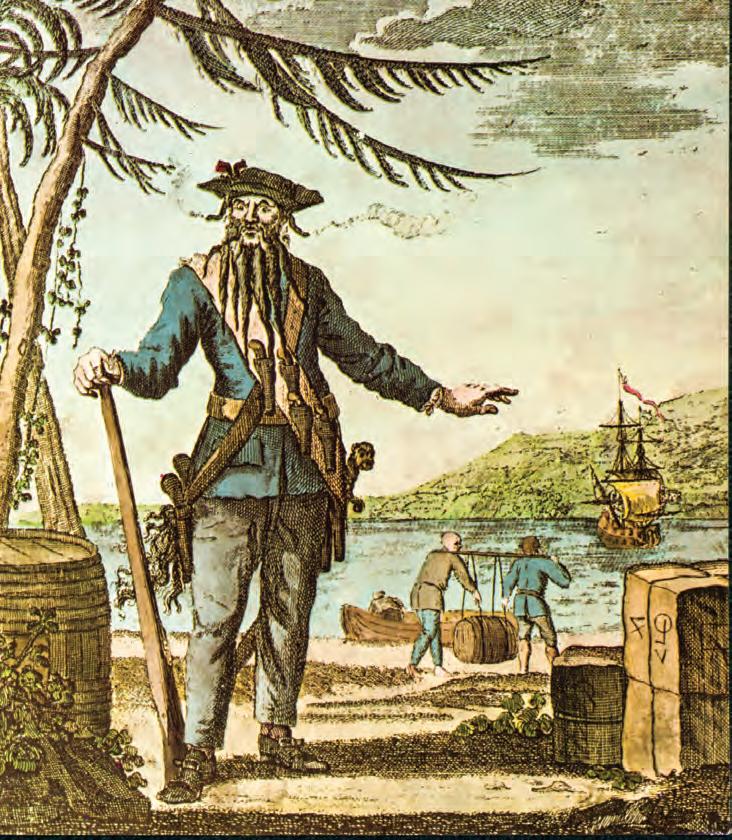
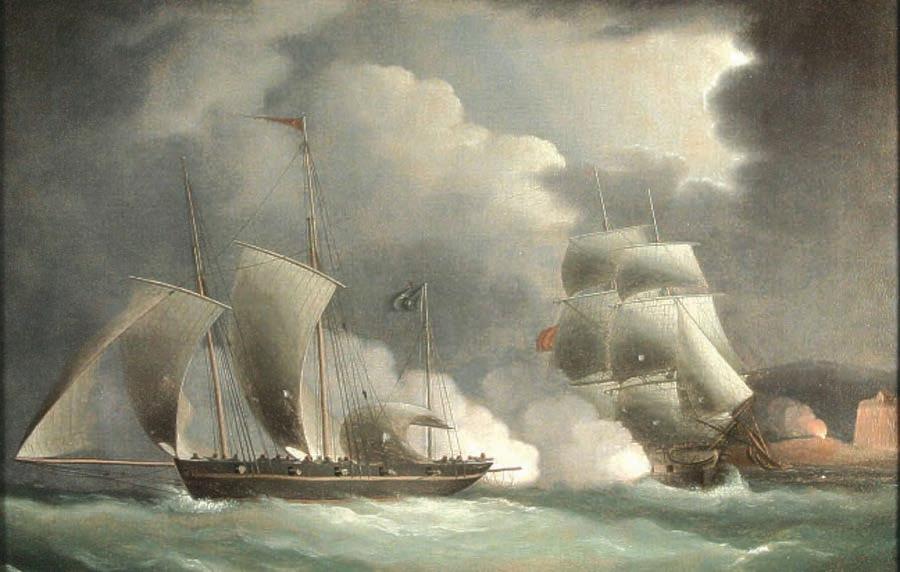
| CIRCA 1825 Top Left ANN BONNY AND MARY READ CONVICTED OF PIRACY NOVR. 28TH | A GENERAL HISTORY OF THE ROBBERIES AND MURDERS OF THE MOST NOTORIOUS PYRATES, 1724 | ENGRAVING BY BENJAMIN COLE Bottom : EDWARD TEACH COMMONLY CALL’D BLACK
BEARD | CIRCA 1726 | ARTIST UNKNOWN

Meanwhile in Carolina, the infamous Stede Bonnet was menacing the coast. Born into wealth on the island of Barbados in 1688, Bonnet was a member of the planter elite and purchased a ship to begin his career in piracy. His contemporaries wrote, “The major was a gentleman of good reputation, was master of a plentiful fortune, and had the advantage of a liberal education. He had the last temptation of any man to follow such a course of life, from the condition of his circumstances. It was surprising to everyone to hear of the major’s enterprize . . . of going a pyrating . . . proceeded from a disorder in his mind, and which is said to have been occasioned by some discomforts he found in a married state.” Bonnet abandoned his wife and three young children for a life on the seas aboard the Revenge.
During his short career, Bonnet sailed to the Chesapeake, New York, the West Indies, Glasgow, the Caribbean, and to New Providence Island, Bahamas. He fell “into company with another pyrate, one Edward Teach, who for his remarkable black ugly beard, was more common called Blackbeard. This fellow was a good sailor, but a most cruel hardened villain, bold and daring to the last degree, and would not stick at the perpetrating the most abominable wickedness imaginable.” Born in Bristol, Blackbeard was an experienced seaman who worked his way up from deckhand to captain.
In September 1717 King George I issued a proclamation of amnesty to pirates who took an oath of good behavior.
Bonnet accepted amnesty and resumed command of the Revenge in legal pursuit of Spanish ships along the American coast as a privateer. A life of crime on the high seas was too tempting, however, and Bonnet soon began indiscriminately attacking English and foreign ships alike. He terrorized the coast between Virginia and Carolina, taking thirteen prizes in just two months. Bonnet and Blackbeard managed to successfully blockade Charleston harbor for six days in May 1718, demanding medicine and supplies. Bonnet then went north to Delaware Bay and captured two sloops, the Francis and the Fortune, in July. Bonnet’s luck ran out when he was captured in the fall of 1718 by Colonel William Rhett, who set out with two armed sloops, the Henry and the Sea Nymph, in search of the pirate ships terrorizing the coast. Historian Lindley Butler explains, “Rhett entered the Cape Fear River at dusk on September 26. The next morning a fierce six-hour battle was fought with cannons and small arms, ending with the surrender of Bonnet and his remaining men. Rhett returned to Charleston with thirty-six prisoners, ‘to the great Joy of the whole Province of Carolina.’” Bonnet managed to escape from Charlestown (legend has it he was disguised in women’s garb), before being caught again on Sullivan’s Island. Meanwhile, Blackbeard met his demise in 1718 in a fierce battle with Lieutenant Robert Maynard off Ocracoke Island in North Carolina. He was shot five times, and Maynard allegedly suspended Blackbeard’s severed head from the bowsprit of his boat.
THIS FELLOW WAS A GOOD SAILOR, BUT A MOST CRUEL HARDENED VILLAIN, BOLD AND DARING TO THE LAST DEGREE, AND WOULD NOT STICK AT THE PERPETRATING THE MOST ABOMINABLE WICKEDNESS IMAGINABLE.
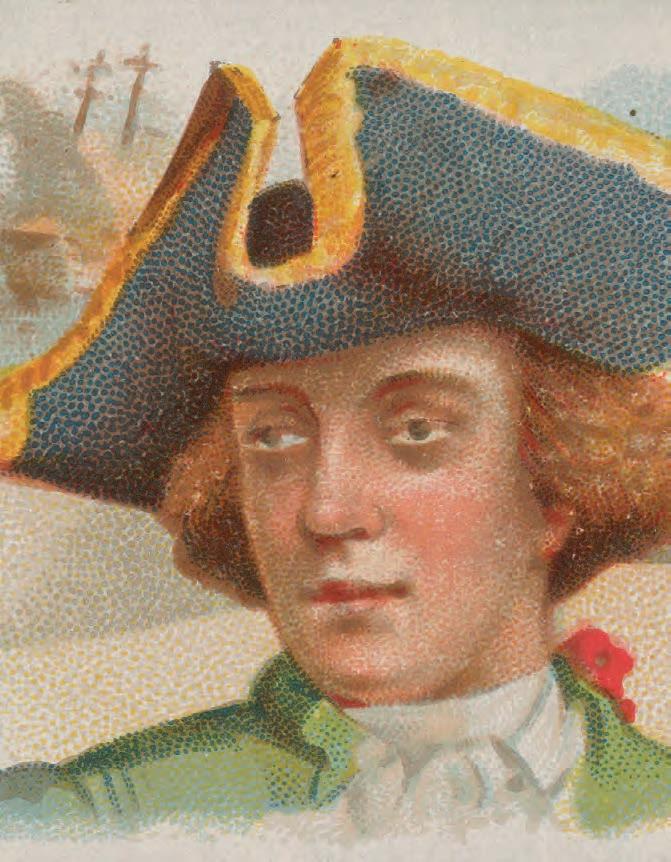
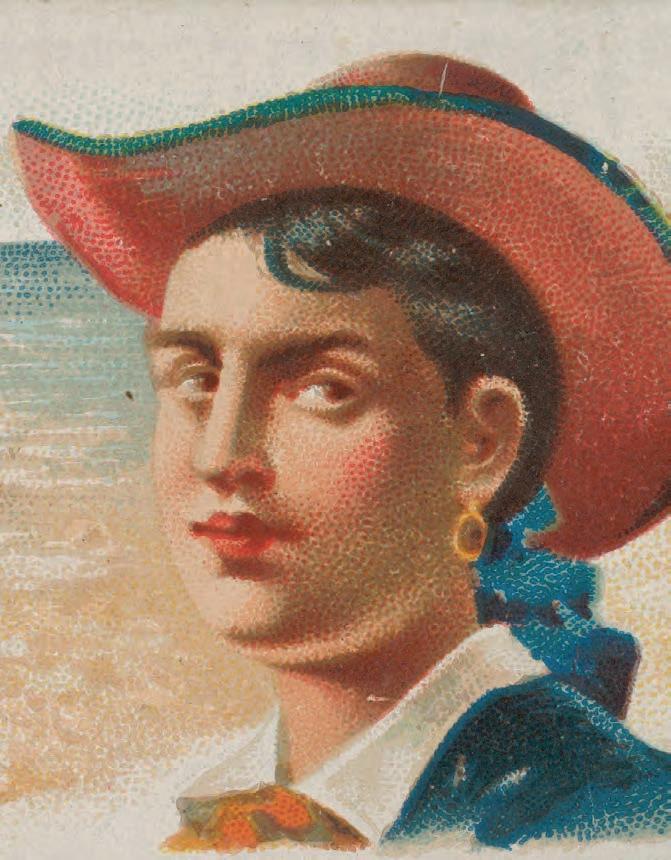
THE PIRATE TRIALS OF 1718 WERE THE SPECTACLE OF THE DECADE, FULL OF DETAILS OF SWASHBUCKLING AND DESCRIPTIONS OF THE INFAMOUS CAPTAINS. ULTIMATELY, JUDGE NICHOLAS TROTT CONDEMNED FORTY-NINE MEN TO BE HANGED FOR THEIR CRIMES ON THE HIGH SEAS, IN A SERIES OF THIRTEEN TRIALS.


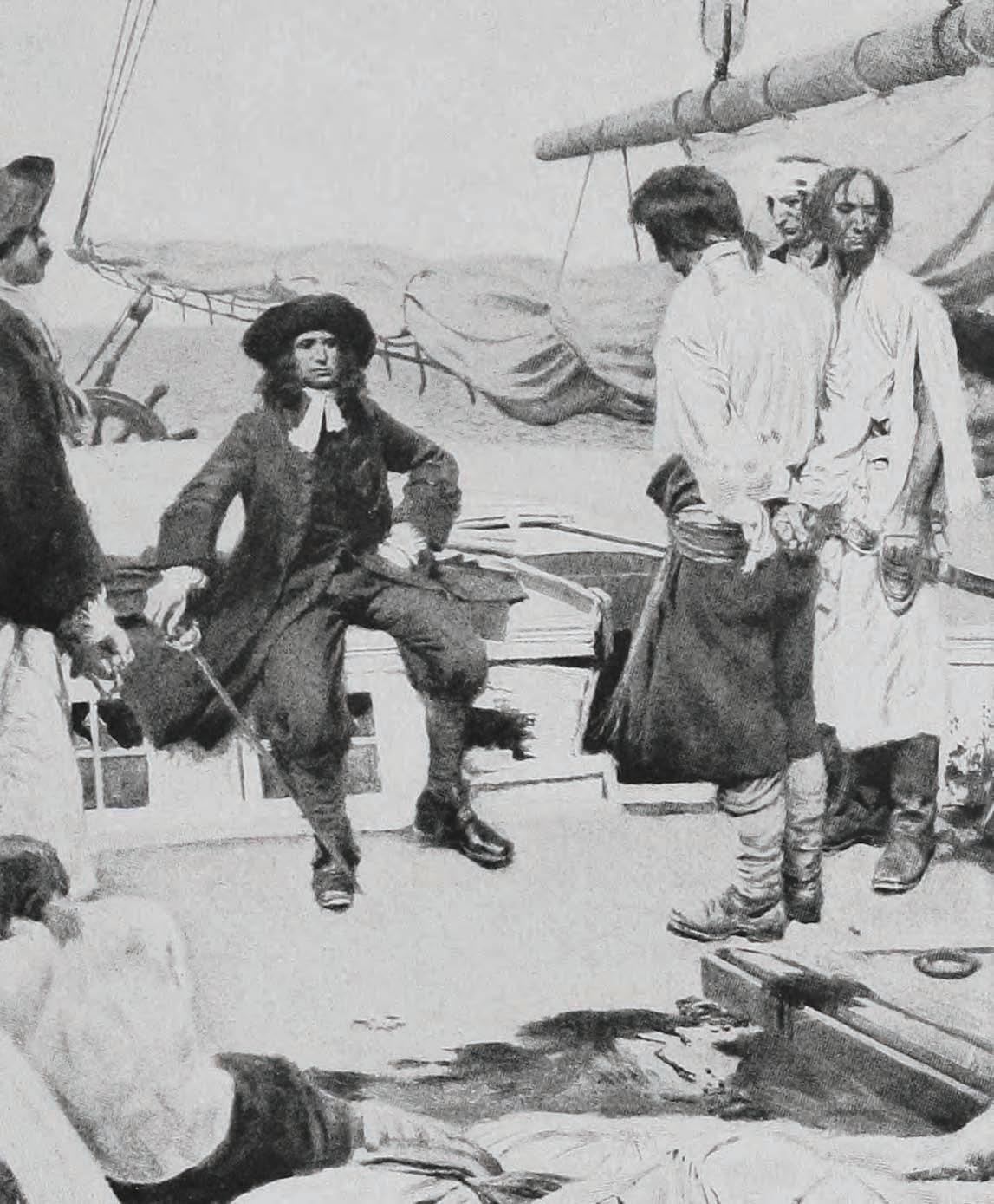
The pirate trials of 1718 were the spectacle of the decade, full of details of swashbuckling and descriptions of the infamous captains. Ultimately, Judge Nicholas Trott condemned forty-nine men to be hanged for their crimes on the high seas, in a series of thirteen trials. Twentynine of Bonnet’s crew, which included men from Jamaica, Aberdeen, Kent, Bristol, Antigua, Dublin, Holland, Gurnsey, London, and Glasgow (with aliases like “Timberhead” and “Rattle”), and William Smith, Jonathan Clarke, and Samuel Booth of Charleston were executed at White Point Gardens on November 8, followed by Bonnet himself at the same location in early December.

As English Admiralty law dictated, the men were hanged on the water’s edge between high and low tide. Historian Nic Butler explains, “Both Admiralty Law and Common Law claim jurisdiction over what is sometimes called the ‘intertidal zone,’ that is, the mudflats and beaches that are dry at low tide but underwater at high tide. This space is divisum imperium, or divided empire—a place where the legal jurisdiction alternates with the daily cycles of the tides. Capital offenses that were committed and tried at sea were punished by executions at sea. Capital offenses that were committed at sea but tried on land, however, were punished by executions within this intertidal zone.”
Fear of pirates persisted throughout the eighteenth century, and occasionally Charlestown received reports of treachery off the coast, but Carolina’s Golden Age of Piracy essentially came to an end after the 1718 executions and with more protection from the British Royal Navy in the 1720s. Legends continued to circulate for decades, of hidden pirate treasures waiting to be uncovered along the Lowcountry coast. Still today, tourists and locals alike love a swashbuckling story of prizes and battles from the Golden Age of Piracy over three hundred years ago. — C.B
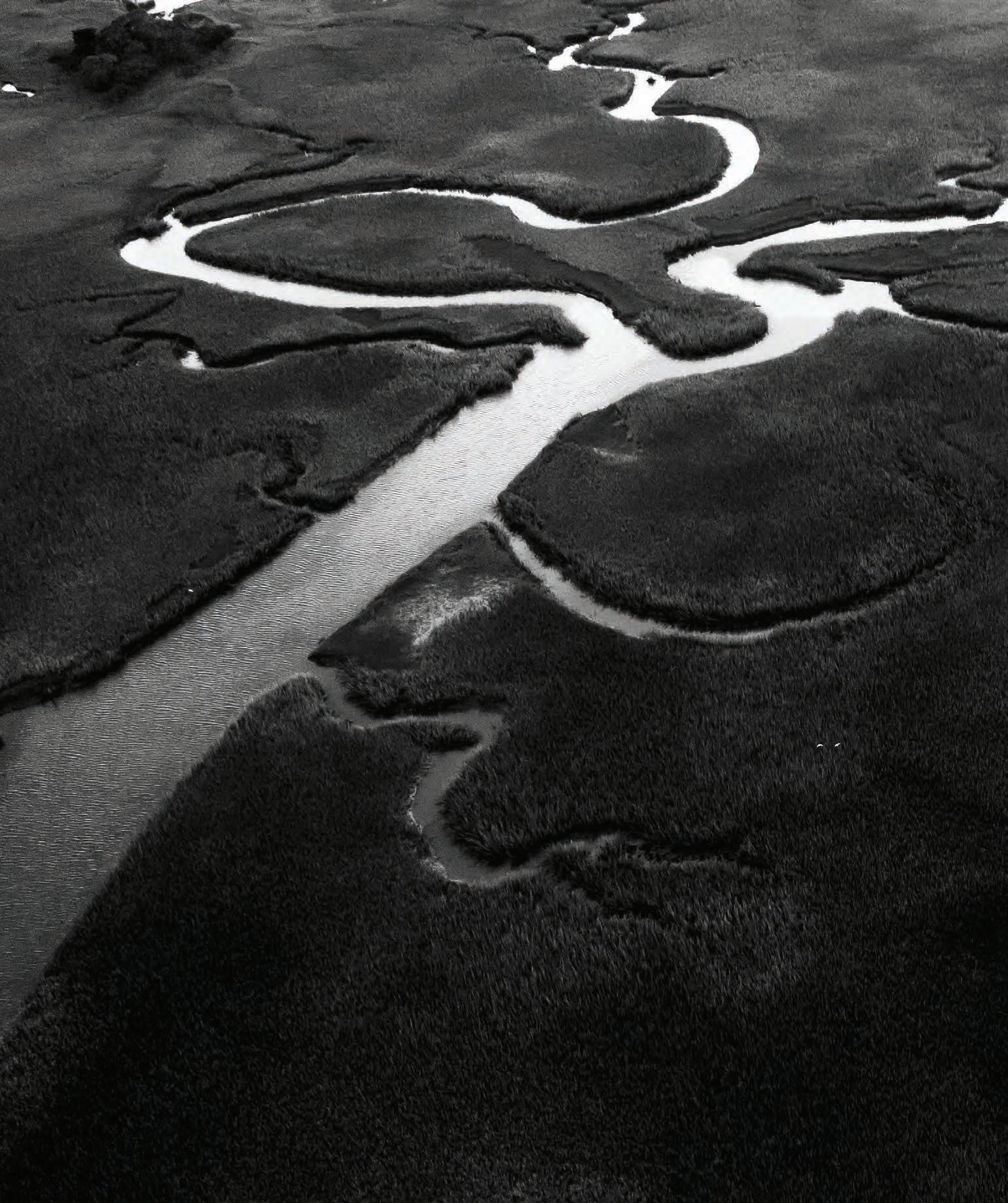

AS KIAWAH’S PILOT COMMUNITY KNOWS, THE LOWCOUNTRY’S ALLURE ISN’T ALWAYS SO “LOW.” HERE’S A LOOK FROM ON HIGH AT WHAT A FEW FREQUENT FLYERS LOVE ABOUT JOHNS ISLAND’S AIRWAVES.
 STORY by STEPHANIE HUNT
PHOTOGRAPHY BY JOEL CALDWELL
Photo by Gordon Keiter
STORY by STEPHANIE HUNT
PHOTOGRAPHY BY JOEL CALDWELL
Photo by Gordon Keiter
This twin-engine aircraft has a range of nearly thirteen hundred miles and can fly up to twenty thousand feet. Its gull-wing doors open to seven seats in total, so plenty of room for friends!

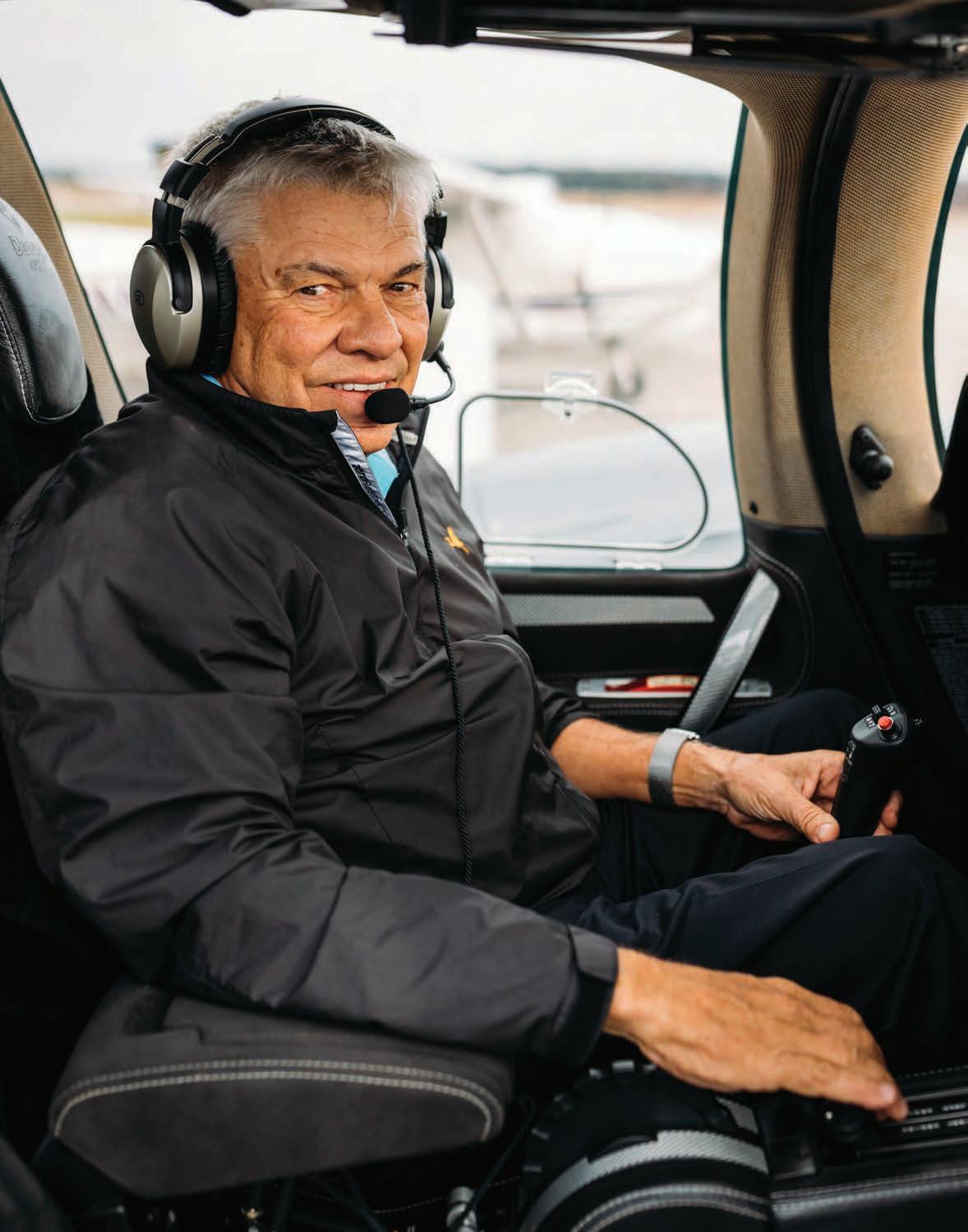
HER PEARLY GRAY FEATHERS HARDLY SEEM UP TO THE TASK, YET FROM HER PATIENT PERCH HUNCHED AT THE WATER’S EDGE, THE BLUE HERON UNCURLS HER S NECK, STRETCHES FORWARD, AND LURCHES UPWARD. LIFT OFF. HER WINGS AWKWARDLY BATTING THE AIR, SHE BARKS OUT A CALL RESEMBLING A RUSTY DOOR HINGE, AND THEN… AIRBORNE. GRACEFUL ONCE AGAIN—GRAVITY BE DAMNED.
We in the Lowcountry are witness to this wonder, this alar amazement, on a daily basis. Indeed Kiawah’s fine-feathered residents are part of the island’s appeal—the egrets and gulls, eagles and owls, the pelicans with their surprisingly efficient prehistoric flight plans. But in addition to these natural aviators, a growing flock of hobby pilots is sharing the Lowcountry’s air space, touching down and taking off at a steady and increasing pace at Charleston Executive Airport on Johns Island.
On a chilly late fall weekday, a day of dingy skies and thick, low clouds—i.e. not ideal for flying—fifteen or so small planes, a mix of single- and double-engine propeller planes and gleaming private jets, are on the tarmac, parked between the airport and its two runways. More are lined up near hangars on the periphery of the 1373-acre airport, just seven miles outside of Charleston and a snappy fifteenminute drive from Kiawah. It’s busy. The high-pitched whir of a Cessna pierces the otherwise hushed island ambiance. A family of four strolls from a plane into the lounge, where Becky at the front desk greets them cheerfully, as she does
all the passengers and pilots who travel through. There’s no TSA stress, no baggage claim, no lines to navigate and trudge through, just a friendly hello and bowl of complimentary mints on the counter. If you forget your toothbrush or comb, never fear—the bathroom is stocked with quality toiletries.
On average, some 10,000 flights go in and out of Charleston Executive Airport (JZI) each year. That’s up nearly 25 percent from 2021, according to Flightaware. This general aviation hub, owned and managed by the Charleston County Aviation Authority, which also oversees Charleston International Airport and the Mount Pleasant Regional Airport (LRO), is not the sleepy slice of runway amidst horse pastures and farmland that it once was. Indeed, since its 1943 founding as an auxiliary landing field for military planes, JZI has evolved and matured into a classy executive airport, serving the needs of corporate and resort travelers and making access to and from Kiawah and Seabrook a breezy, pleasant affair.
“Since the pandemic, we’ve definitely seen an uptick in private flights to and from the islands,” says Paul Aiken,



The CJ3 is an eight-passenger light jet capable of flying up to 2,348 statute miles within three hours at a speed of 478 miles per hour. The CJ3 is also great on short runways!
General Manager of Atlantic Aviation at JZI. The expansion of services like NetJets, with its fractional ownership model, has made the friendly skies even friendlier, and JZI tarmac more populated, for those who desire the convenience of private air travel without having to earn a pilot’s license or invest in a personal plane. Others however, like JZI regular Jack Skolds, are old school, hands-on aviation buffs.
A former Navy submarine officer before a career in business, Skolds traded depth for height and loves the aeronautic wizardry of his “super cool” Austrian-built twin-engine DA62. “That nozzle on the tail is the de-icing equipment, critical because when you get up around ten thousand feet, the temperature drops to the teens. And here’s the baggage compartment,” he explains, lifting a flap on the polished nose to reveal a spotless, compact area, clearly for the tidy and organized.
Skolds, seventy-two, learned to fly early in his retirement, initially in Charlotte, but let his certification lag. After moving to Kiawah, “I caught the bug again and got recertified,” and now has some nine hundred hours under his wing. “I fly about once a week, usually solo. Sometimes just down to St. Simons Island for barbecue,” he says. “I’m not one who gets a thrill from flying. For me it’s about the mental and physical

To help ensure a more seamless travel experience, Kiawah Island Club has partnered with private aviation company Wheels Up so that members can spend more time on Kiawah and less time worrying about travel logistics.
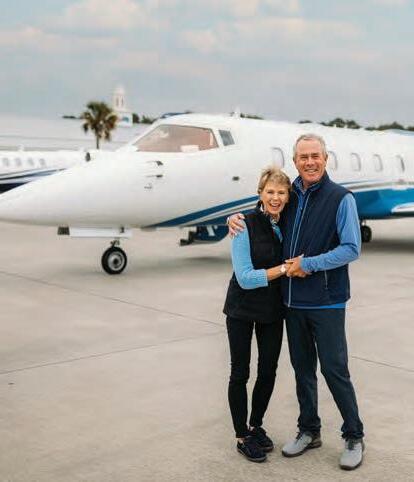

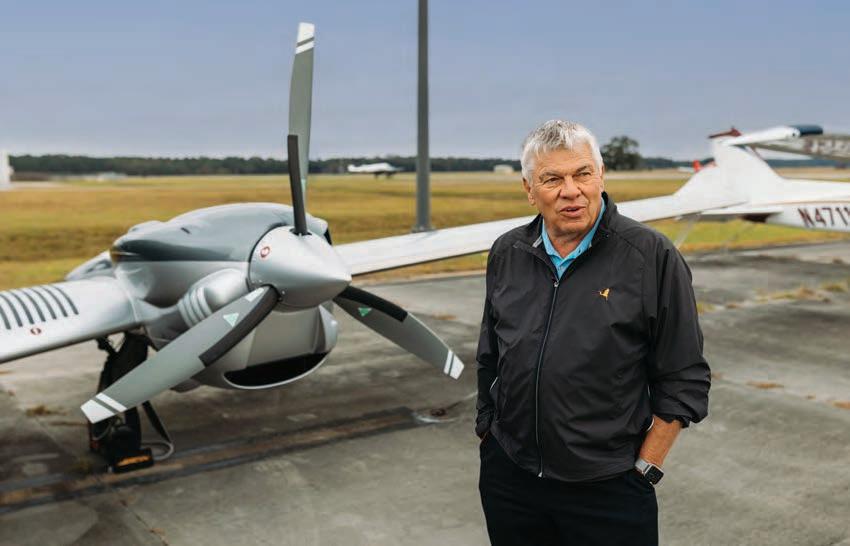
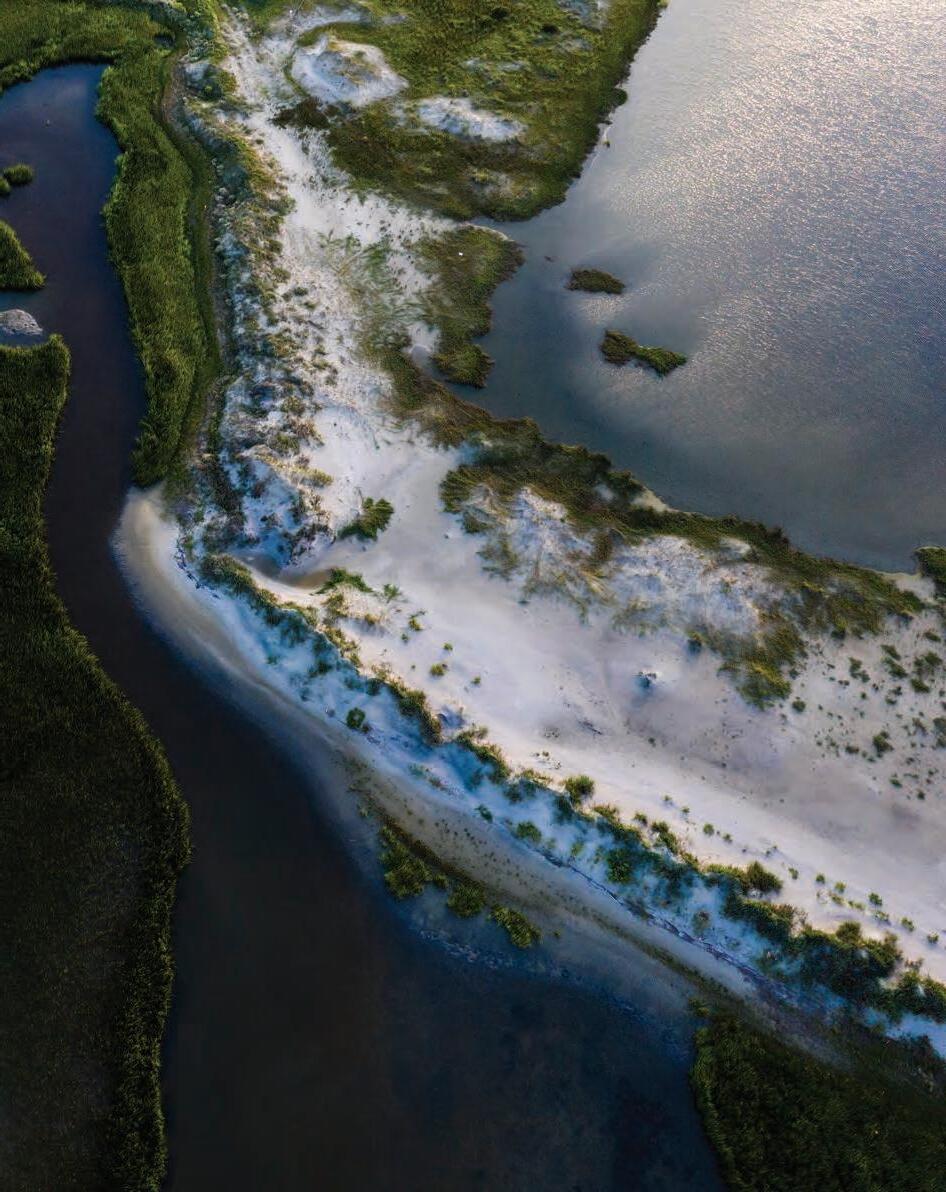 Clockwise: Jack Skolds, Joseph Murphy, and Pam and Frank Blatcher | Bottom Left: Photo by Gordon Keiter
Clockwise: Jack Skolds, Joseph Murphy, and Pam and Frank Blatcher | Bottom Left: Photo by Gordon Keiter
THE HIGH-PITCHED WHIR OF A CESSNA PIERCES THE OTHERWISE HUSHED ISLAND AMBIANCE. A FAMILY OF FOUR STROLLS FROM A PLANE INTO THE LOUNGE, WHERE BECKY AT THE FRONT DESK GREETS THEM CHEERFULLY, AS SHE DOES ALL THE PASSENGERS AND PILOTS WHO TRAVEL THROUGH.
challenge, the focus,” he says, pointing out the intricacies of his plane’s high-tech control panel, a Star Wars-esque array of lights, buttons, knobs, and blinking display screens. “Flying keeps me sharp, keeps me learning.” A beeline to his favorite hush puppies or easy foray to a Florida board meeting is simply the bonus.
For Kentucky resident and Kiawah homeowner Joseph Murphy flying for point-to-point transportation has morphed into a passion for planes, including his sleek ten-passenger turbo engine Cessna CJ3+, which he uses for business and for bringing his wife and three kids on the quick seventy-minute flight to and from Kiawah. “I can have breakfast in Kentucky, then be here on the golf course in no time,” says Murphy. “It’s so convenient. This little airport is excellent—the staff all know me by name.” Murphy earned his pilot’s license “for giggles” in the mid-1990s, and he has bought and sold some fourteen or fifteen planes since 2000, from a 1946 aluminum Globe Swift single-engine, which he mainly only taxied back and forth on the runway when his oldest son was three years old (“I could fly it, just wasn’t so sure I could land it”), on up the ranks. He graduated to the CJ3+ in 2018—“the only new plane I’ve ever bought,” thanks in part to country music star Dierks Bentley’s arm-twisting. “It’s the best plane out there,” the singer affirmed backstage at a concert.
In addition to the leather-trimmed turbo jet, Murphy’s latest fleet additions include two L-39s, a Czech-designed low wing turbofan plane revered as the finest jet trainer ever made. Think Top Gun. “I wanted something that looked like a fighter jet. It’s a confidence builder,” says Murphy, who is learning to fly formation with a retired Air Force fighter pilot, his frequent copilot on the CJ3. The war bird can pull 8 G’s. “Well, I can’t, but it can,” laughs Murphy, who takes the L-39s to air shows. “I was going to sell one, but I had so much fun at the Dayton Air Show I decided to keep both.”
Like Murphy, recent Kiawah transplants Frank Blatcher and his wife, Pam, have enjoyed ready airway access through having part-ownership in small planes since 1987. Initially Frank, who was taking flying lessons when he and Pam met in law school, was the sole family pilot, jetting (or propelling) Pam and their three young kids from their home in Philadelphia to vacations on the Outer Banks and elsewhere. “I’d always paid attention and was dimly aware of what Frank was doing, but I realized the planes were getting more sophisticated and if something happened and the kids were in the back, I wanted to know how to land,” says Pam. Assuring her that Air Traffic Control could talk her down should an emergency arise, Frank asked Pam to show him how she’d contact ATC, so she pushed a button. “You just turned off autopilot, your
best friend,” he told her, then tucked a certificate for flying lessons in her Christmas stocking that year.
“I enjoy flying, but I’ve always been more mission oriented,” says Frank. “If I was flying, I was going somewhere—taking Philadelphia buddies here to golf, or flying to New York for work, or taking the family on vacation. Pam, on the other hand, flies simply for the joy of it. She’ll just go out and chase sailboats.” Since moving full time to Kiawah after semi-retirement from their law careers, the two don’t currently own, lease, or share a plane, but they expect that will soon change, especially with the ease of having JZI at their backdoor. “I do miss flying, but I’m so happy living here that I haven’t worried about where I want to go,” says the destination-focused Frank. But Pam is itching to take wing again for her own personal, even spiritual reasons.
“I love the freedom of it,” she says. “Flying is just incredible, and the things you see are so beautiful. For me it’s all about nature and God, the creation aspect of it, the science of flight, and the freedom to go anywhere. Just file your flight plan, and you can go anywhere.” When they’re on Kiawah playing golf with friends and hear the roar of a plane overhead, Pam says, “Our friends laugh because the shot stops and we step aside and look up until the plane flies by. Flying is definitely in both of our hearts.” — S.H.
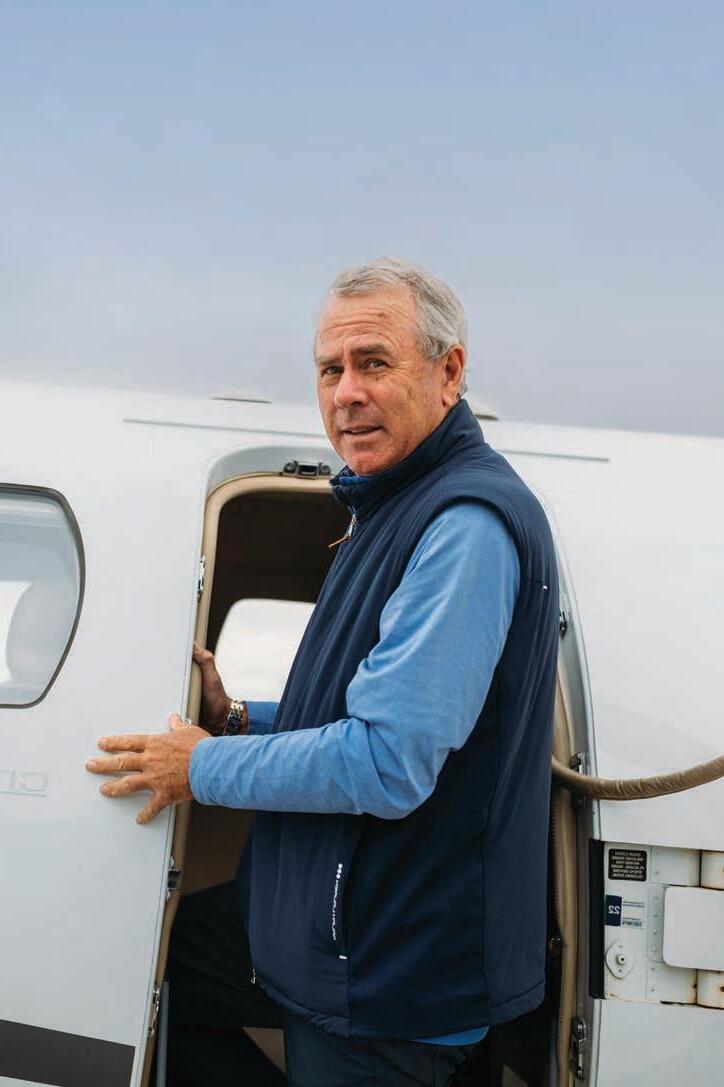




AM: I would love to hear about last night’s talk hosted by Dr. Tony Coles and his wife Robyn.
TG: The Aspen Institute and Advance Kiawah invited me to the Island for a panel, which turned out to be uncannily well constituted. The three of us on the panel had never worked together before, but we all come from the same intellectual tradition. It felt like a conversation among people who share a set of fundamental commitments but who bring a range of different perspectives. The entire event was fabulous. The weather was gorgeous, and the Coles’s house has a perfectly framed view of the ocean, so the conversation was set in front of a postcard view. The landscape at Kiawah is the kind of visual that you’d never tire of.

the Aspen Institute. The thing that united the group was a serious engagement with the possibility of thought to guide human life, and also a recognition of the ways in which human beings are complex. We all had textual tradition as a common touchpoint, which we’ve all been seriously engaged with as learners and as teachers. All of us have experience in classrooms, trying to bring out this tradition’s significance to somebody who hasn’t met it before.
AM: I found your lecture on YouTube that dealt with the secrets of five ancient Greek and Roman philosophers: Socrates, Plato, Aristotle, Cicero, and Epictetus. Was your Kiawah discussion along similar lines?
AM: Who were the other panelists?
TG: One was a lawyer named Brandon Paradise, who teaches law at Rutgers University, and one was a political theorist named Sam Kimbriel who oversees philosophy activities for
TG: The conversation was about the way in which ancient wisdom can help guide human happiness. I started with the fundamental Platonic insight that we’re pulled in different directions by the different facets of ourselves. Every religious tradition struggles with something like the distinction between head, heart, and appetite—with our tendency to be drawn one way by our commitments while being drawn in another way by our desire for pleasure. All temptations—food or sex or indulgence in the social world—all of those are genuine forms of pleasure; they just need to be moderated. During the second part of the conversation, we talked about three ways you can do that moderation: through the Aristotelian idea of habit; through the Ciceronian idea of friendship, community, and the value of a social frame; and through the Epictetan idea of sorting that which is up to you from that which is not. I framed it as “one problem, three solutions.”
AM: I’ve been wanting to change a few habits, and I’ve had a hard time taking the first step. I keep thinking of the
Nike slogan “Just do it,” which I realize is classic Aristotle.
TG: Aristotle basically says, “Just as you become a harpist by playing the harp, just as you become a piano player by playing the piano, so too do you become brave by acting brave, or acquire virtue by acting virtuous.” One of the interesting things about Aristotle is that the things he calls virtues are forms of moderation. So think about bravery: Aristotle says bravery has two opposites. One of its opposites is cowardice, but its other opposite is recklessness. Aristotle believed virtues are cultivated through habit, and these habits are habits of moderation. The way you move toward virtue is not by knowing exactly where the middle lies but just by knowing on which side of the virtue are you erring, and how you move slowly toward the middle. The second lesson of the lecture is that it’s unbelievably hard to do that without a network of social support.
AM: For example, if I want to get outdoors, it’s one thing to throw a kayak in the water by myself, but it’s much more motivational to sign up for a group outing. Being around like-minded people propels us to action.
TG: Exactly! Think about it this way. Why does a library exist as a study space? It’s not as if there isn’t quiet space everywhere all around you, but you want a space that cues for a certain kind of seriousness—so we build spaces like that. Why are there language classes when everyone could learn by themselves using Duolingo? Because we are helped by the social structure and human interaction that comes from joining together in a space. Religious communities gather in this way too. All of those examples rest on the recognition that humans are fundamentally social beings, and that we are affected by what is being done by those around us.
AM: My personal battle, which I guess is universal, is giving into short-term indulgences that are contrary to my longterm goals. Are there tricks to harnessing self-control?
TG: Absolutely. You can read Walter Mischel’s work on children and self-regulation. He’s the guy who did the famous “marshmallow test” [The Marshmallow Test: Mastering SelfControl, 2014]. The marshmallow test is a study of deferred gratification. You put one marshmallow before a child and say to them, “You can eat the marshmallow now, but if you can
wait five minutes you can also have a second marshmallow and eat that too.” The question is: What strategies can be used to overcome the temptation to indulge immediately? If you look at the marshmallow and smell it, it’s almost impossible to resist. The kids who succeed are the ones who have developed tools—they look around the room, they sing a song, they close their eyes. One of the best predictors of subsequent flourishing is the capacity for self-regulation. People who we think of as having willpower are people who structure their lives so they don’t have to use their willpower. That’s what deep self-regulation is. We think somebody who doesn’t bring tempting foods into their house lacks self-control. Absolutely not. Somebody who doesn’t bring tempting food into their house is using their capacity for long-term planning so they can save their emotional energy. If you leave the Oreos at the grocery store, you can save the energy you would have spent on self-control and use it instead on being the kind of person you want to be.
AM: You’ve coined the term alief. As I understand it, it’s a type of belief that isn’t objective, it’s more instinctual and associative and sometimes in conflict with our rational beliefs, so we can be pulled in two different directions at once, struggling to make sense of it.
TG: Exactly. Here’s an example to bring out the distinction. There is a glass skywalk above the Grand Canyon. You walk out on a glass surface and you look down. There are thousands of feet between you and the ground, and so you feel anxiety and tension and worry. But if I ask you, Do you believe you are safe when you are standing on the skywalk?—the answer is unambiguous. Obviously you believe you’re safe. Would you take your child out there with you? Yes. So there’s no doubt in your mind that the skywalk is sturdy. That’s 100% what you believe. But at the same time, there’s a set of automatic, associative, affective (emotional) responses that you have. And those are what I call your aliefs. When you’re standing on a glass skywalk, you be-lieve that you are safe, but you a-lieve that you’re in danger. No matter how much you try to talk yourself out of the alief, you can’t: it is controlled by a different system. The skywalk example is a fun case of where belief and alief come apart but there are also serious cases. One way to think about what is sometimes called “implicit
racism” or “aversive racism” is that it’s actually an alief. You might believe in racial equality, but your alief, your learned association, may be pulling you in a different direction. Some aliefs are innate and evolutionarily instilled, like the skywalk example. But a lot of our aliefs are learned. That means that it can be costly to surround yourself with injustice, because instinctively your body learns that’s the way the world is, and your aliefs come to coincide with that. And the only way to change alief is not through belief, it’s not through reason, it’s through habituation.

AM: I hear your husband is also a philosopher?
TG: My husband is a philosopher and a linguist. He is Hungarian who came to the United States in the first cohort of people from Eastern Europe who were allowed after the Cold War ended. Between 1945 and 1991, no one from behind the Iron Curtain was allowed to study on the MIT campus. The wall came down in 1989, and the Soviet Union collapsed in 1990, and in 1991 the first four people from Hungary came to MIT for graduate school, and my husband was one of them.
AM: Where were you? How did you meet?
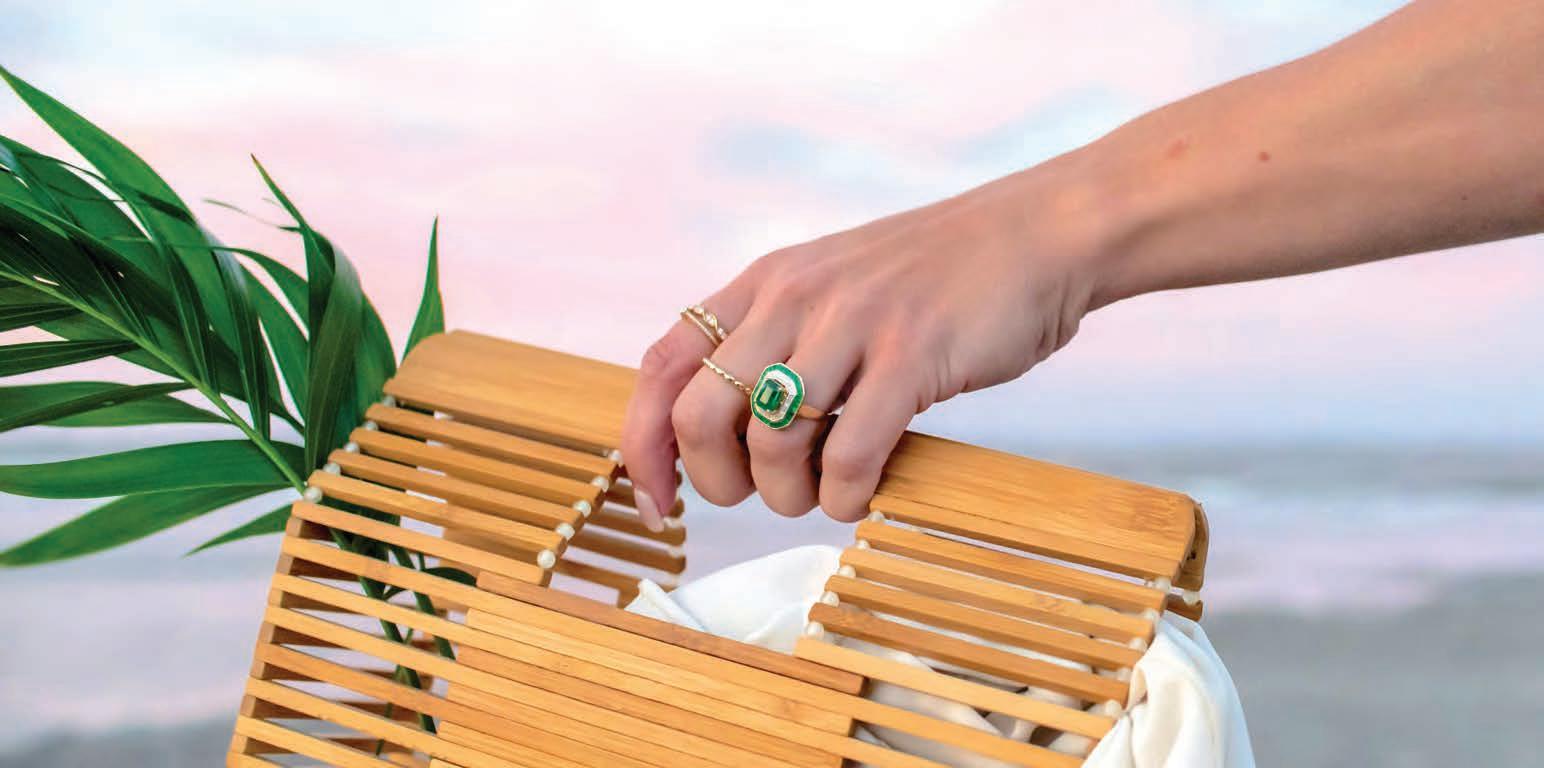
TG: I was at graduate school at Harvard, and I ran a HarvardMIT Graduate Philosophy Conference. In what became emblematic of our marriage, I organized a social event and my husband came and gave the best academic paper. So a large part of my life, I organize social events, and my husband comes and does really incredible things. But we have this real Hungarian connection. My son is actually marrying a lovely woman from Budapest, and she’s going to move to the U.S. in January after she finishes a degree.
Dr. Gendler’s visit is part of a larger partnership between Advance Kiawah and The Aspen Institute, a global nonprofit organization committed to realizing a free, just, and equitable society. Advance Kiawah will host insightful conversations here on Kiawah Island, where experts and leaders can connect with our residents to share ideas and discuss topics such as happiness, aging, wealth, health, climate, and more.
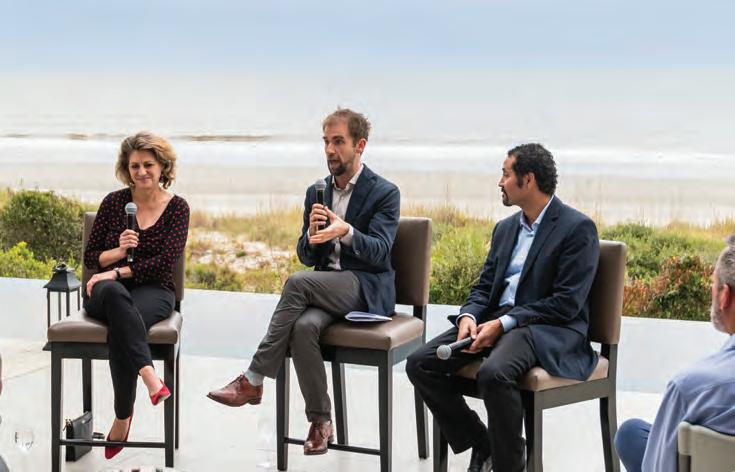
One of the best predictors of subsequent flourishing is the capacity for self-regulation. People that we think of as having willpower are people who structure their lives so that they don’t have to. That’s what deep self-regulation is.Photo by Patrick O’Brien



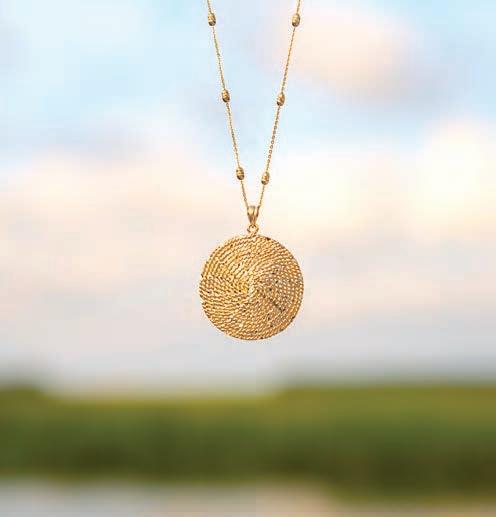

Charlie Way was a different person than most people may ever meet. This is my brief recall of the man who led the first American-owned development of Kiawah. I’d been a goferclerk in his law office, long-time friend, counsel for the Beach Company from 1970, and a founding partner of Kiawah Resort Associates (KRA). Charlie’s widow, Mary Ellen, my second cousin, is the daughter of my great-uncle, J.C. Long.
A can-do real estate lawyer for thirteen years, by 1975 Charlie became CEO of the Beach Company, begun in 1945 when J.C. acquired the Isle of Palms. After a sterling legal career, J.C. focused on varied S.C. real estate. Charlie forged a strong bond with his father-in-law, and the Beach Company thrived for forty-seven years, through Charlie’s death, September 6, 2022.

An impeccable dresser, it seemed Charlie enjoyed well-made clothes with refined style, as they reflected his approach—friendly, careful, serious about business. His family came first, every day. An unpretentious man, Charlie was upbeat, hugely enjoyed hunting on horseback, plowed through fiction and non-fiction, incessantly, loved and was loved by his many, far-flung friends, and worked and played very hard. Holidays and trips, everywhere, with Mary Ellen and five children were special treats. Above all, Charlie dearly loved his growing family.
Charlie was easy to read, easier to like. One left him feeling far better about what they came for. For one reason, he “got things done.” Enjoying team efforts with talented players, another. And in deals Charlie was ready if problems arose.
At sixteen, I met Charlie, then a tall 6’5”, amusing USC law student, over lunch with J.C. at my grandmother’s home. Sixty years later he was still slender, extroverted, energetic, disciplined, kind. Godfather of our daughter, Mason, thirtyseven, Charlie drove to deliver a nice gift every Christmas. He never missed.
He called me for lunch on July 10, 2022, before I was leaving for two months in Ireland. Charlie was not well, using a walker, bent forward. He knew, and he cared. We laughed a lot that afternoon, swapping stories he enjoyed reliving with his son-in-law, Will Howle, and others. I sensed it would be our last visit, leaving me saddened. Charlie had offered decades ago, without my asking, to finance our first real home on Sullivan’s Island. He and Mary Ellen even hosted my and Anne’s 1984 wedding and reception at Seaside Farms. Many deals, sixty-two years of friendship. Seeing that wide curtain ease down was disconcerting.
The Kiawah aspects of Charlie’s life began March 1, 1988. Charleston’s The Evening Post reported at noon that John Rivers had let expire his $100 MM Kiawah option from a Kuwaiti entity. Henry Kissinger once wrote that leaders must balance “knowns” from the past with inherently uncertain futures. Our knowns were that local friends Frank Brumley and Pat McKinney had led development/sales for four years for the Kuwaiti’s private-public entity after its 1974 Kiawah purchase. I called Frank, and he and Pat were eager to help. The Kuwaiti Investment Company’s CEO had been ordered to sell; funding from Kuwait, over; oil prices, plummeting; twelve of thirteen Kiawah Island Company VPs, dismissed; golf, Inn bookings, down. Kiawah’s future, in controversy. I went to Charlie’s office at 3 p.m. that day. His keen interest got things moving.
Might the Kuwaitis engage investment bankers, raise the price? During the first week of March, aware of timing’s essence, we hurried to digest pyramids of data, what-ifs, odd rumors. After meetings over several days, Charlie met with his extended family. Their decision was to seize this chance to acquire the Atlantic’s most glittering jewel. His team (myself with Frank, Pat, Hank Holliday, a mortgage broker, and Buddy Darby) was upbeat, anxious.
When things looked bleak, Charles Seignious Way, Jr., with the help of friends, led Kiawah to an exceptional future.
ESSAY BY LEONARD L. LONG, JR.
Negotiating a contract, finding funds, and leading were Charlie’s strong points. A possible loan surfaced from his calling NCNB (later, Bank of America) friends, Carlos Evans, Joel Smith, and then, “Hootie” Johnson. The revered Hugh McCall, NCNB’s incomparable chairman, was in. A verbal, nonbinding loan assurance was floated. Charlie kept quiet. The astute Linda (Fairchild) Woodside was NCNB’s details overseer.
My law school friend Bobby Hood kindly got us a March 7th meeting with Sal Alzouman of the Kuwaiti’s Kiawah Island Company. He wanted a two-page contract, and only Charlie could meet him at 9 p.m. the next night. Entering Sal’s office, Charlie said, “Mr. Alzouman, my name is Charlie Way. I’m here to buy your island,” handing him a $1MM cashier’s check. At 1 a.m. issues remained. Sal said, “Charlie, let’s stop and then start fresh tomorrow.’’
Unscripted, from deep left field, Charlie replied, “Sal, that’s impossible. This is my lucky night! I could never live with myself if I stopped now and we failed to reach a deal.” Given this curious rationale, yet, possibly, believing in mysticism from a youth living under the desert stars, Sal replied, “Charlie, if you have that serious a concern, let’s get there!”
An early morning contract was signed March 8, 1988. KRA had reasonable hope of a loan with a $105MM contract for golf courses by Fazio, Nicklaus, and Player; two tennis centers; a 150-room Inn; the Straw Market; almost four thousand acres of undeveloped, zoned highland; solid infrastructure. Sal happily accepted a five-pager. The brief legal description: “Kiawah Island, bounded on its S, N, E, and W sides by the mean low-water mark of the Ocean, the Kiawah River, Stono Inlet, and Captain Sam’s Inlet, less sales through March 8.’’ Our able real estate counsel, Tommy Buist, was...aghast!
Again, Charlie Way’s courtesy with fairness, which had loosened deadlocks from fraternity president to chairing private, public, and charitable entities over decades, had
worked. When dropping off invaluable paralegal Beth Nimmons, Charlie asked the driver to stop for beer and called his mother-in-law [“Ma Ma we’ve bought Kiawah!”]. S.C.’s then-largest sale closed June 29, 1988. NCNB made the loan. America’s flag shot up at the entry gate to cheers.
Known for being positive, Charlie chaired S.C. State University’s Board and assisted the higher education institution in Orangeburg, S.C., (where Charlie grew up) helping to pull it out of a financial ditch. Few might volunteer in their late 70s for frequent trips up I-26. But Charlie had safely chaired Spoleto’s Board through storms over nine testing years, headed S.C.’s Department of Commerce in Columbia, and led too many charities to count.
During these times—many with talented nephew, John Darby—Charlie led the Beach Company’s expansion to seven Southern states with thousands of apartments and many commercial buildings. A Morgan Stanley banker, once sizing Charlie up for possible KRA engagement, inquired what he’d prefer of the exotic choices in a Ben and Jerry’s ice cream shop then planned.

Charlie just replied with enthusiasm, “Oh, I just really, really like vanilla!” Charlie’s frank, honest answer won the banker’s approval.
Charlie’s prime impetus was insisting KRA aspire always for the pinnacle in stylish, low-density neighborhoods. He enjoyed helping assure lovely amenities near the seaside, while appreciating creative marketing to generate sales for all owners. Unsurprisingly, Kiawah became the East Coast’s “Big Elephant” in homesite values.
In future years, perhaps many will remember, still, how it was once here at Kiawah with Charlie Way— his deep voice, welcoming smile, steady hand, and how he made you feel.


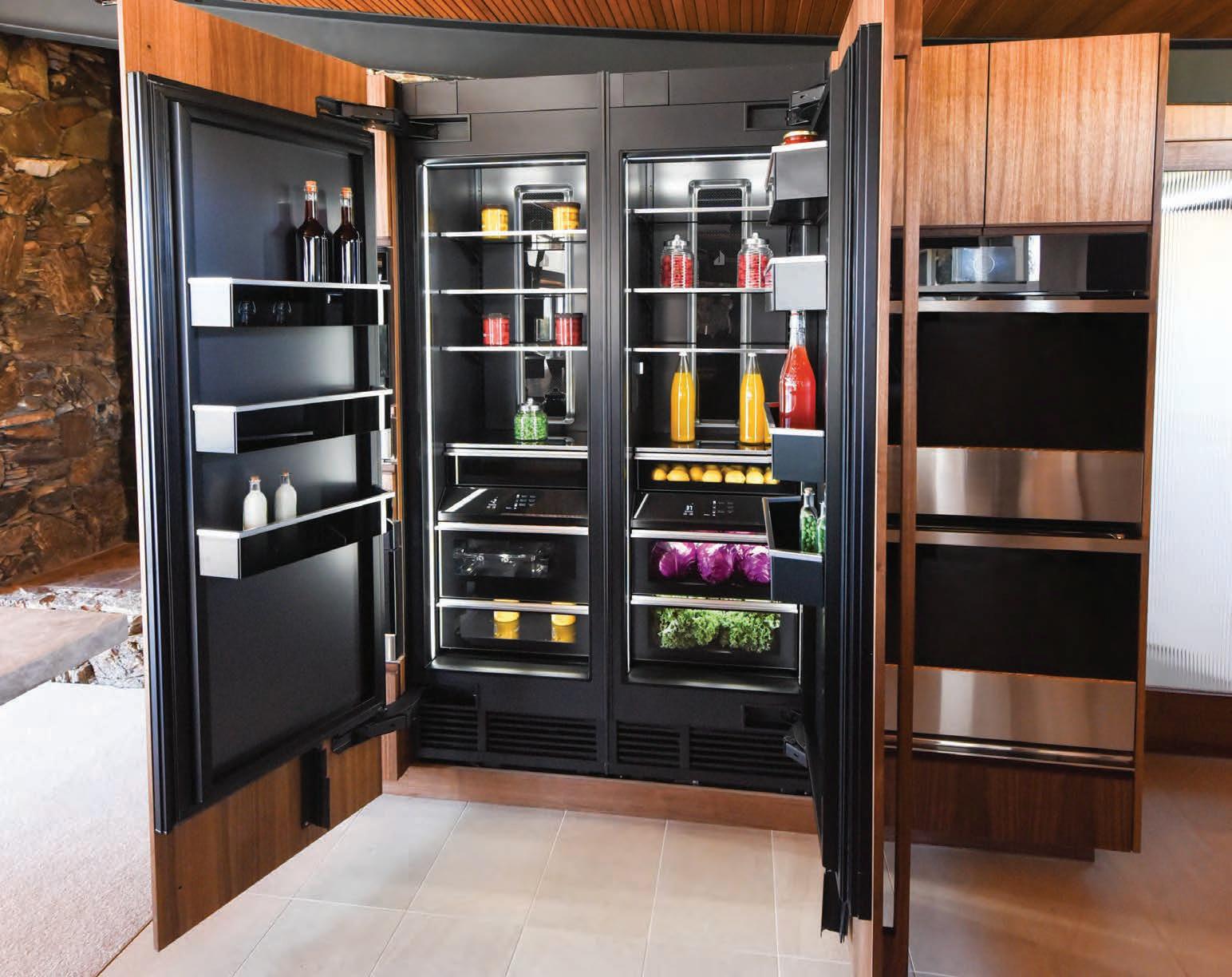


Investing in life’s greatest asset, time.

Find your home in one of our four lauded, luxury communities celebrating the dazzle in every day and the magic in every moment.

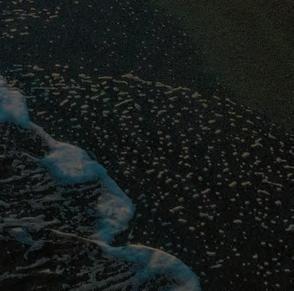
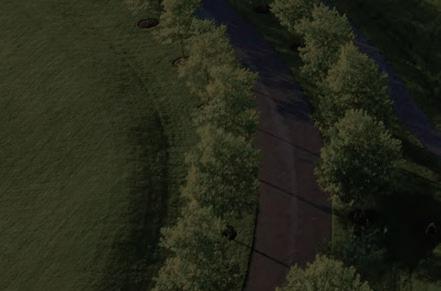

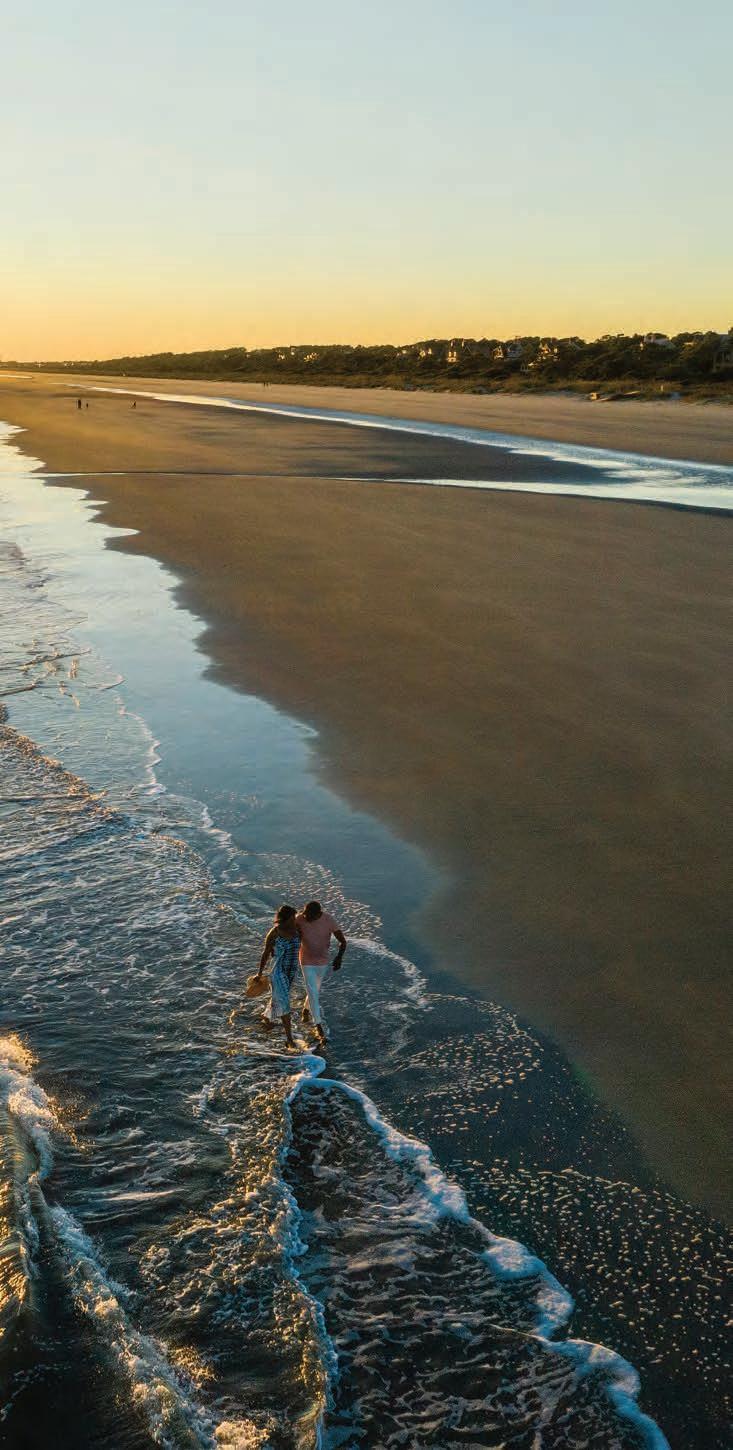
 Kiawah Island, South Carolina Carolina Mountains & Lake Keowee
Kiawah Island, South Carolina Carolina Mountains & Lake Keowee




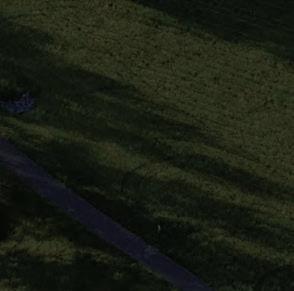

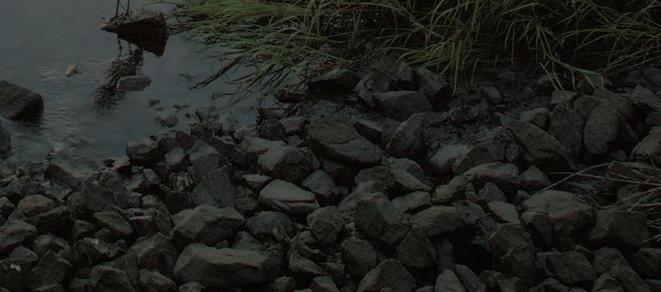

COMMUNITY. IT IS HARD TO DEFINE—AND EVEN HARDER TO CREATE. THERE IS AN ALCHEMY, A MYSTERIOUS MIXTURE OF AUTHENTICITY, SHARED VALUES, MUTUAL TRUST, SOCIAL CAPITAL, AND RECIPROCITY. THE KIAWAH ISLAND COMMUNITY HAS DRAMATICALLY MATURED OVER THE LAST THIRTY-FIVE YEARS, SHAPED BY CAREFUL PLANNING AND INTENTIONAL GROWTH. AT THE HEART OF THESE EFFORTS ARE WOMEN. WOMEN ARE KEY TO COMMUNITY CREATION AND THOUGH THIS IS AN IMPERFECT, INCOMPLETE LIST, THE WOMEN PROFILED HERE HAVE INFLUENCED THE KIAWAH ISLAND COMMUNITY IN UNIQUE AND PROFOUND WAYS.
STORY by HAILEY WIST PHOTOGRAPHY by SUSAN PITTARD ROBYN COLES |Robyn and her husband started coming to Kiawah Island in the early eighties and purchased a home in 2003. Kiawah is a kind of spiritual retreat for their family—a place to reconnect, gain perspective, and ask themselves how they want to show up in the world. As a philanthropist, political activist, and advocate, Robyn has dedicated her life to social justice and equality. In 2018 she created the Black Economic Alliance Foundation, a political action committee dedicated to economic justice and equality for Black Americans, and she is a board member of the NAACP Legal Defense Fund. Robyn is passionate about shifting narratives and recently won a Tony award for co-producing A Strange Loop on Broadway, the story of a black, queer man and his journey to self-love. She is also committed to progressing local and cultural institutions, formerly serving as board member of the Charleston International African American Museum and sponsoring the Spoleto Festival’s groundbreaking opera Omar in 2022. Coles was an early architect of Advance Kiawah, a multifaceted initiative to chart a more diverse and inclusive future for Kiawah Island. Most recently, she partnered with South Street Partners to bring the Aspen Institute to Kiawah, to initiate thoughtful discussion around creating a free, just, and equitable society. Her philanthropy has focused on correcting economic and social disparity, reshaping the channels of power and influence, and inspiring a more inclusive cultural canon.
I have had many opportunities to meet extraordinary people from all walks of life, and the common denominator is their ability to recognize the humanity of others and to create community. This is my north star when I think about how I want to continue my service and how I want to show up in the world.

Liz King came to Kiawah over thirty years ago as a seasonal staff naturalist at Kiawah Island Golf Resort. Though she had a masters degree in biology, Liz couldn’t believe there was a job that allowed her to lead canoe tours and nature walks through pristine habitat. In short, she fell in love. There wasn’t a year-round naturalist program at the time, so she spent the first winter repairing bikes. The second winter she cleaned pools. By the third winter, she had created a small nature center in the back of the bike shop with a hodgepodge of native creatures. The Resort saw how popular it was and asked Liz to establish a proper nature program in Night Heron Park. Liz’s purview continued to expand. When she became director of recreation in 2007, she took over all manner of outdoor activities for the Resort: kayaking, motorboat excursions, the nature center, Kamp Kiawah, bike rentals, swimming pools, surfing lessons…the list goes on. For Liz, it has always been about the outdoors. She’s good at her job because she loves getting people outside, loves connecting visitors to the island and its mysteries.
When you see the island through the eyes of a naturalist, you see that there is wildlife all around us. My goal here is for people to find peace in nature, to reconnect with their families and have a chance to breathe, when they come to vacation on the island.

When Elizabeth gifted her then-husband a series of shooting lessons in the late nineties, she had no intention of taking up the sport. The instructor convinced her to join and after one lesson, Elizabeth was hooked. After a wing shooting trip to Scotland, she decided to gather a group of women to shoot clay courses while their kids were in school. Elizabeth named the group the GRITS (Girls Really Into Shooting), which ultimately became an organization with over fourteen chapters in seven states. Today she is a National Sporting Clays Association (NSCA) Level III shooting instructor, no small feat in the shooting world. She is, simply put, a world-class instructor with over sixteen years of experience as a coach. Elizabeth came to Kiawah in 2019 to head up instruction for the Sporting Club program. She has an easy way with people and is quick to toss out a joke or lighten the mood. Most importantly, Elizabeth makes you fall in love with the sport and the great outdoors. She connects people to a sense of place through a meaningful, different, and fun way of interacting with the natural environment.
As an instructor, I ask my students questions not to see what they know, but to understand what they are seeing and how they are processing the coaching. I like to figure out each person and come up with creative ways to coach. It’s fun because their learning curve is so important for me.

Stephanie has served the public for twenty-three years, working in government across South Carolina, including Hilton Head, Spartanburg, and Woodruff, as well as with Upstate Forever, a nonprofit conservation organization. Stephanie is built for civic service, utilizing her analytical personality and attention to detail. Stephanie and her team carry out policies created by the Town Council that protect and enhance the Island’s community and natural environment. Stephanie must coalesce the community stakeholders’ demands and expectations while balancing them against the community’s long-term needs. Entrenched in her community, she serves on the boards of the Charleston County Parks Foundation, Barrier Islands Free Medical Clinic, the American Planning Association of South Carolina, and on Charleston’s Design Review Board. Additionally, she serves on the Executive Committee of the Urban Land Institute. Stephanie is passionate about community planning and creating authentic partnerships.
I like being the boots on the ground. I like having direct contact, not only with elected officials but also with the community in which I serve. So I think having that love and passion for public service is what got me to where I am today.
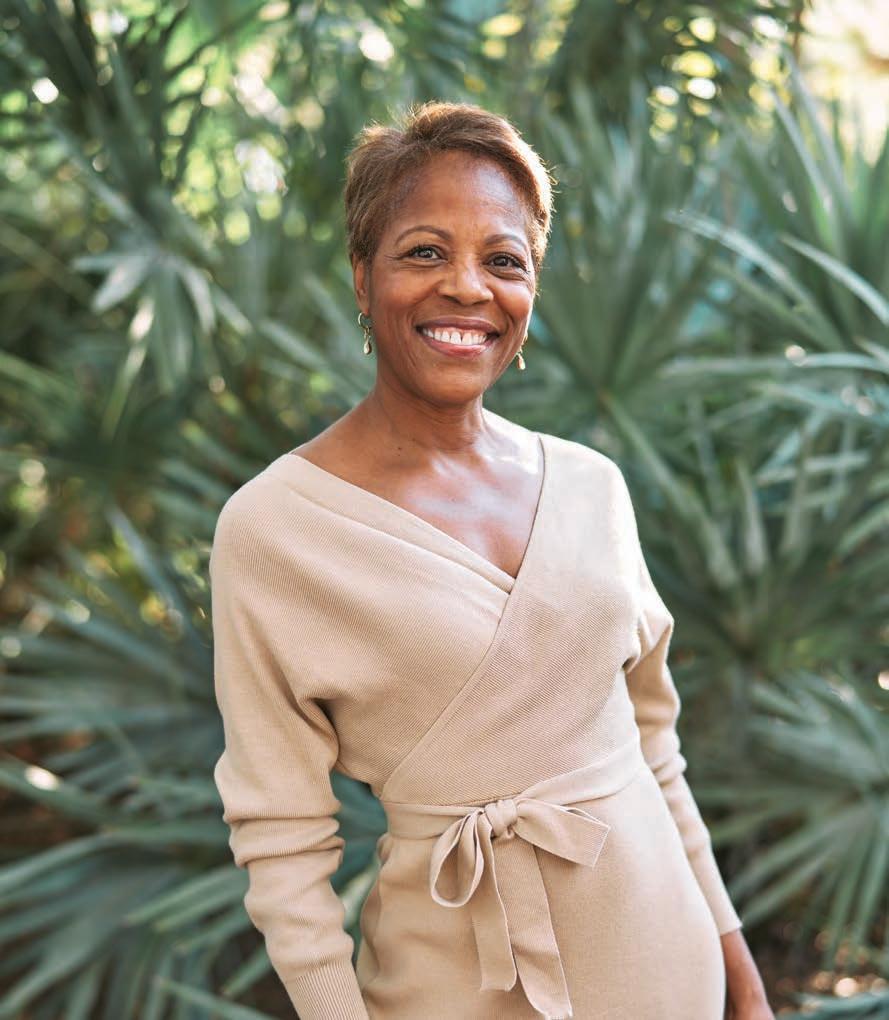
Dixie started her career on Kiawah as a benefits manager in 2003 and was promoted to human resources director two years later. After a short stint away from the company, from 2017 to 2019, Dixie took her current position as vice president. Returning to work for a company that cares about employees was an easy decision for her. It is exceedingly rare to see so little turnover in such a large company, especially in hospitality. Dixie gives credit to her team and Kiawah’s incredible employees. Over the nearly two decades of her involvement, Dixie has created sound and mutually beneficial programs for health insurance, compensation management, retirement, training and development, inclusion, and beyond. In short, she elevates the experience of working on the Island and contributes greatly to the culture of the entire community.
I’ve always loved people. That’s the reason I got into human resources. It’s my job to make our employment experience the very best it can be for all employees. South Street Partners supports us, creates long-term opportunities for us and our families, and allows us to make a difference in the community.

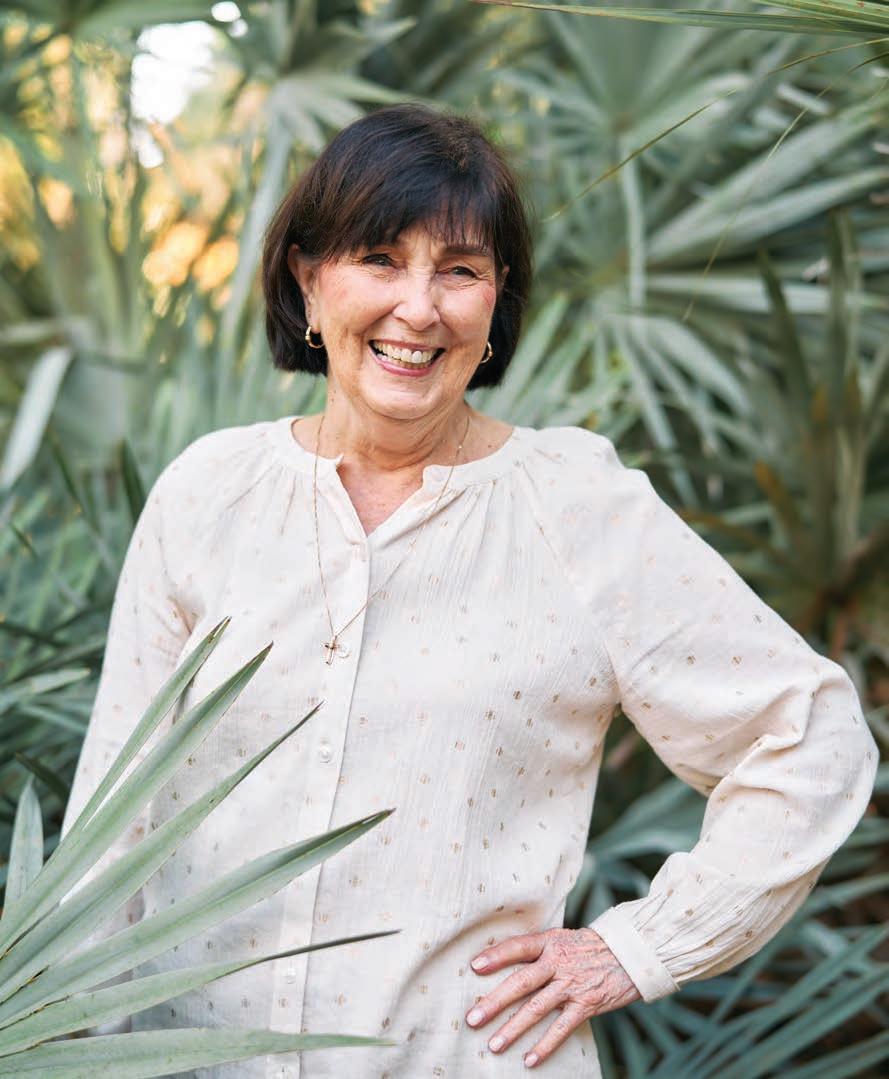
Becky Dennis began working for the Kiawah Island Utility, then owned by the Kuwaiti Investment Company, in 1978. She started as a clerk, installing and maintaining meters. She worked her way up in the company to general manager and eventually director of operations in 2016. As Kiawah has grown, so too has the need for consistent utilities. Becky has overseen the development of a secondary water source, a second utility facility, two aquifer storage and recovery systems, and the upgrade of all water meters to automated technology. This expansion of utilities has allowed for the population growth and has dramatically minimized potential service interruptions. Becky is a people person with a can-do, solution-oriented outlook. She is most proud of her team, many of whom have stayed with the company for twenty to forty years. This longevity is a testament to her leadership and the kind of integrity she brings to the company.
I love interacting with our customers and making a difference in how they see utility operations. It’s all about personal attention. There’s always a solution! Every obstacle is an opportunity.
A native of Poland, Dorota moved to the United States in 1998 to get her MBA at the University of New Haven. She vacationed at Kiawah with friends and fell in love. In 2007 she got a job with Kiawah Partners. Eight years later, she moved to her current position with the Town of Kiawah. Dorota is meticulous and exacting. She finds a kind of creativity in accounting and how budgets come together. Since her start in 2015, there has not been a single deficiency come audit season. Dorota keeps the operation running smoothly, maintaining the financial integrity of the Town and its community. Dorota and the team at the Town operate like a family. There is a strong feeling of mutual appreciation and trust, and Dorota is a meaningful part of that capital.
I like the people I work with and the people we serve. Our council deals with many different stakeholders. Everyone is educated and sophisticated, and we can have a good discussion, but also we are on island time, so there are happy people.
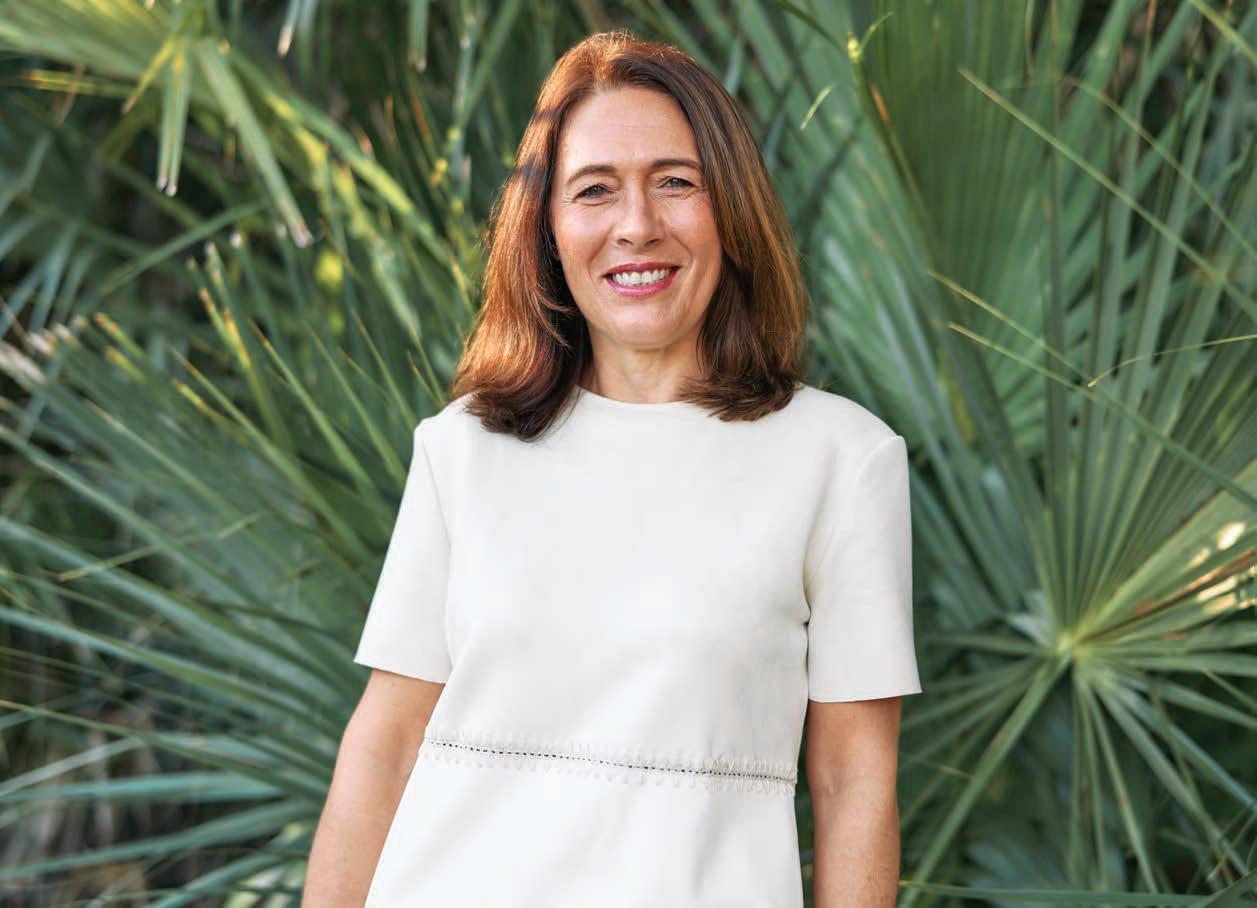

In 1997 Shannon took a job in member services with the Kiawah Island Community Association (KICA), and she never looked back. She has held numerous positions during her twenty-five years of service and knows the Island inside and out—from security to stormwater—and currently employs over one hundred people. The community association is responsible for Island security and access control, the Sandcastle, member boating facilities, twenty miles of leisure trails, sixty miles of roadways, twenty-six boardwalks, and one hundred and twenty-two ponds. As a key steward of the Kiawah brand and vision, KICA places those values at the center of its work, from common property maintenance to covenant compliance. Shannon is, and always has been, dedicated to service. It is why she found her way to the community association. She has built a cohesive and supported team, one that comes together like family when there is work to be done on behalf of the members they serve.
I have watched this team come together over and over again. I take great pride in what we’ve built and what we can achieve together.
Amanda Mole has worn many hats. Before her role as chief of architecture she was director of architecture, and prior to that she managed the Architectural Review Board (ARB). Amanda has been a key player in shaping Kiawah’s built world, and that meaningful contribution to such a vast undertaking has been a highlight of her career. Amanda and the team at Kiawah Partners have shown the world what thoughtful development can look like. The ARB is responsible for guiding architecture on the Island and maintaining the hallmark principle of designing with nature. As chief of architecture, Amanda guides the architectural identity of Kiawah through project design and development oversight. Throughout her tenure, Amanda has acted as a kind of compass, implementing the original master plan with integrity. She is thoughtful, balanced, a good listener, and a strong collaborator.
Whenever I drive through the island, I am glad to have participated in keeping it the way it is. But there are so many other women who have been involved. Without their support, I could never do what I do.
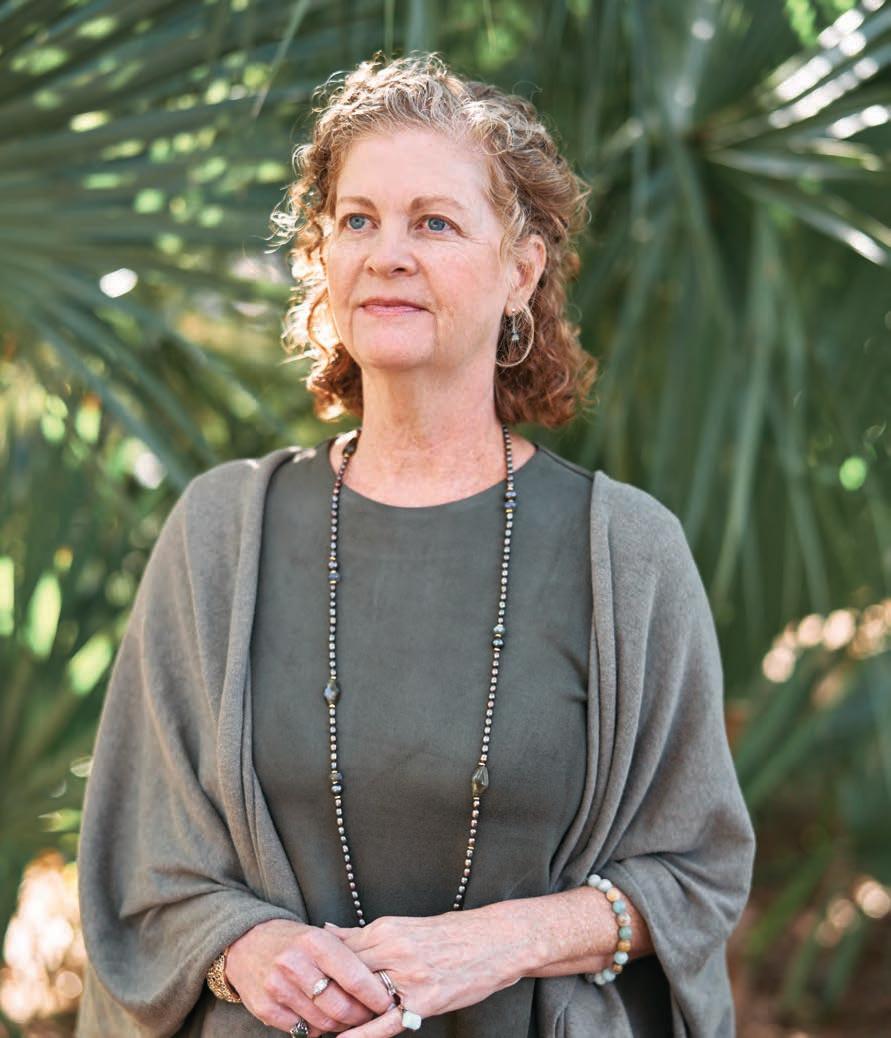

Stephanie started working for Kiawah Partners in 1992 as a corporate controller. She was drawn to real estate, intrigued by the long-range financial planning and extensive budgeting involved in development and operations. In the last thirty years, Stephanie has helped guide the development of Kiawah through its dramatic rise to the world stage. By forecasting the financial growth of the community, Stephanie has helped ensure the Island has developed responsibly, sustainably. This long-range planning has been crucial to the stability of the development and the overall health of the community. Stephanie is steady and reliable, guiding her departments with conservative creativity. Stephanie was also a resident of Kiawah for many years and has a deep and abiding connection to its people and natural environment.
I’m always so amazed at what our design departments produce. We’ve had so many talented architects who have done such an amazing job of integrating design with Kiawah’s natural settings. It’s been so rewarding to be involved on those projects and to work with such talented people.
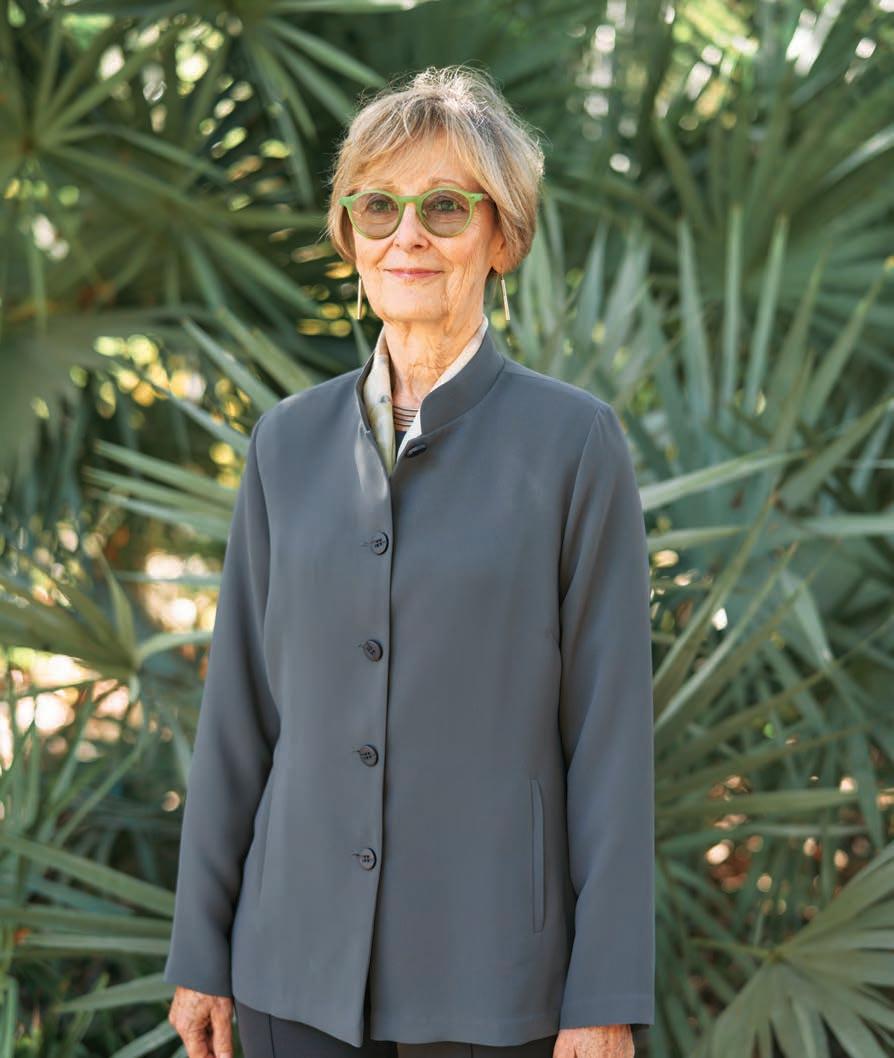
Diana remembers first visiting Kiawah in the seventies, riding through the dense maritime forest on old logging roads to a wide, pristine beach. She was part of the early team of consultants and strategists that put together the original master plan for the Island. In the forty years that followed, Diana’s real estate consulting firm, Permar Inc., has remained an integral part of Kiawah’s evolution, shepherding the community through a continuum of development and aligning growth to the integrity of that original master plan. A resident of Kiawah since 1979, Diana has an authentic and deeply personal understanding of the Kiawah community. By providing the development partners with a comprehensive picture of the market and its players, Diana has helped grow the Island with clear and well-informed intention and craft conditions that make people’s lives better.
Community development is extraordinarily complex and sometimes messy–sort of like families–but it is deeply satisfying, meaningful work. It has been a privilege to work with each of the ownership groups and their teams of highly talented people.

Lucinda started as a graphic designer for Kiawah Partners in 1996. During her tenure, she has held numerous key positions, including graphic designer, art director, senior art director, creative director for Kiawah Partners, and finally creative director for South Street Partners. For the past twenty-six years, Lucinda has shaped the visual identity of Kiawah. In her design, the core values of the the community are always present, the natural environment and sense of place paramount. As a leader of the various South Street creative teams, she encourages designers to think outside of the box and take risks. Lucinda is a problem solver, an innovator, a holistic thinker. Subtle subtext and visual cues that communicate culture and sense of place are ever present in her work. Through her ability to market these nuances, Lucinda has directly influenced the kind of people who have come to call Kiawah Island home.
It’s a great feeling to see all aspects of the design process—strategy, concept, copy, photography, and design— come together to create impactful solutions for colleagues and prospects alike. I love working with this group and learning new ways of looking at and improving our marketing outputs.

When Donna Windham came to Kiawah in 1999, the Conservancy was in its infancy. She planned to get it on its feet and move on. Twenty-four years later, she is more passionate about conserving Kiawah and the surrounding sea islands than ever. She has fallen in love with conservation, with the Kiawah community. Running a board of over twenty people, Donna has learned how to be an excellent listener, to build consensus and find common ground. She has navigated the tricky waters of Kiawah’s development mandate, its passionate stakeholders, and conservation objectives. And the Conservancy team is potent. In the span of twenty years, they have protected key swaths of habitat, initiated important wildlife and habitat research, and created a myriad of educational opportunities for Kiawah and the surrounding communities. They are a member of the Land Trust Alliance and have put over 2,300 acres under preservation. Donna has worked tirelessly to maintain this pristine sea island.
I have learned how to be a good friend, how to listen, how to work with differences of opinion. To run a strong organization, you need to hear all differing opinions.

SINCE CLIMBING TO FOURTH PLACE AT THE 2021 PGA CHAMPIONSHIP AT THE OCEAN COURSE, PROFESSIONAL GOLFER HARRY HIGGS HAS HAD A WILD COUPLE YEARS. SWINGING BACK AND FORTH BETWEEN NICE GUY AND FIERCE COMPETITOR, HARRY PLAYS WITH HEART.
 STORY BY HAILEY WIST
PHOTOGRAPHY BY GATELY WILLIAMS
STORY BY HAILEY WIST
PHOTOGRAPHY BY GATELY WILLIAMS
So where are you actually from? There’s a lot of conflicting information out there.
I was born in Camden, New Jersey, but we didn’t live there. We lived just outside Philadelphia, then Ohio briefly, and back to Philadelphia for a bit. I spent the majority of my young life in Overland Park, Kansas, just outside Kansas City. I went to school and currently live in Dallas. It’s whichever you please.
Tell me about your first big break.
I was in my senior year of high school. The club that I grew up playing with was hosting the Korn Ferry Tour’s KC Golf Classic. This would never happen nowadays, but they had a junior qualifier for the event, and I wound up winning it. I showed up at school on a Monday, and I remember going to biology class. I stayed for five minutes and then got up and left and went to the golf course. I can’t remember if I was brazen enough to just leave. Maybe I said I wasn’t feeling well. I missed that entire week of school.
Let’s go back to the beginning. How did you start golfing?
Dad started playing when we lived in Columbus, Ohio. He tells the story that he would set up Wiffle balls in the front yard, and my brother and I would practice swinging. When we moved back to the Philadelphia area, a golf buddy of my dad’s saw how obsessed we were and implored my dad, Your boys are drawing golf holes everywhere, and they’re air swinging. Just put golf clubs in their hands. So my dad bought a red set for me and a blue set for my little brother. And that was really that.
We moved to Kansas City four years later and lived on a golf course. I was in fourth grade. I would finish school, get on my bike with my clubs on my back, and ride down to the club. There was a group of kids that would meet there. They’re still great friends of mine to this day.
You’re reminding me of the scenes in Caddy Shack where a bunch of kids hang around the golf course, and they’re all dating each other. It sounds so fun.
My girlfriend now was actually part of that group. Her brother and I became good friends, and then she started playing. So we met there.
How do you think that experience shaped your career?
I was super lucky that I had peers who were golfing. But also twelve-year-old Harry would play with anybody. A lot of people say I can sit in a room and converse with anybody, that I can get along with people from all walks of life. You could trace that back to me golfing with doctors and lawyers and men with kids my age when I was twelve. I joke now that if I play with somebody that doesn’t like to talk, I’m gonna get it out of him. We’re gonna talk all day. Or at least I’m going to.
When did you realize the potential for a golf career?
I was a lot bigger than kids my age. I don’t know where the skills came from, but I had a lot of skill. And when I got into competitive golf, I had immediate success. Partly because at that young age, you play shorter golf courses. I was probably three inches taller than all the other players and could hit the

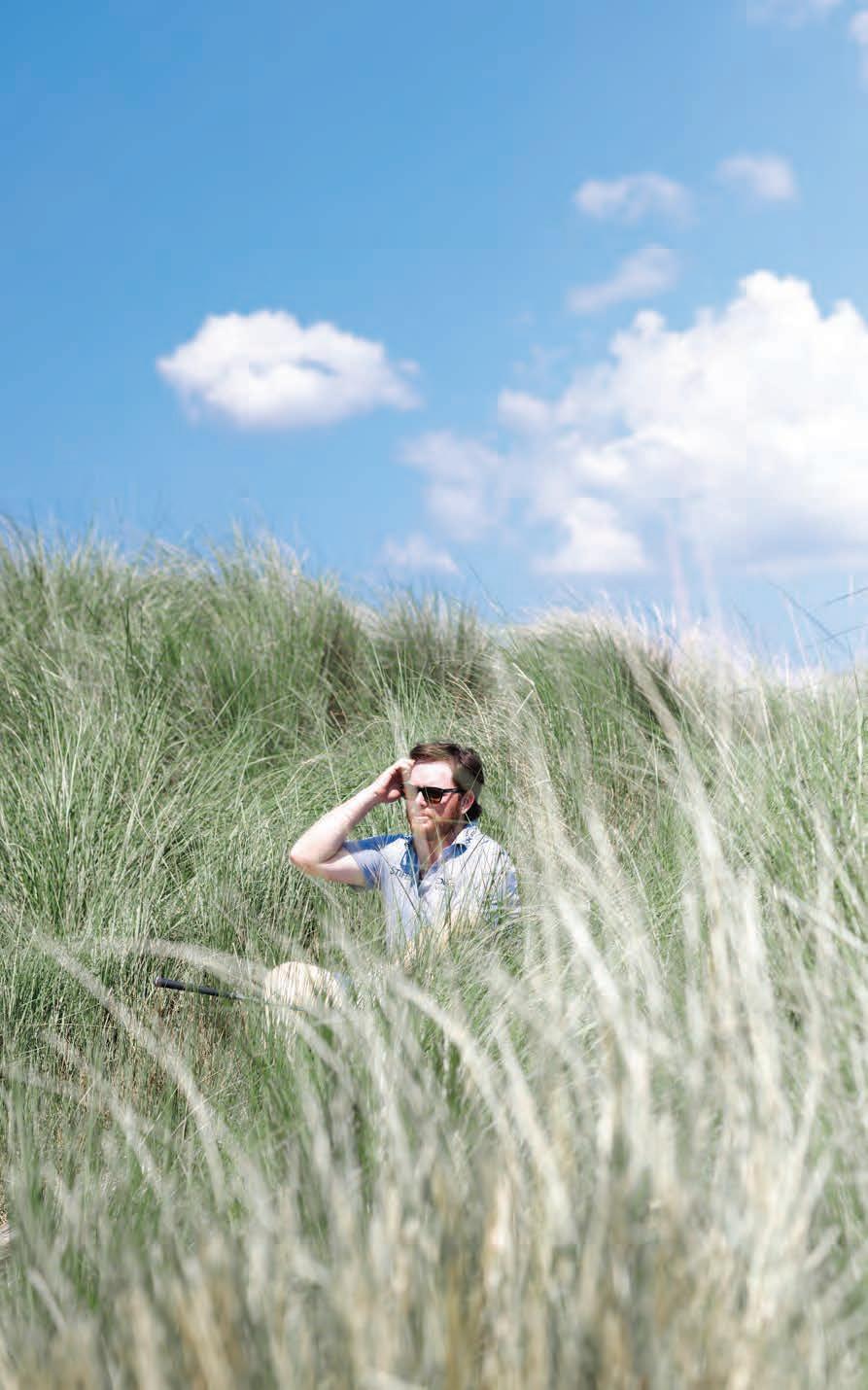
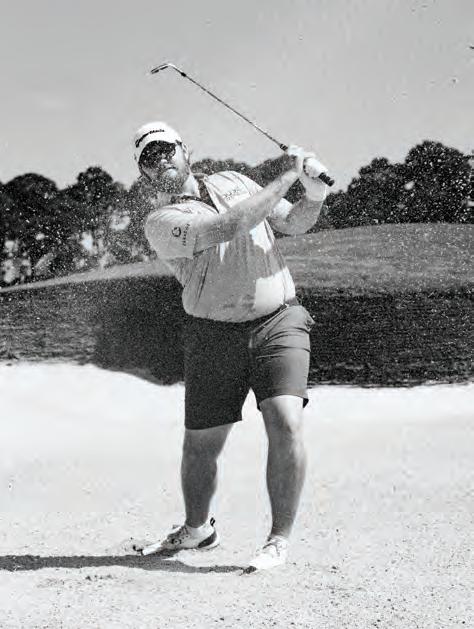
JERK WHO THINKS HE CAN BEAT EVERYONE.
ball a long way. At first I was winning everything I played in. So I think it was straight-up delusional confidence, and I held onto that throughout my entire golf career. I continued to have success in high school. And then I got to college, and those guys were really good. But for me, it wasn’t a bad thing that I wasn’t as good as them. It was like, Okay, well I just need to get better.
I went to Southern Methodist University. When I showed up freshman year, I thought I was the best. There were ten rounds in two weeks to qualify for the first tournament. Going into the last round, I was seven or eight shots ahead of everybody, and I was such a jerk about how good I thought I was. Kelly Kraft, who’s now a great friend of mine, was a senior at the time, and he shot eight or nine under and beat me. That was one of the first times I thought, Okay, maybe he has an ability that I don’t yet have. Honestly, after that I struggled my entire freshman year. Which Harry do I want to be? Do I want to be the Harry who is friendly with his teammates? Or do I want to be a [competitive] jerk who thinks he can beat everyone. I wound up being fun, sweet Harry a lot more. I just wanted to be friends with everybody.
Yeah. Now I try to have a little bit of both. I want to be very good at what I do, but also I want to be liked. There’s a constant balance. But it goes back to that freshman year. I remember making a decision that I’d rather just have fun with my teammates. My golf game struggled because I didn’t want to get into those guys’ faces.
I’ve had plenty of moments in my professional career when I struggled because I felt small, like I was just happy to be there and share the stage with everybody. But on the flip side, I’ve had success in big events when I didn’t care about any of that, when I concentrated on beating everyone. You need confidence in this game. Delusional confidence. My senior year, I was the only senior on the team. There wasn’t even a junior. So you can imagine, it was easier for me to be the jerk, and I started playing some really good golf.
Where did you go after college?
I started the PGA Tour Latinoamérica as soon as I left college. I traveled to Mexico and Central and South America with a bunch of guys. Everyone was fresh out of college. You can imagine—it was a free-for-all—a giant fraternity. I just wanted to be liked by those guys; I just wanted to have fun. And so I struggled for two, almost three years.
But when I returned to the tour in 2018, I felt like, Okay, I’ve done this. I don’t want to do it again. I got serious. I felt like I could beat anyone. I finished third in the second event and second in the fourth event. I kept having good weeks, and then I wound up winning the entire money list in the fall. I was able to roll that into my Korn Ferry tour year.
You were on a roll.
Yeah, a major roll. That carried into the PGA. After Korn Ferry I had about a week off, and then I started playing PGA Tour events. If I had started on the PGA Tour at twenty-three years old, it would have been different. I don’t think I would’ve started like I did. But I got there at twenty-seven and felt like, I don’t care who any of you are. I’m just gonna beat you guys.
YOU TRAIN YOUR ENTIRE LIFE TO BE IN A POSITION TO WIN A GOLF TOURNAMENT. AND WHEN YOU HAVE THESE [WINNING] MOMENTS, YOU FEEL GREAT, RIGHT? YOU GET TO CELEBRATE, YOU MAKE MONEY. BUT IF YOU HIT A POOR SHOT, YOU’RE GOING TO BE MISERABLE.
I don’t mind them. I’ve done this for a long time now, and I know what’s coming. You train your entire life to be in a position to win a golf tournament. And when you have these [winning] moments, you feel great, right? You get to celebrate, you make money. But if you hit a poor shot, you’re going to be miserable. You’re going to think about it for the rest of your life. It’s a razor’s edge. I think we’re all just crazy enough to want to be in those positions.
Tell me about your experience playing in the PGA Championship at Kiawah Island Golf Resort.
It was my first major. I had no idea what it was going to be like. I remember teeing off on ten Thursday morning and feeling super nervous. I hit a poor tee shot and then got a good break for a shot towards the green. I hit it on the green. Then an easy two putt for par, and I took a deep breath. Then I hit another poor drive on eleven, which was my second hole of the day. I made the dumbest decision to try to lay it up more aggressively rather than leave it short where it would have been a very easy up and down for birdie. Then I hit it way left into the dunes. I wound up finding my ball and made an unbelievable par from there. But I turned to my brother and said, We are not doing that again. Let’s clean it up.
Basically, I decided to hit the most boring basic golf shot on every hole from there on out. For the next four days, we just did that. And it just kept adding up and adding up. I played it nice and tight and by the book. The Ocean Course
is insanely difficult. It’s windy and hard to get the ball onto the fairway, and it’s hard to get the ball on the greens. So I decided to do the boring things and do them really well. If you do that for four days and then sprinkle in a few birdies, that’ll do it. Because no one was going to win that golf tournament at fifteen under because the course was so hard. I finished fourth.
Tell me about your relationship with your brother and how he became your caddy. You guys are obviously close.
Too close. (laughs) He’s three years younger than I am. He went to SMU and played golf as well. So when I was a senior, he was a freshman. He played professionally for two and a half years. In 2020 I thought it would be good to make a caddy change and felt like it would be best if I had my brother with me. We’ve obviously played a ton of golf together, and he’s a world-class caddy. You’d be astounded by the stuff he knows. We do get caught up in the older brother-younger brother dynamic. It’s very easy for me to complain about something that he’s done when he probably didn’t do anything wrong. I want his input, but I’m not always cool with it.
How did this partnership with Kiawah come about?
It was very organic. My manager told me that the South Street guys wanted to meet me the Wednesday of the Championship. And obviously, Kiawah will always hold a very special place in my heart. That was a lovely week for me and my family. My parents, my brother, and my girlfriend were here. We rented a house six minutes from the clubhouse. It was a great week amplified by good play. I don’t think I’ll ever forget it.

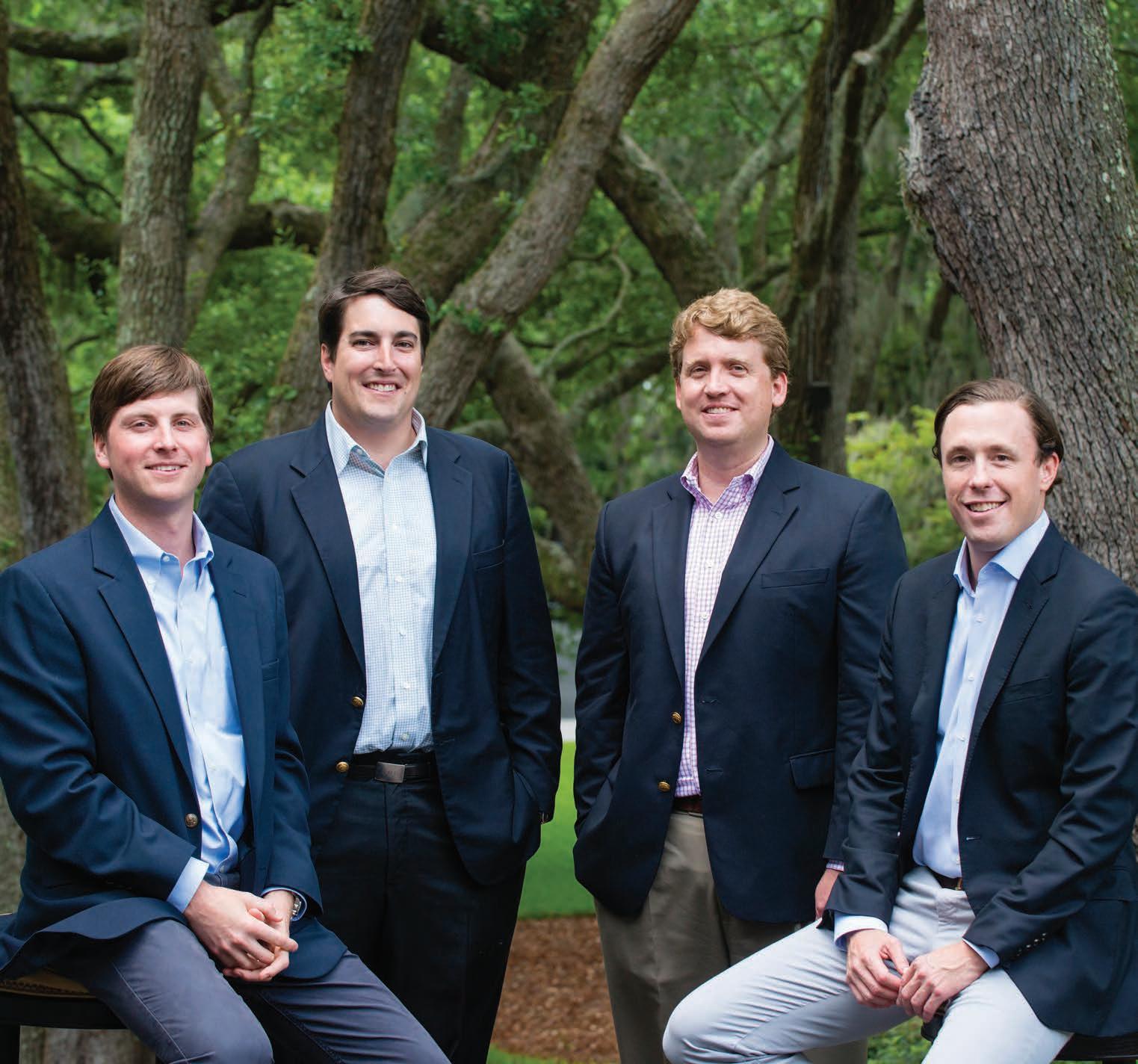 Will, Jordan, Patrick, and Chris in 2013 | Photo by Patrick O’Brien
Will, Jordan, Patrick, and Chris in 2013 | Photo by Patrick O’Brien
Q What are some highlights from the last ten years?
A Chris: It is tough to narrow it down! In our first meeting with the real estate team, Don Rutledge told us that he had “ties older than you boys.” That certainly sticks out! It was incredible to watch Ocean Park take shape as our first major neighborhood development. Seeing it activated with the opening of the Marsh House and the first few years of Party in the Park with Darius Rucker were both very gratifying. Partnering with Mike Lata to reimagine the Beach Club restaurant into the B-Liner was another highlight. When the pandemic hit in 2020, we witnessed the resilience and resourcefulness of our Kiawah team members. I am proud to say that we retained one hundred percent of our staff and management team throughout the pandemic. The 2021 PGA Championship was an absolutely incredible experience and electric atmosphere. You could feel everyone’s energy. And finally, breaking ground for MUSC [Health Sea Islands Medical Pavilion] after seven years of planning and lobbying was a significant achievement. I also think the launch of Advance Kiawah was another important milestone for the community, and we continue to work towards making Kiawah a more diverse and inclusive community and workplace.
Jordan: A few come to mind! When we first arrived, property values at Cassique were extremely soft and there was no building activity. Now, pricing in Cassique is higher than many other areas on the Island. I’m very proud of that. As Chris mentioned, the creation of Ocean Park and the design of Marsh House are certainly highlights. It has also been exciting to imagine and create multiple new neighborhoods and launch the built-for-sale program.
A Patrick: We were thrilled to be the new owners of Kiawah Partners. Our main goal was to expand the trajectory of
the previous ownership group. We wanted to continue to elevate Club amenities and the experience throughout the island wherever we could.
Jordan: The goal was not to mess it up! Everything had been executed so well, and we wanted to keep everything at the highest quality. As I mentioned before, we did want to shift the mindset toward the built-forsale program. Buyers are not as interested in building a fully custom home, and we wanted to respond to that. We also wanted to expand programming at the Club and continue to push the quality of food and beverage.
Will: Jordan said it perfectly. I remember our first day on the Island as the new stewards. Our goal and mission was to simply not screw it up. We had a vision of enhancing the island development while remaining focused on the “Designing with Nature” concept. What we’ve been able to accomplish over the past ten years has been very rewarding. I still pinch myself knowing that I have the opportunity to be a part of such an incredible place.
Chris: At a high level, we wanted to be great stewards of the land as the master community developer, while also achieving goals for our investors. But yes, the mantra was “don’t screw it up.” Kiawah had a long history of great design and environmentally sensitive development under the stewardship of Buddy Darby, Leonard Long, Charlie Way, and Frank Brumley. After getting our legs underneath us, our mantra shifted to continuing the legacy of those who came before us and the “Designing with Nature” principles while also weaving in our own best practices, new programming, progressive design, and some “outside of the box” ideas as well.
Q How has the original master plan shaped the evolution of the Island in the last ten years?
South Street Partners took over as master community developer more than ten years ago, and the Island has seen incredible change and growth during their tenure. Will Culp, Jordan Phillips, Patrick Melton, and Chris Randolph look back at some of the most memorable moments of the last decade.
A Patrick: It has truly been our roadmap. We have followed it closely.
Jordan: The original master plan was so thoughtful, and all developers have actually reduced the allowed density from that initial approval from Charleston County. It proved to us that reducing density well below allowable levels creates more long-term value for all stakeholders. Having people like Mark Permar, who has been involved in the planning of the Island since 1979, on our team has proved invaluable.
Chris: Everything we’ve done over the last ten years from a development perspective has been in keeping with the original master plan. The original master plan granted approval for seven thousand units and extensive commercial and hotel development and the Island is on a path to end up having just over five thousand units.
Will: The vision established for the development of Kiawah drew us to this opportunity ten years ago. And that original vision has certainly guided and shaped our development plans over the years.
Q What do you think are your greatest contributions to the Kiawah community?
A Patrick: One that really stands out is the Ocean Park community. The neighborhood encompasses many of our development philosophies. We were able to design custom lots of varying widths throughout the neighborhood, while taking into account the large number of live oaks and picking the ideal building envelopes nestled between them. We built a beautiful park with walking and biking trails throughout, plus an incredible amenity in the Marsh House. The more than 70-acre park is the first new park on Kiawah since Night Heron was built. We built a cluster of homes around the amenity with a lock-and-leave concept that was strongly received. And overall, we significantly lowered the density from what was originally entitled.
Chris: I think our greatest contribution to Kiawah has been extending our owner’s time on the island. We did so by creating places and programming that have attracted
a younger demographic to purchase a home earlier, while at the same time bringing much-needed health care and housing options for our older owners allowing them to age in place for longer.
Jordan: And we expect the creation of the MUSC Health Sea Islands Medical Pavilion, a twenty-four hour facility, to have a huge impact on long-term property value. We hope it will shift the community to something closer to a fifty-fifty primary/secondary [home] ratio.
Will: Kiawah is more than a place—it’s a close-knit community. I think our greatest contribution over the years has been to provide a safe, fun, and, most importantly, memorable experience for all who call Kiawah home or home away from home.
Q Explain Designing with Nature. Why do you think it is so important?
A Chris: Designing with Nature is vitally important to Kiawah’s ecologically sensitive habitat. The “Designing with Nature” mandate allows homeowners to live in harmony with the flora and fauna that make Kiawah so special. From an investment perspective, this approach to development has created significant value for our homeowners, as evidenced by the premium the market is willing to pay to live on Kiawah versus some of our regional and national competitors who don’t necessarily follow the same standards of design and development.
Jordan: Designing with Nature has been the core ethos from day one. This coastal maritime forest landscape is such a unique, beautiful setting. Nature has always been, and will always be, everyone’s primary takeaway when they visit Kiawah.
Q What is one of your favorite personal memories on Kiawah?
A Will: Honestly, watching my kids grow up coming here and the many holidays we’ve been fortunate enough to spend on the Island—all of them hold a special place in my mind. We lived on Kiawah for most of the pandemic and watched how this community came together during
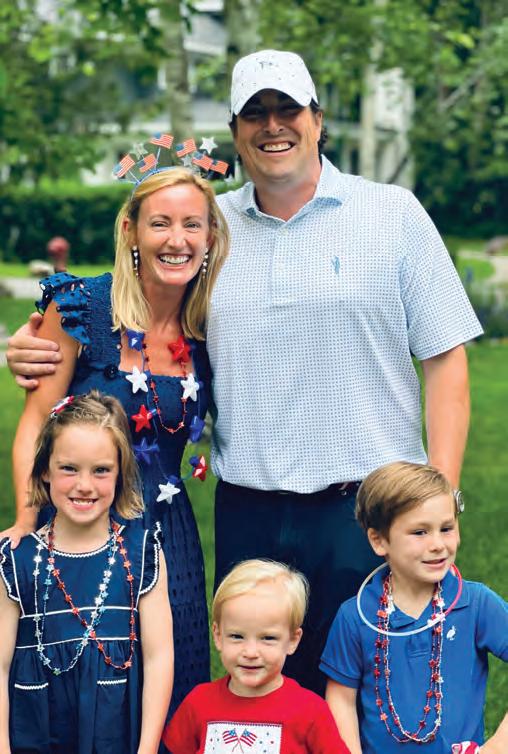

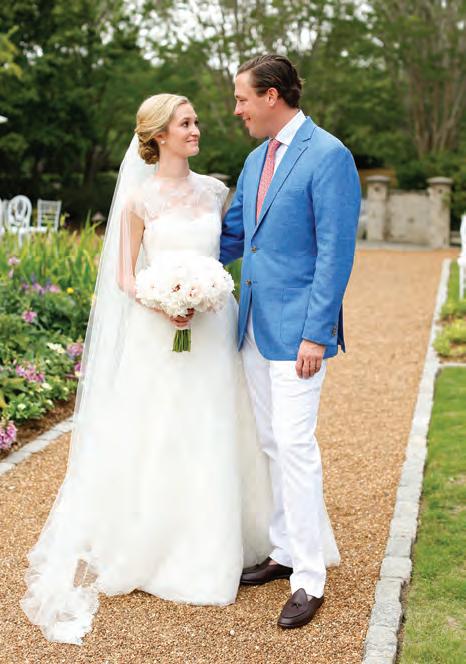
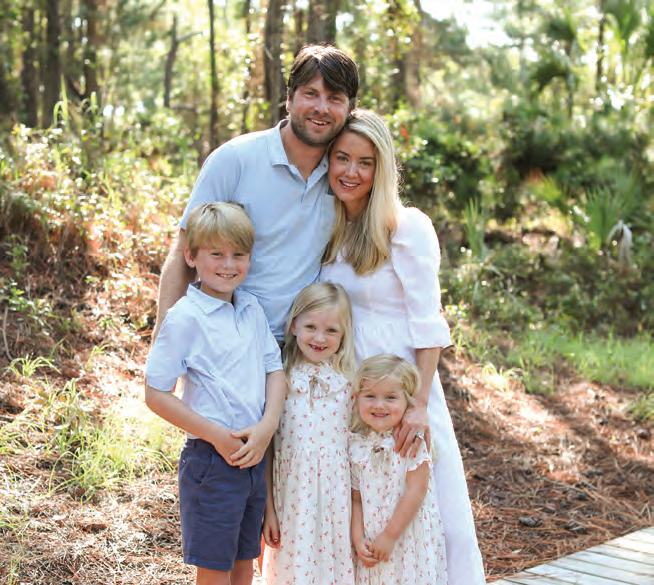
a time of intense stress to support each other. Witnessing the transformation of the staff and membership during a time of crisis was an inspiration to me personally.
Jordan: For me it was the first Party in the Park with Darius. What started as a small event our second year turned into a massive production. One of my fondest memories is seeing so many families enjoying themselves that first year.
Chris: My wedding weekend in May of 2018 is definitely my most special memory. Audrey and I were married at Cassique, the same place we had our first date three years prior, in front of our friends, families, and Kiawah family. There isn’t a week that goes by that we don’t reminisce about that weekend or have someone bring it up to us in conversation.
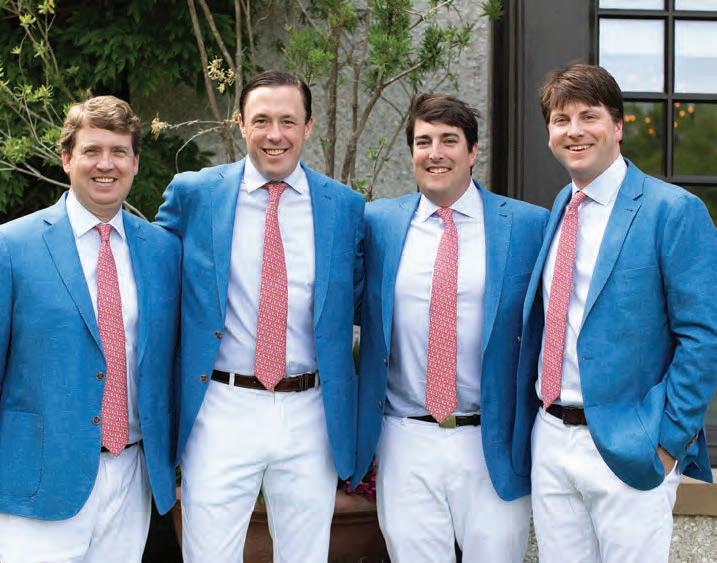
Patrick: One of my favorite memories was when I took my daughter, Sydney, fishing on Kiawah for the first time. She was five years old then, and the largest fish she had ever caught at that point was a foot-long bass off of her grandparents’ dock. Elliot Hillock, who grew up fishing on Kiawah, took us to one of his favorite ponds. It was full of huge red fish. Sydney caught one from the elevated bridge and fought that fish for what seemed like forever. A gator eventually became aware and decided it wanted the fish and began pursuing it too. She finally reeled it in, and we were able to take a quick photo. The fish was almost as big as her! She was so proud of herself and had earned her first great fishing story, complete with an alligator. It was a very special day for both of us.
Q What is an experience with an employee or property owner that has shaped the way you see the Island?
A Will: We have made our employees a priority over the years, and that’s something I’m very proud of. Our employees and leadership are the reason for our collective success over the past ten years. I have a vivid memory of meeting Ms. Barbara at the Beach Club during our first summer of ownership. Watching how she interacted with the members, and the generational impact she had on families, was something very special to witness. My kids are now ten years older than they were then, and to see their relationship with Ms. Barbara and many others today is truly special.
Chris: Learning about the history of Kiawah through the eyes of property owners and visionaries like Mark and Diana Permar has absolutely shaped the way I see the Island. They have been a great resource and the ultimate sounding board for many of our ideas (some crazier than others) as they draw on so much history and firsthand experience.
Q Why do you think the Kiawah community is so special?
A Will: It’s two-fold. It is the unique and intentional development design that proves that development can keep with the core philosophy of Designing with Nature. No other island or development exists that matches the commitment that Kiawah has for the natural environment. Second, it is the community of people, both property owners and staff, who serve the same mission of making Kiawah the best community it can be. Jordan: I think it is the intentional planning and quality of design. That has been the philosophy from day one. Bringing an architect like Robert Stern down from the Northeast [to design The Beach Club] was unheard of at the time, but the developer has always endeavored to set a high standard. In turn, this encouraged high-quality home design and strong property values.


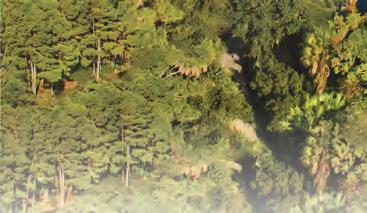














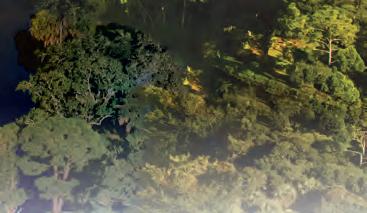








DELIVERING RAPID EMERGENT CARE TO YOU.
For the latest updates on the Sea Islands Medical Pavilion, visit musc.co/SeaIslands or scan the code.
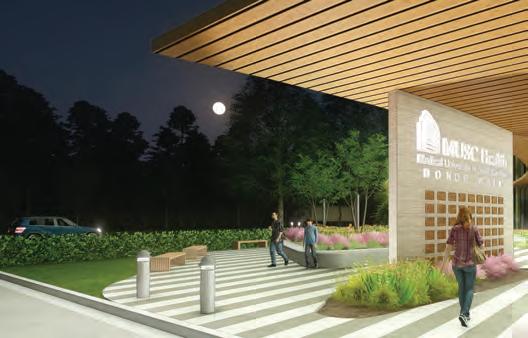



For more information please contact: Brian Panique, Senior Director of Principal Gifts
panique@musc.edu.






In 2012, tight end Greg Olsen was traded from the Chicago Bears to the Carolina Panthers. Olsen and his wife, Kara, arrived in Charlotte just as they found out she was pregnant with twins.
“Our world was turned upside down the off season of 2012,” remembers Olsen. “Shortly thereafter, we found out that our son, TJ, would be born with a critical congenital heart defect.” TJ had hypoplastic left heart syndrome, and the left side of his heart hadn’t developed properly in vitro and was subverting the flow of blood. The Olsen’s world was thrown into chaos. The doctors at Levine Children’s Hospital operated days after Kara gave birth, and by TJ’s second birthday, he had undergone three major surgeries.
The most difficult part of the experience, the Olsens found, was coming home from the hospital each time. “When a child is discharged from the hospital, it’s wonderful,” he says. “But now all of a sudden it is real. You no longer have doctors and nurses and specialists taking care of your child around the clock. And it’s very scary.”
Moved by this experience, Kara and Greg founded The HEARTest Yard, a charity dedicated to children born with congenital heart defects and, at the outset, particularly focused on funding in-home care after children are released from the hospital. Levine Children’s Hospital, where TJ underwent his critical surgeries, became their proving ground. Ten years later, they have donated over five million dollars to the children’s hospital and helped build a state-ofthe-art pediatric cardiology center.
The Olsens recently completed a house on Kiawah Island and partnering with MUSC in Charleston was an obvious next step. MUSC boasts one of the largest pediatric cardiac units in
South Carolina and recently partnered with Kiawah Island to build the new MUSC Health Sea Islands Medical Pavilion. The union of the three—South Street Partners (Kiawah Island), MUSC, and The HEARTest Yard—made sense.
Olsen stands on a stage in the River Course ballroom, speaking to a packed house. Tonight is the first annual HEARTest Yard fundraising event in partnership with South Street Partners. The Olsens and their team hope to raise enough money to kickstart an in-home nursing program at MUSC Shawn Jenkins Children’s Hospital. Tonight’s event features a silent and live auction, dinner, and a series of musical performers. Tomorrow will mark the first annual HEARTest Yard golf tournament at the River Course.
“We continue to think larger and larger,” says Olsen into the microphone. “How do we continue to grow and improve our impact on more families in a larger region? And of course, we were recently given a new motivation. Yesterday marks the one year anniversary of TJ’s heart transplant. He’s here tonight. TJ put your hand up.”
TJ, a lanky, sandy-haired kid of twelve, stands, and the room erupts into applause and whistling. “This is our motivation to continue to grow The HEARTest Yard, not only regional programs but also one day to a national brand,” says Olsen. “And MUSC is step two in that process.” Every dollar raised tonight will go directly to the Shawn Jenkins pediatric cardiology unit. Though MUSC will use the money raised for
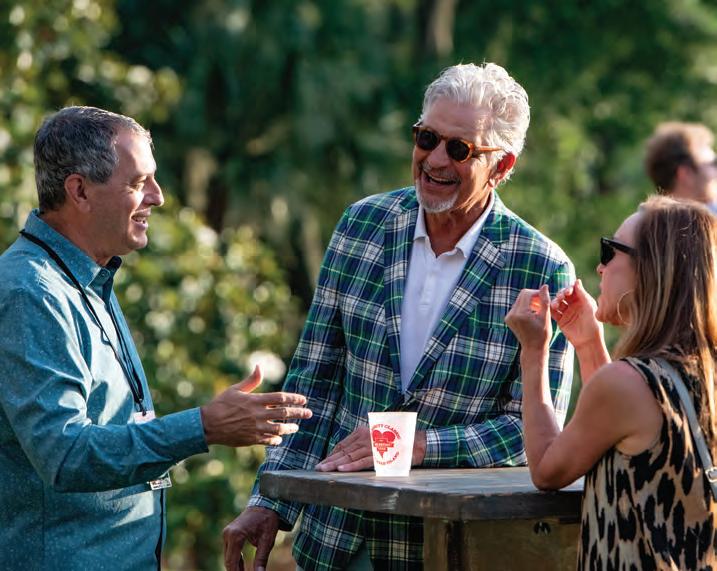
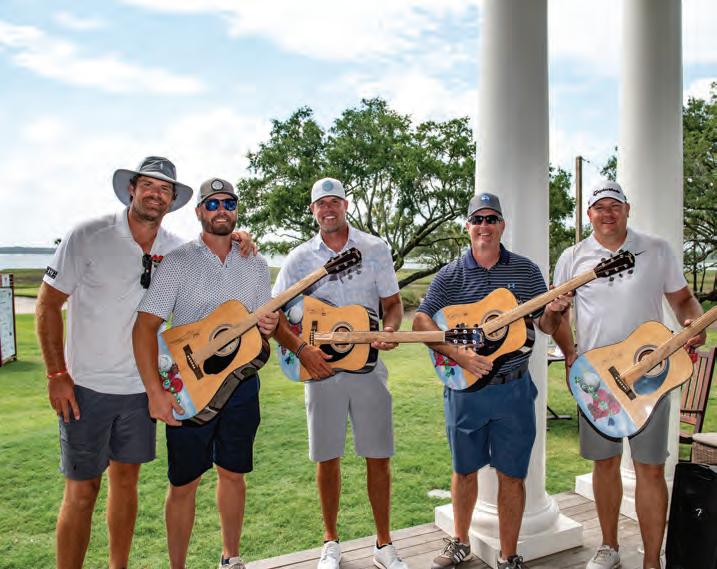




In total, the HEARTest yard raised over $300,000 this weekend. And really this is just the beginning. As the organization grows, so too do the events, the opportunities to get involved.
various smaller initiatives, the vast majority will fund the athome nursing program, an average of $4,400 paying for one hundred hours of nursing.
Rather poetically, Olsen concludes his speech with the big picture. “This is not the Olsen story. There are a lot of families out there who have a story like TJ. This is a community, a collective group of people who share a very similar journey to us.” On that note he welcomes Dr. Eric Graham to the stage. Dr. Graham is a professor of pediatrics and Children’s Heart Program chair at MUSC. Olsen’s speech and the purpose for the event have moved Dr. Graham. He begins by commending the Olsens and the HEARTest Yard team for their work in Charlotte. “Heart disease remains the number one cause of death in children with birth defects in the United States,” he says. “And these children and their families still go through enormous physical, emotional, and financial stress and hardships. We must do better.”
Dr. Graham goes on to tell the story of a local family, the Smiths, who lost their baby girl to the same congenital heart defect as TJ’s. The Smith family, like the Olsens, wanted to make a difference in pediatric cardiology, and their gift to MUSC helped form an emergency response system. And since then, in over seven years, they have yet to lose a child to a congenital heart defect. The point, everyone realizes, is that programs like this work. Donations to these institutions, which are so often stretched thin, can make a dramatic difference. The audience, for the duration of Dr. Graham’s story, has been transported to the despair, trauma, and fear of both the Olsen and the Smith’s experiences.
The rest of the evening is a whirlwind. The live auction gets a bit rowdy as the stakes get higher, and there is a considerable amount of good-natured goading between
guests. Will Culp, of South Street Partners, adds golf and accommodation packages as the bidding gets higher. There is an electricity in the room. “This is above and beyond,” says Molly Ansbro, executive director of the Olsen’s parent foundation R2R: The Greg Olsen Foundation. “We’ve never done anything at this scale before, and South Street Partners has been such an incredible partner.” Later, Mark Bryan of Hootie and the Blowfish, Thomas McClary of the Commodores, Ryan Cabrera, and myriad others play in fifteen-minute increments, a revolving door of musical guests.
The next day, the River Course is brilliant green in the early summer sunshine. Olsen zips around the course in flip-flops all morning, ribbing golfers and keeping things moving. After the tournament finish, everyone gathers at the clubhouse for cocktails and an award ceremony. Olsen and his team hand out various “trophies” to the winners—a guitar signed by Thomas McClary, football helmets signed by Olsen as well as NFL players Jonathan Stewart and Luke Kuechly.
In total, the HEARTest yard raised over $300,000 this weekend. And really this is just the beginning. As the organization grows, so too do the events, the opportunities to get involved. Currently, the HEARTest Yard hosts five large events throughout the year in addition to fundraising through private donors and corporate sponsorships. As the program grows at MUSC, the team hopes to increase fundraising in the Lowcountry.
The 2023 HEARTest Yard Celebrity Classic at Kiawah Island will take place June 11-12. Contact Executive Director Molly Ansbro at mansbro@r4r.org for event information and sponsorship opportunities. Event Photos by Matt Glac.

 Chef Jordan Snider (far right) with his Coupe du Monde de la Pâtisserie teammates and their tasting juror, Andy Chlebana (far left).
Chef Jordan Snider (far right) with his Coupe du Monde de la Pâtisserie teammates and their tasting juror, Andy Chlebana (far left).
Whether competing on the international stage, rendering chocolate into fairy-tale sculptures, or creating a perfectly crusty croissant, The Sanctuary Executive Pastry Chef Jordan Snider operates with one goal in mind—the pursuit of perfection.
STORY by BRYAN HUNTER KIAWAH ISLAND GOLF RESORTJordan Snider appears remarkably refreshed considering he’s just returned from an international flight. In fact, he seemed particularly jaunty despite the time change and a grueling travel schedule. The Executive Pastry Chef for The Sanctuary at Kiawah Island Golf Resort feels extraordinarily invigorated because he and his two teammates for Team USA have just secured a top-ten finish at the Coupe du Monde de la Pâtisserie (World Pastry Cup) just completed in Lyon, France. Considered the Olympics of pastry, the event pits the top pastry chefs from around the world against each other on national teams from Africa, Asia, Europe, the Middle East, and the Americas.
For anyone who has had the good fortune to visit The Sanctuary during the festive season, Snider’s participation on Team USA probably comes as no surprise as they have marveled at the enormous, fancifully wrought sculptures rendered entirely from chocolate and prominently displayed in the hotel lobby. Snider’s brainchildren, these sculptures involve massive amounts of chocolate and months of painstaking work on the part of the pastry team, all while balancing their regular schedules to create scrumptious pastries and desserts for all Sanctuary restaurants and events.
While Snider relishes creating in chocolate, for the competition in Lyon his sculpture was in sugar. He explains that climate really dictates the medium used. “Sugar is hygroscopic,” he says. “Given our humid climate, a sugar
sculpture would not last on display for a week, much less a month.” Chocolate is just the opposite, where the Lowcountry humidity keeps the chocolate from drying out.
For Snider, the journey from novice to world competitor has come full circle. Born in the Upstate of South Carolina, he grew up in Charleston. “I’ve always been very proud of where I’m from,” Snider says. “All my family’s roots are in the Carolinas, and that heritage runs deep in my core.”
But Snider recognizes it took sojourning out West, where he honed his craft at several esteemed restaurants, to gain a deeper appreciation for his hometown’s culinary tradition, while it also expanded his exposure to new ingredients, dishes, and techniques. “When I moved out West, I was really able to refine some ideas I was already working on, but then to be so lucky to return home and bring that experience and skill set to The Sanctuary—it’s such an honor, especially to share it with our guests at a place that I’ve always highly respected.”
Snider recognizes that the level of international competition he just endured does not appeal to a lot of pastry chefs. “Having brothers and sisters, competition has always been ingrained in me. Pushing the boundaries and looking at new techniques while also respecting tradition is central to a competition like the Coupe du Monde.” He also relates it to his upbringing in the South, Charleston in particular, where there is such a deep reverence for tradition, yet it is a place not stuck
in the past. Similarly, Snider has followed the Coupe du Monde for a long time, and he deeply values how it has evolved. “The same can be said of cuisine as a whole—it’s dynamic, which is great to see,” he adds. “It’s essential to respect tradition and where the technique came from, and we need to honor that.”
Snider describes the Coupe du Monde judges as people who have pioneered many of the techniques the teams were expected to demonstrate mastery of. “The goal is to execute those techniques even better than the judges can, because they pioneered them decades ago,” Snider says, “and now we have the benefit of having worked within the confines of that tradition while continuing to push the boundaries of those techniques.” Snider says that spirit dominated the competition—striving to excel the masters—and that that is part of what made being a part of it so intriguing. “To represent our country, but also to represent and pay tribute to all the people who have supported me, including the resort and our pastry team, I really wanted to do a good job and do the best I could.”
Now back at the resort, Snider has a renewed vigor for delivering to guests the very highest quality pastries and desserts made from the best ingredients. While he has noticed a recent trend towards tradition—a simplicity that suits him just fine—resort guests seem evenly divided in their inclinations either toward established standards or more adventurous creations. “Crème brûlée is our best seller both at The Ocean Room and Jasmine Porch,” Snider offers as an example, “but other guests crave something more exotic.”

“But the central idea that merges those two demands is our unwavering dedication to start with the very finest, freshest ingredients, then to render them into the very best pastries and desserts that we can possibly execute.”
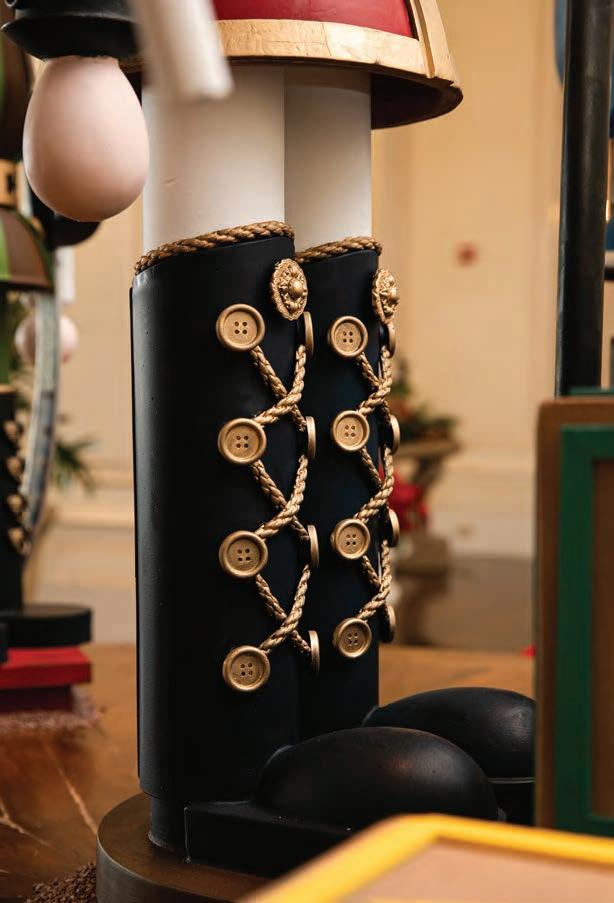
Now back at the resort, Snider has a renewed vigor for delivering to guests the very highest quality pastries and desserts made from the best ingredients.Opposite Page: Snider assembles the holiday chocolate sculpture in The Sanctuary lobby. | Right: The intricate details of the sculpture, which Snider and The Sanctuary pastry team craft entirely of chocolate.





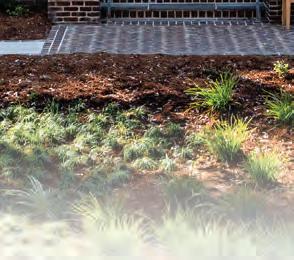









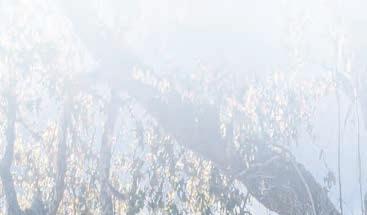

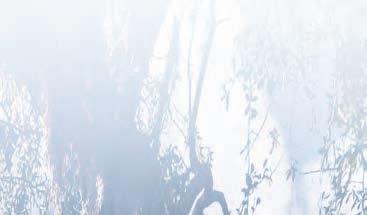









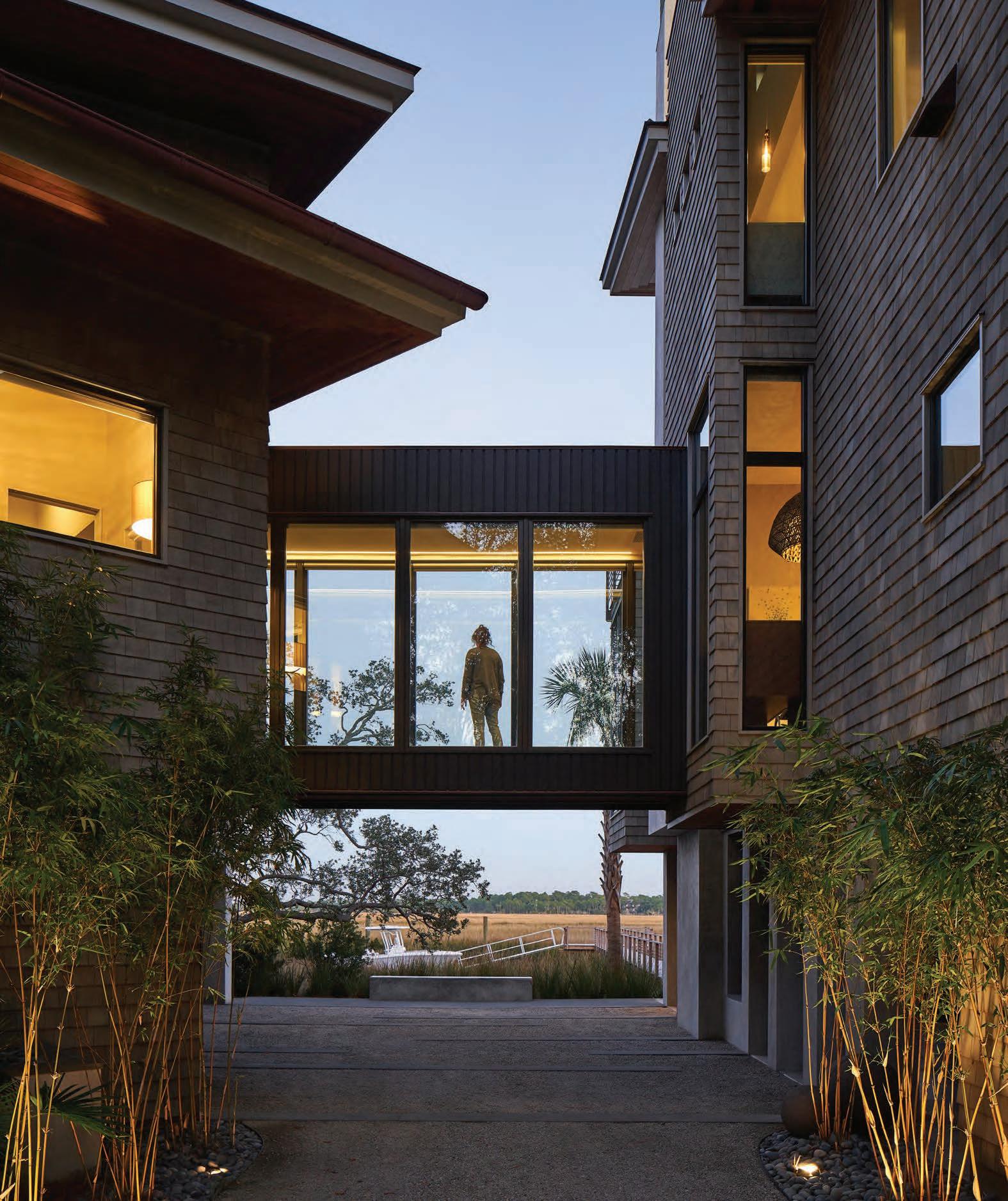



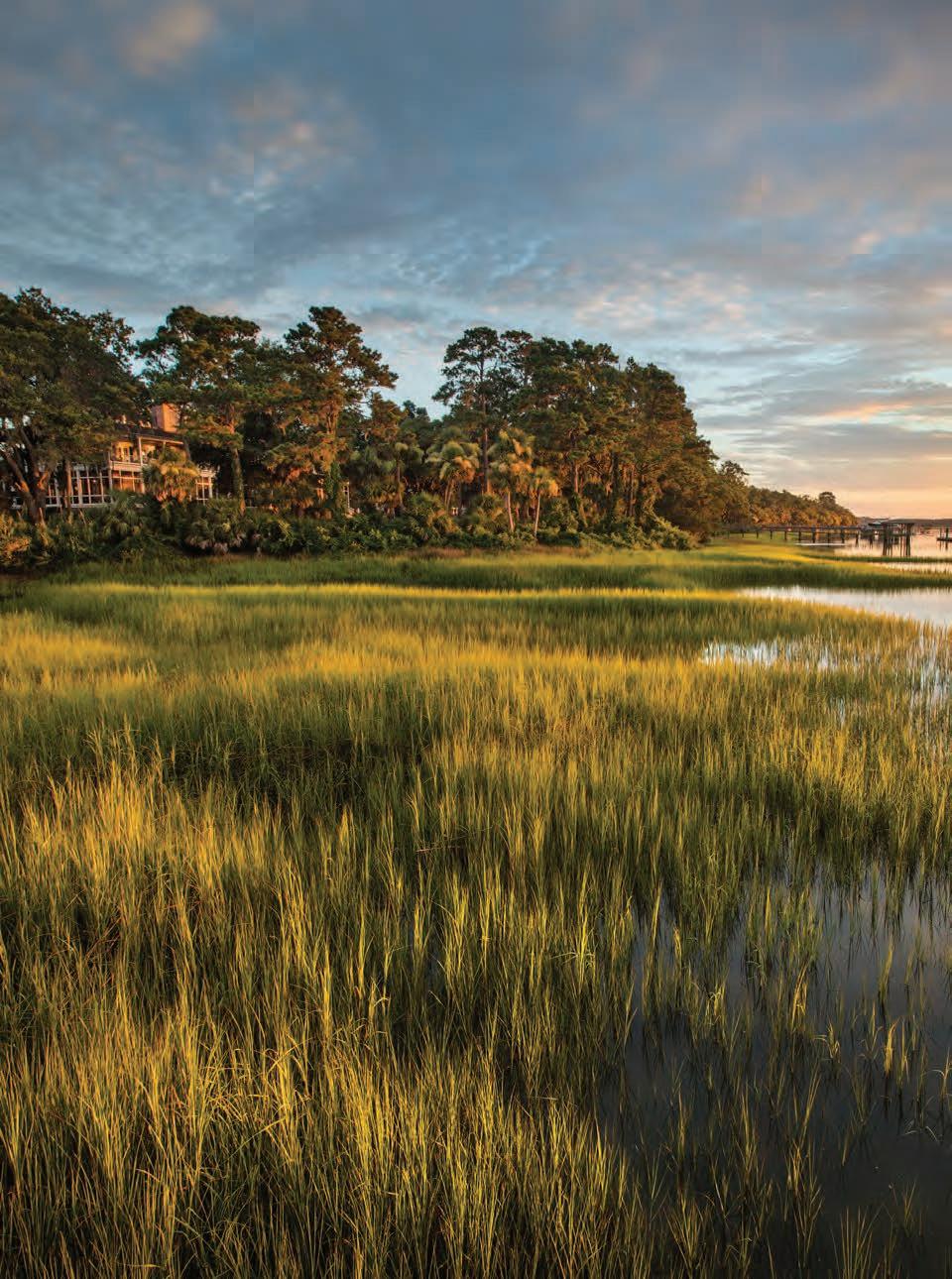
PLANNING ARCHITECTURE LANDSCAPE INTERIORS HARTHOWERTON.COM
 MOONLIGHT BASIN, YELLOWSTONE CLUB & SPANISH PEAKS, MONTANA
PALMETTO BLUFF, SOUTH CAROLINA
KUKI’O, HAWAII
MOONLIGHT BASIN, YELLOWSTONE CLUB & SPANISH PEAKS, MONTANA
PALMETTO BLUFF, SOUTH CAROLINA
KUKI’O, HAWAII


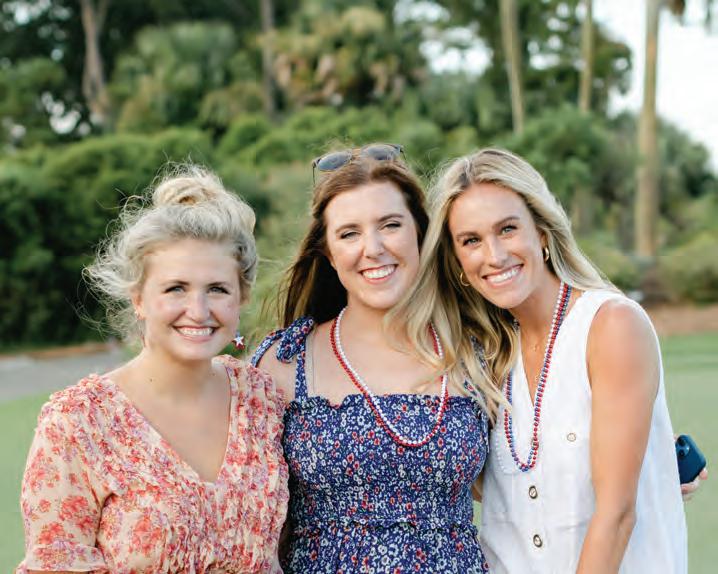
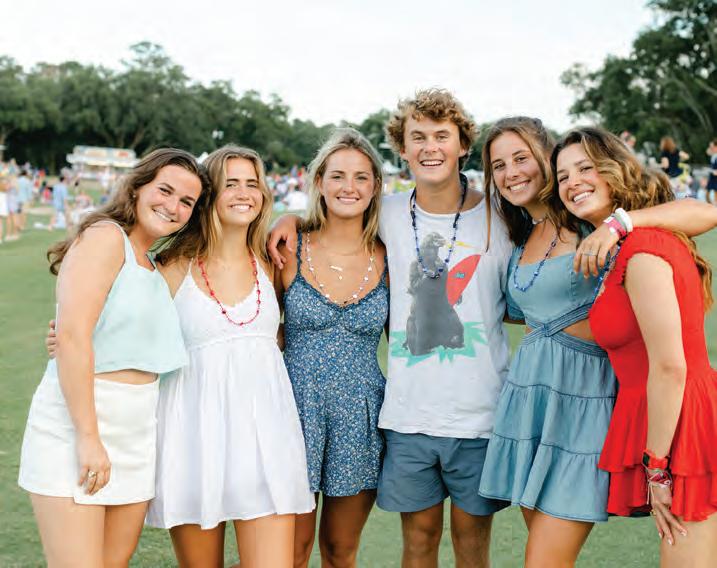

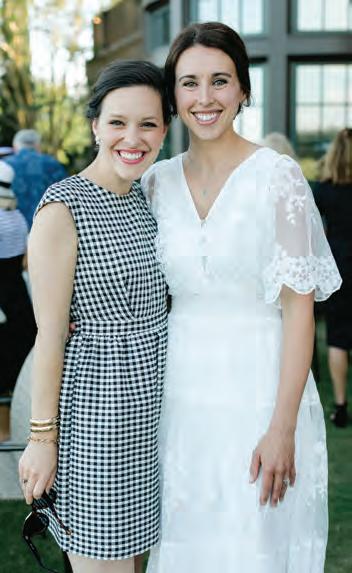
Throughout the year, Kiawah hosts dozens of soirees, outings, and activities. It was a fantastic 2022!




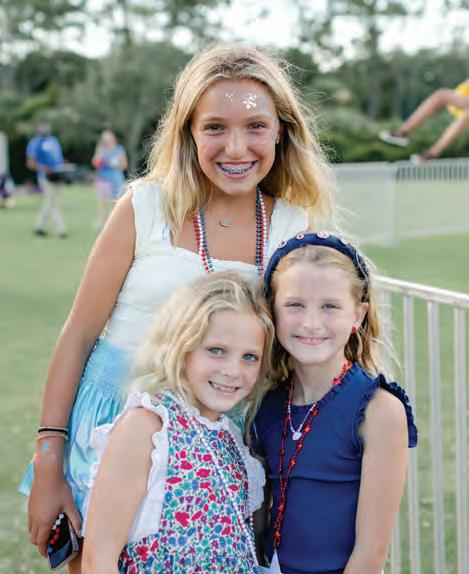
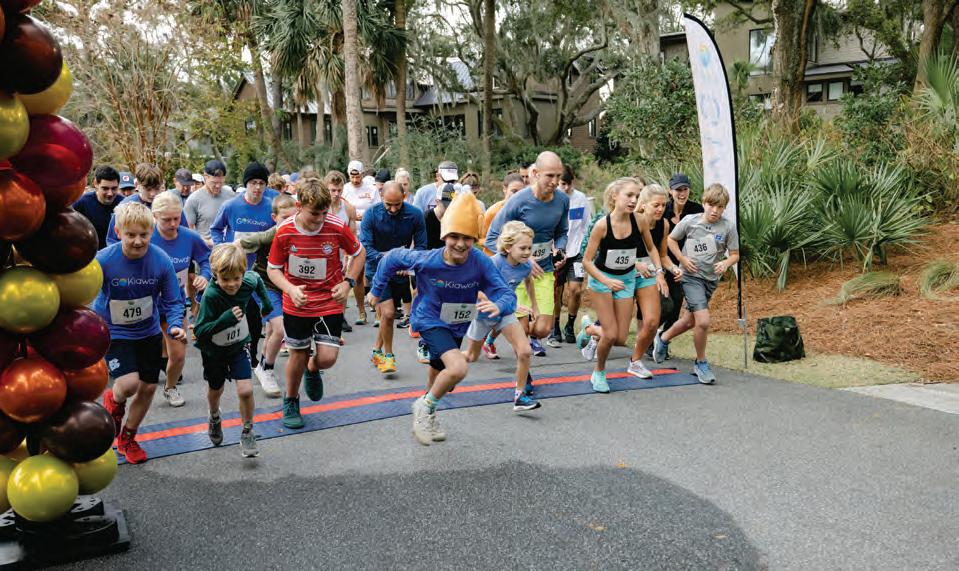

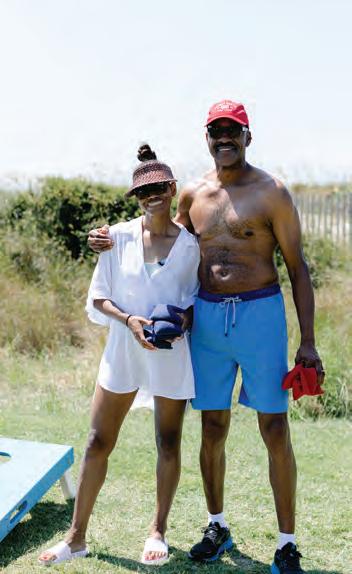
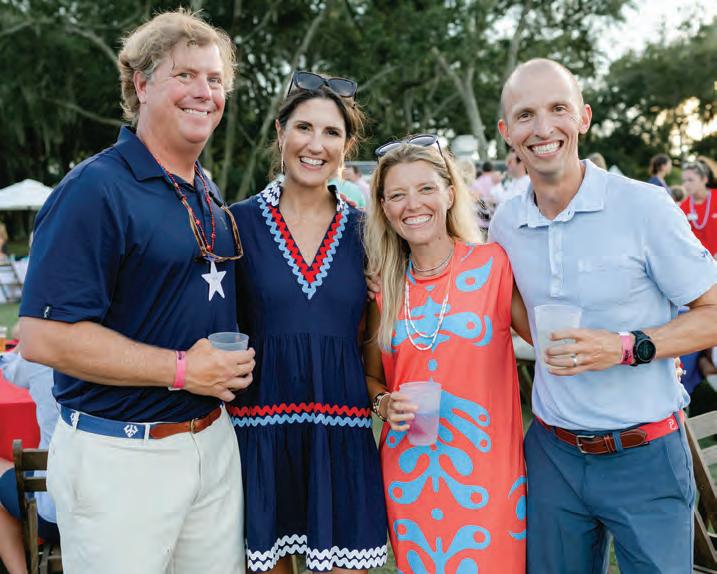






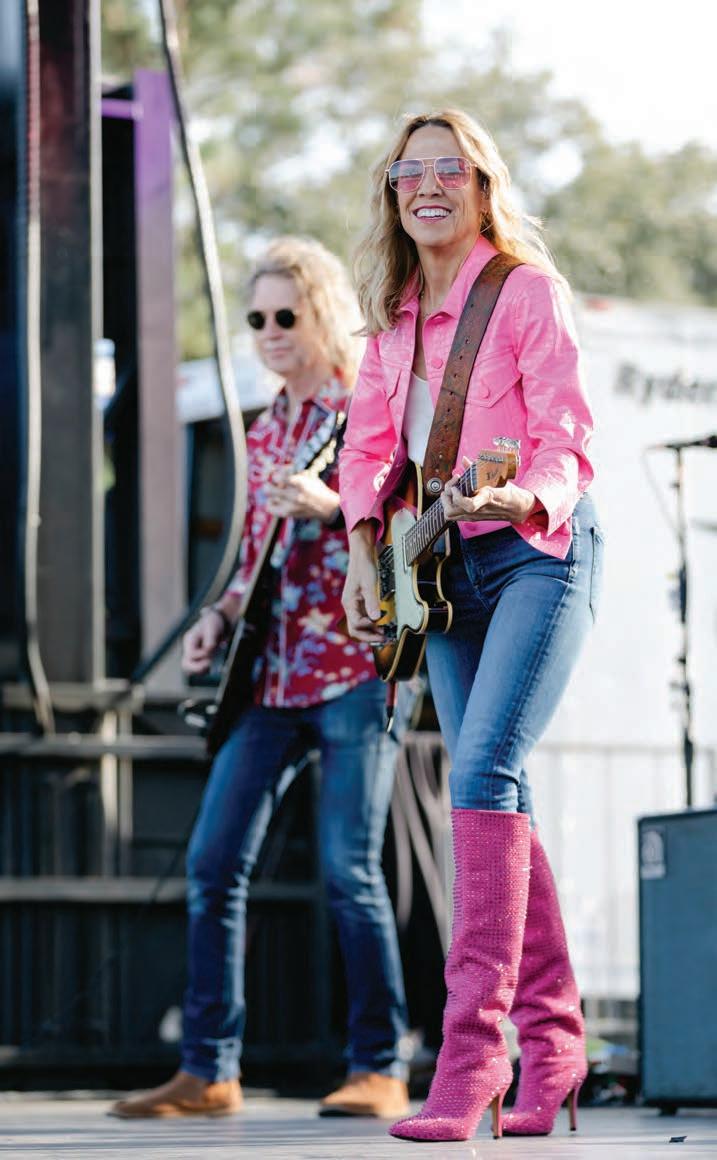
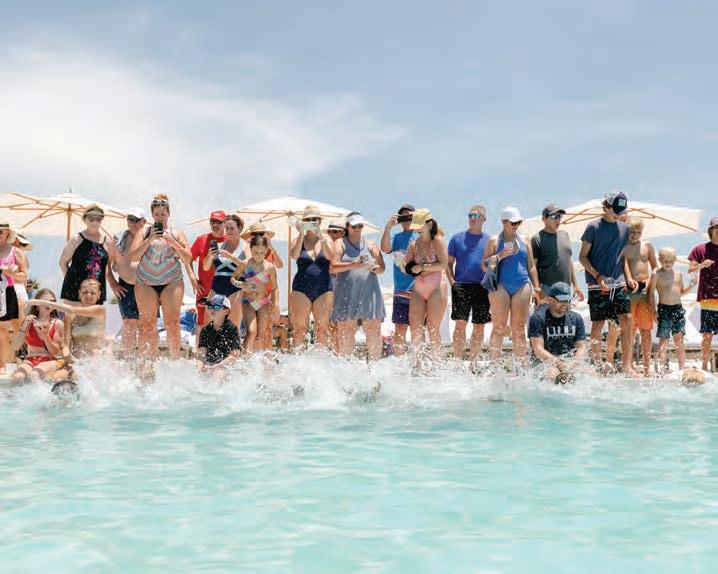
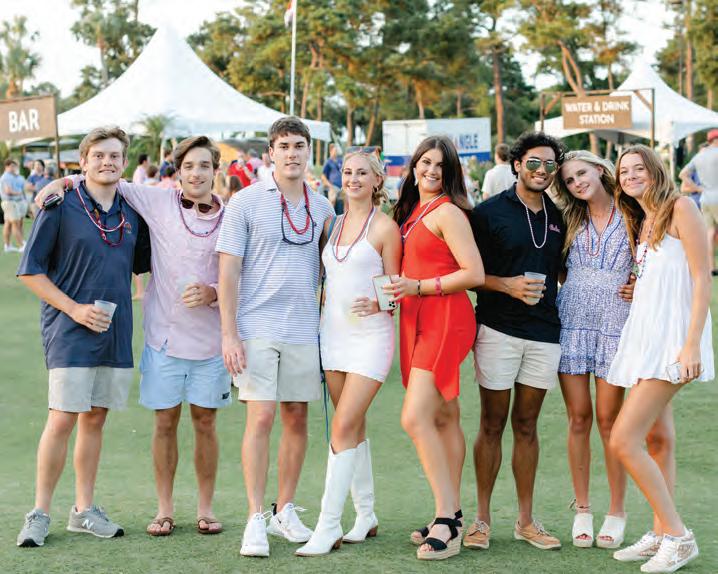

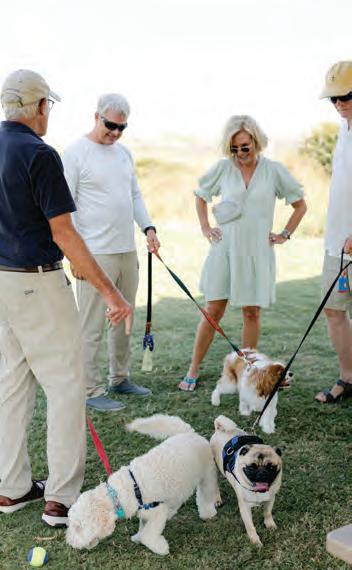

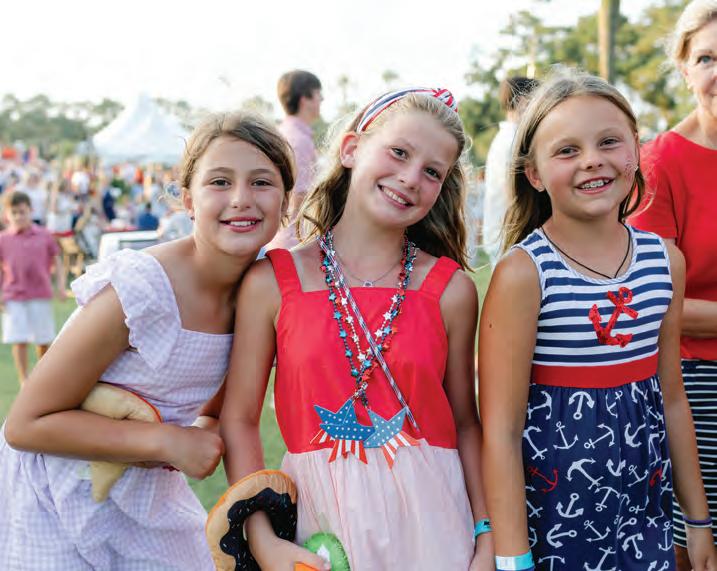
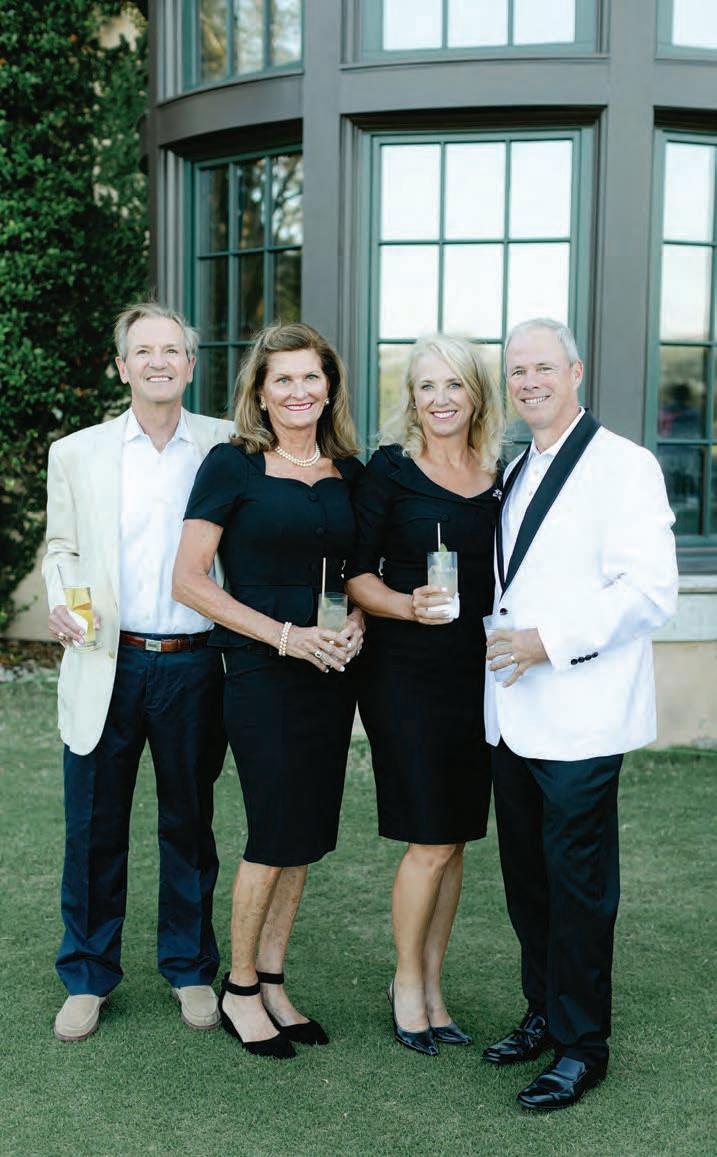
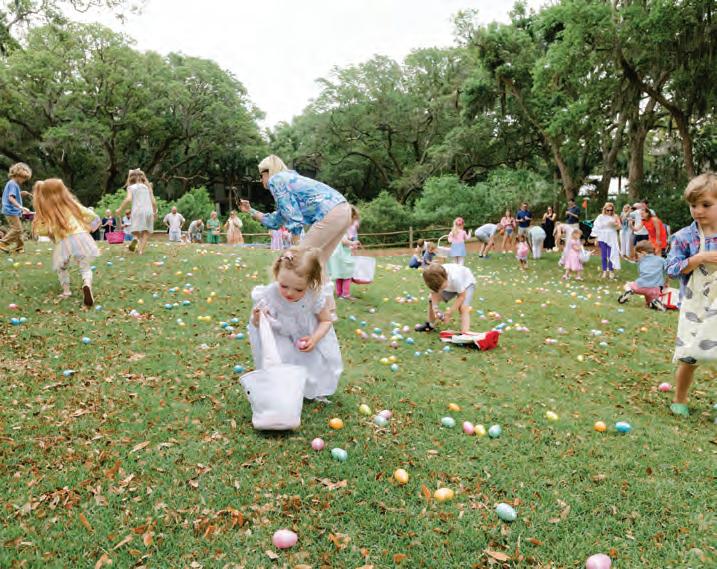
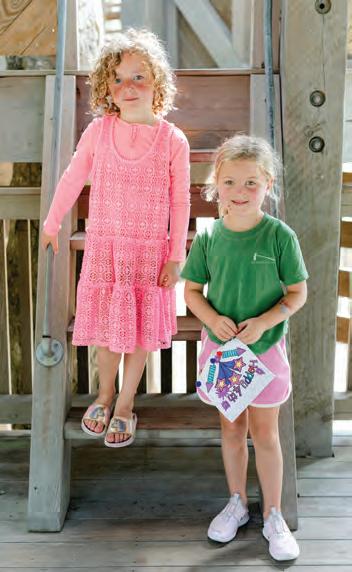
 RED, WHITE & BOOM
KIAWAH ISLAND CLUB KID’S TENNIS
ROCK THE RIVER
EASTER CARNIVAL
CASABLANCA NIGHT
GO KIAWAH DAY IN THE PARK
RED, WHITE & BOOM
KIAWAH ISLAND CLUB KID’S TENNIS
ROCK THE RIVER
EASTER CARNIVAL
CASABLANCA NIGHT
GO KIAWAH DAY IN THE PARK
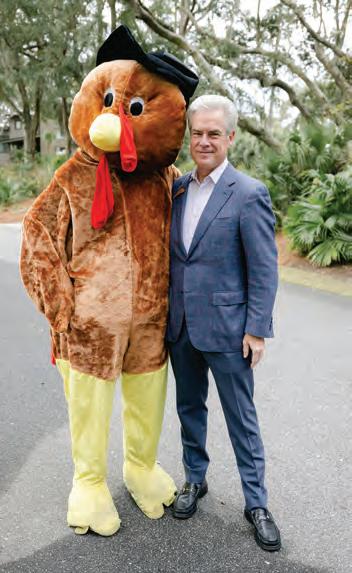





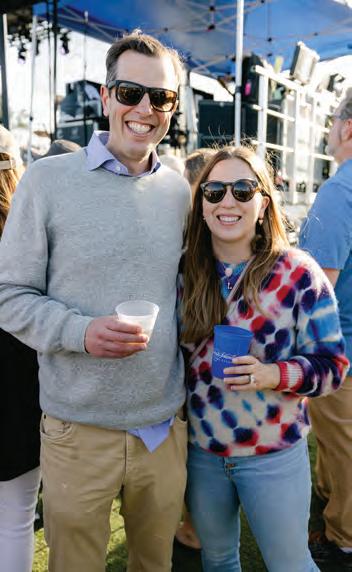

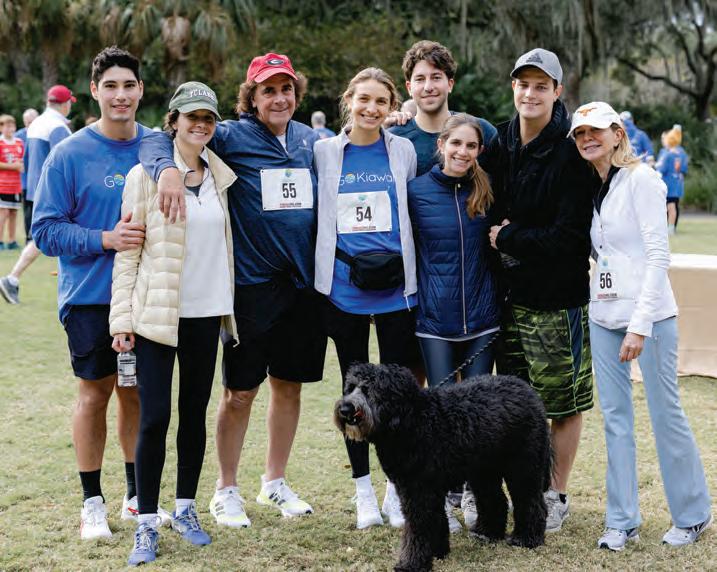



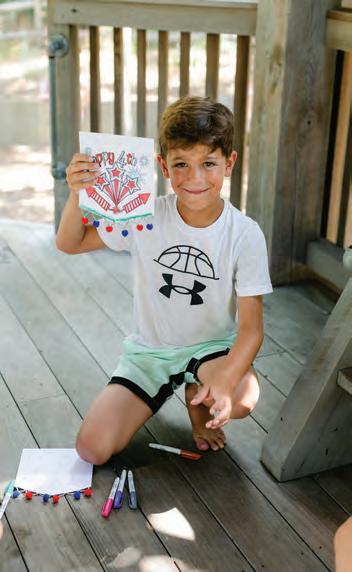





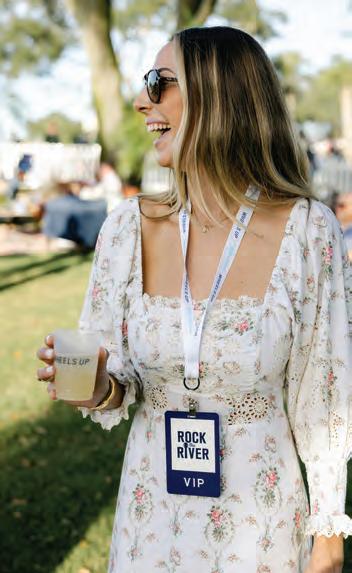
 EASTER CARNIVAL
ROCK THE RIVER TURKEY TROT
KIAWAH ISLAND CLUB KID’S TENNIS
EASTER CARNIVAL
ROCK THE RIVER TURKEY TROT
KIAWAH ISLAND CLUB KID’S TENNIS
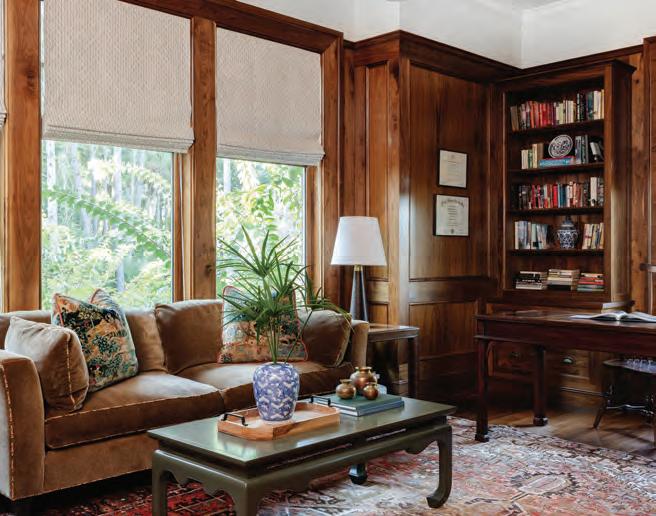
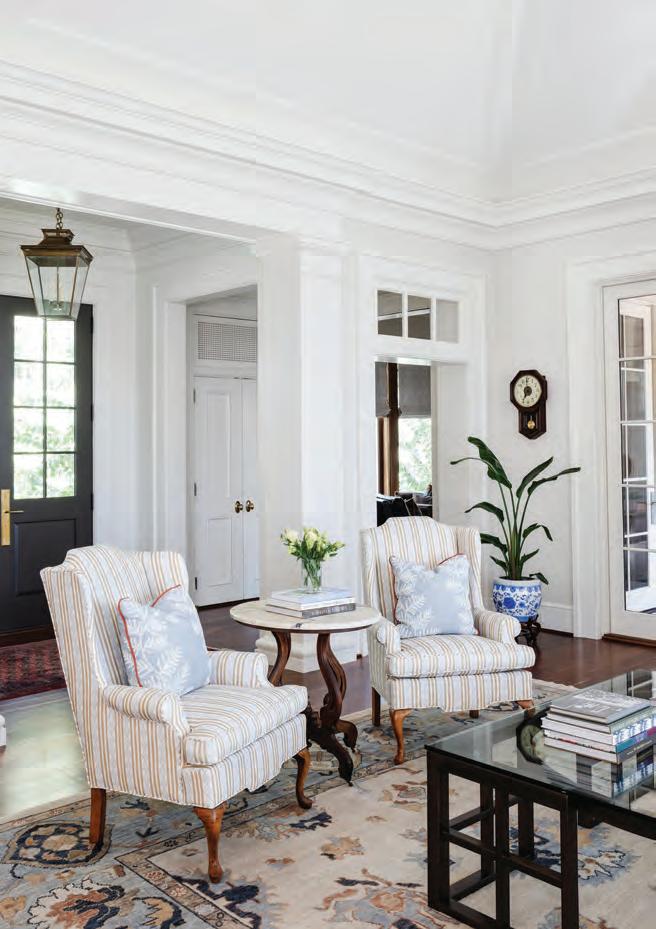




Lawyers in our Charleston office provide trusted legal counsel to local, national, and multinational companies. Backed by a fully integrated global platform, we offer unparalleled depth and breadth of experience to businesses and the people who own and manage them. From Charleston to London to Melbourne, we deliver innovative and practical legal counsel.
K&L Gates LLP. Global counsel here in Charleston and across five continents. Learn more at klgates.com.
Matt Norton, Partner 134 Meeting Street, Suite 500 Charleston, South Carolina T: +1.843.579.5634 matt.norton@klgates.com
Alexandre Fleuren Interiors........................ 23
Anderson Studio.........................................165
Anglin Smith Fine Art..................................65
Aqua Blue Pools.............................................6
Architecture Plus LLC.................................163
Barrow Building Group................................27
Barrow Interiors...........................................69
Buck Lumber.................................................67
Buffington Homes, L.P. .................................3
Buist, Byars & Taylor..................................163
Cobb Architects, LLC....................................97

Croghan’s Jewel Box.....................................22
D. Stanley Dixon Architect...........................15
Dolphin Architects and Builders...................11
Epic Development Group...............................19
Ferguson.....................................................105
Four Corners Building Supply....................162
GDC Home....................................................13
Gold Creations............................................101
Grossman Building Group..............................4
Hart Howerton............................................153
Henselstone Windows & Doors.....................17
Hood Hargett & Associates...........................68
Hudson Designs............................................26
K&L Gates...................................................164
Kelly Caron Interior Design.........................24
Kiawah Island Real Estate..................FIC, BIC
Kiawah Island Golf Resort.................137, 150
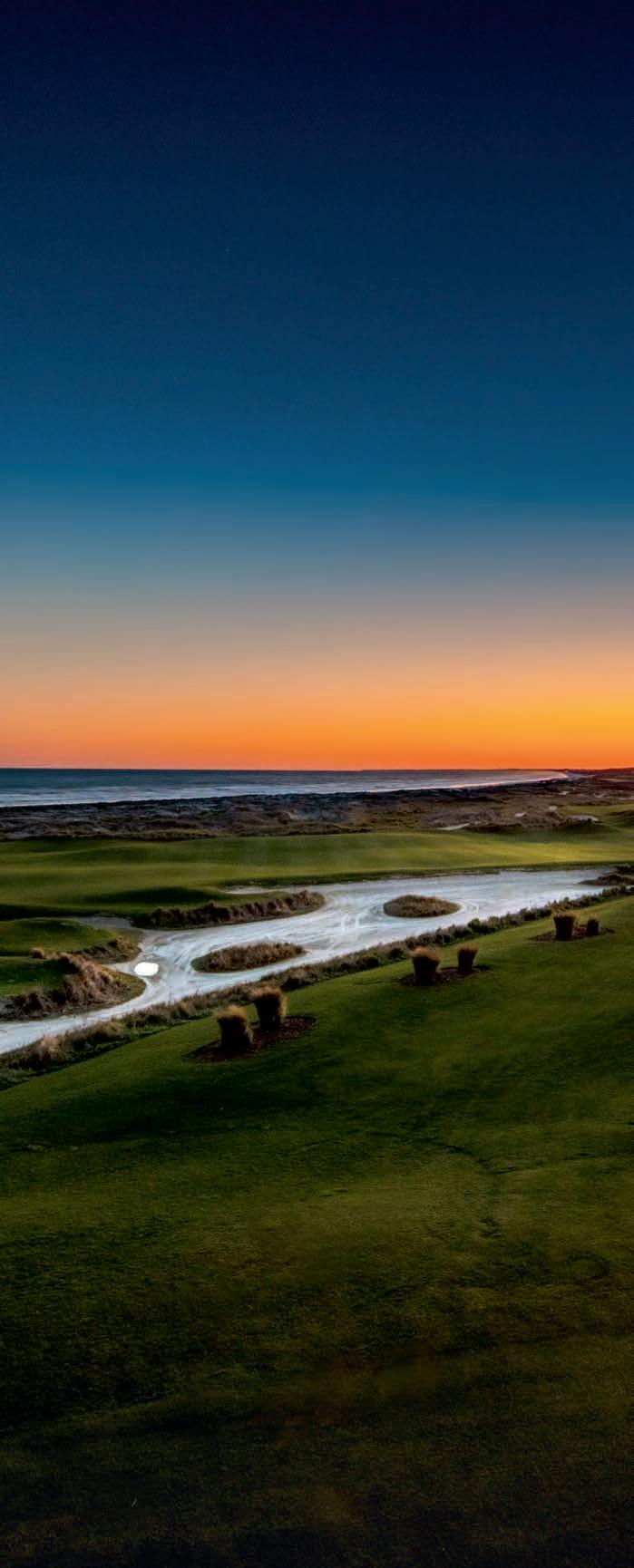
Kingswood Custom Homes.............................9
Knight Residential Group...........................139
Kristin Peake Interiors...................................2
M. Dumas & Sons........................................20
Mangan Inc..................................................21
Margaret Donaldson Interiors.....................63
McDonald Architects..................................167
MHA Design LLC..........................................66
MUSC Health..............................................138
R.M. Buck Builders.......................................25
Scout Boats.................................................151
Seafields at Kiawah Island.........................168
Seamar Construction Group......................136
Shope Reno Wharton Architecture.................5
South Street Partners........................106, 107
Tammy Connor Interior Design.................135
The Steadman Agency....................................7
Three Oaks Contractors..............................104
Thomas & Denzinger..................................152
Vinyet Architecture.......................................64

Not long ago, Kiawah was a sleepy barrier island, dense with maritime jungle and crisscrossed by a few narrow dirt roads. In the last forty years, the Island has matured into a extraordinary community, praised for its architecture, golf, amenities, and most of all, for its pristine natural landscape.
Designing with Nature has been a guiding principle since the early days of development. The original Kiawah partners recognized that the natural environment was essential to the longterm health of the community, that building within existing tree canopies, leaving habitat for wildlife, and protecting sensitive dunescapes would affect the integrity and authenticity of the people that live here. Three decades later, this ethos is woven into the very fabric of life on Kiawah Island.
